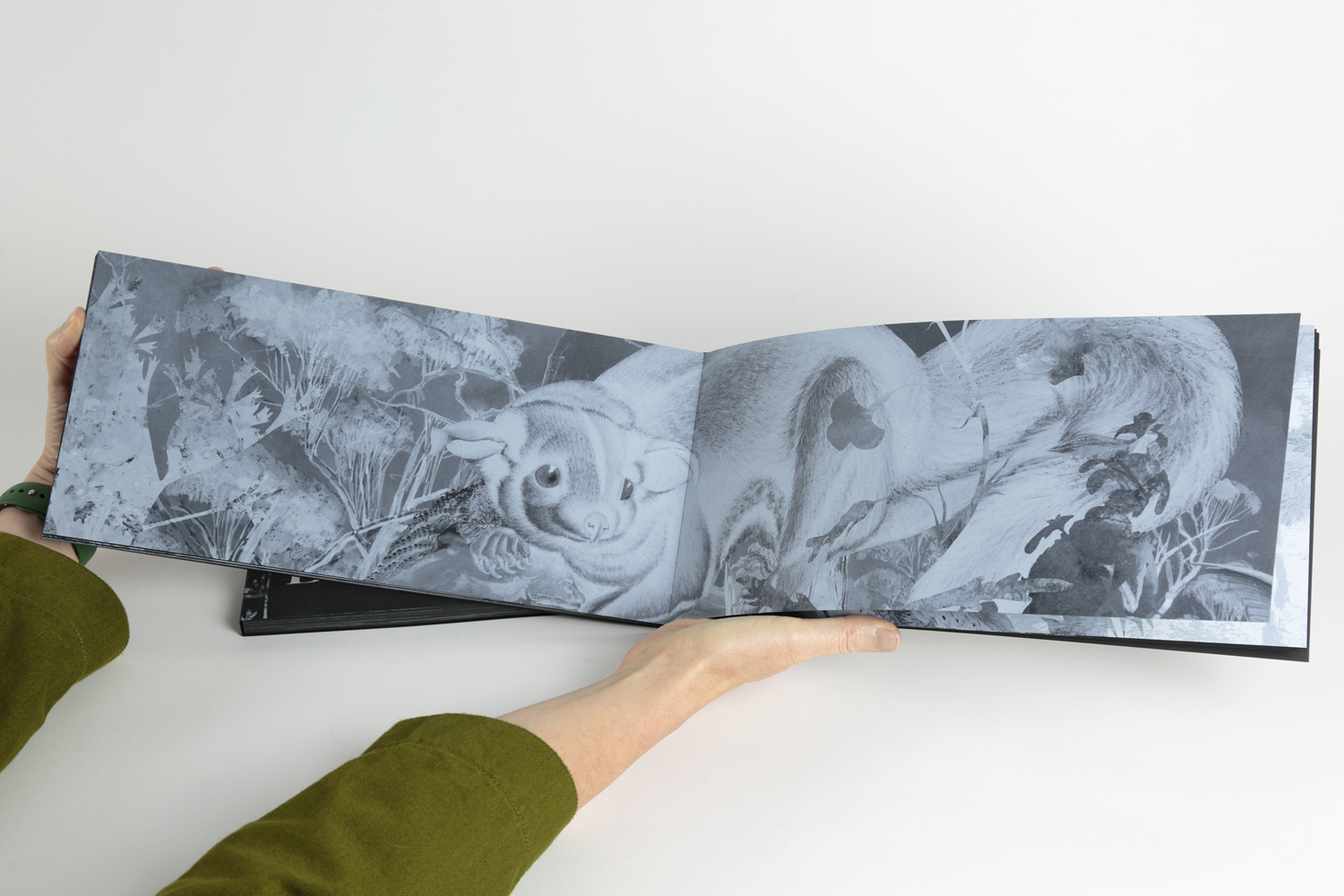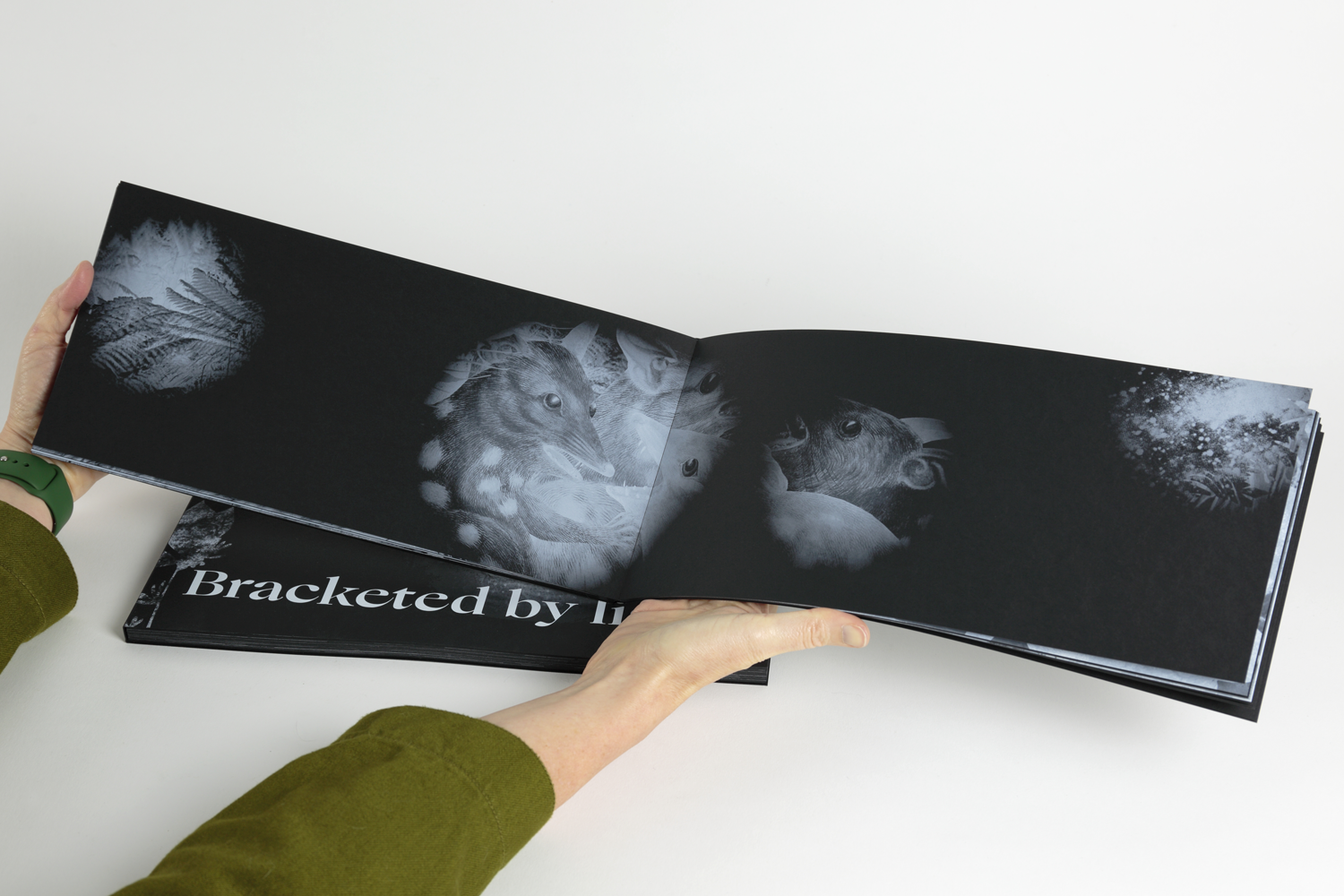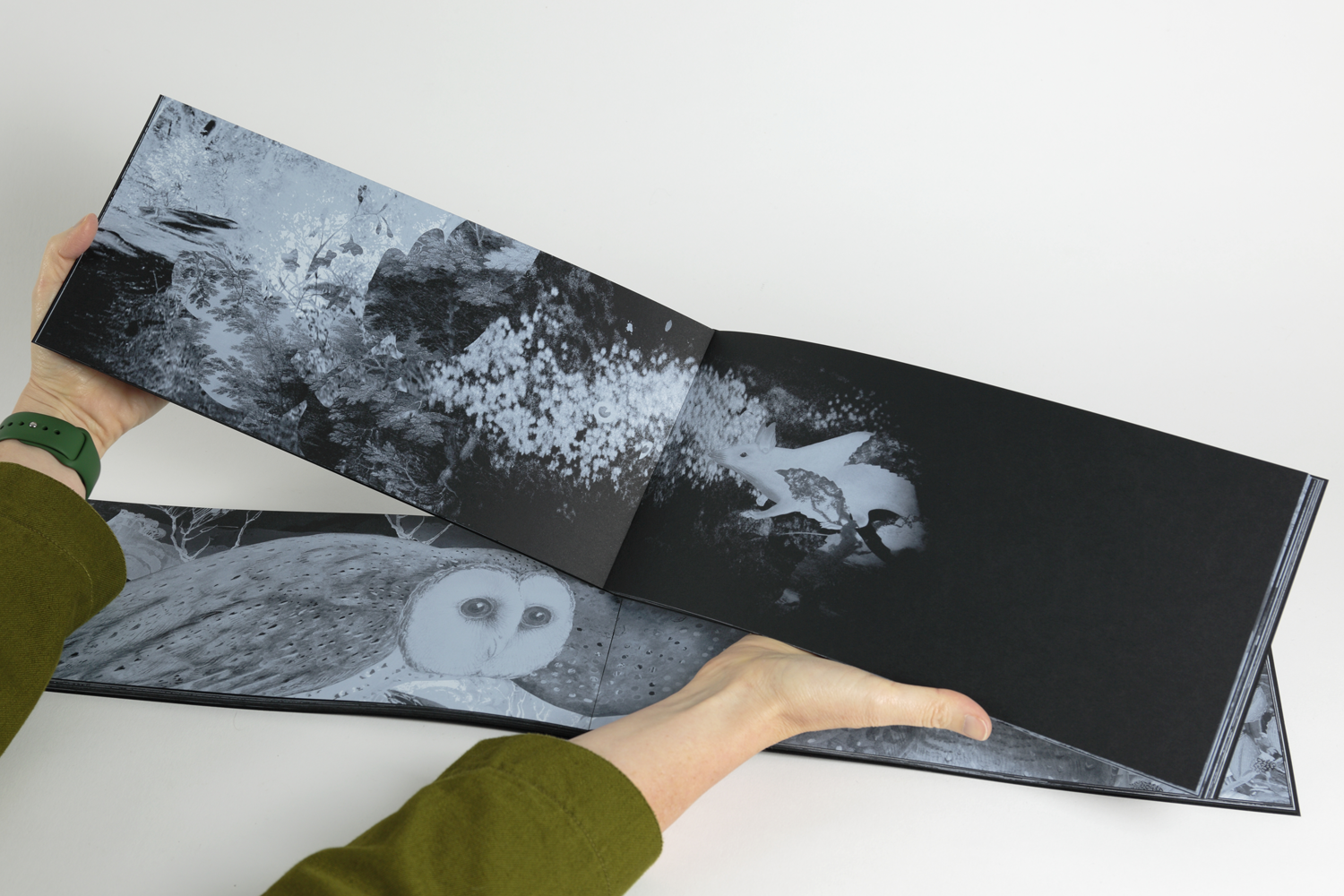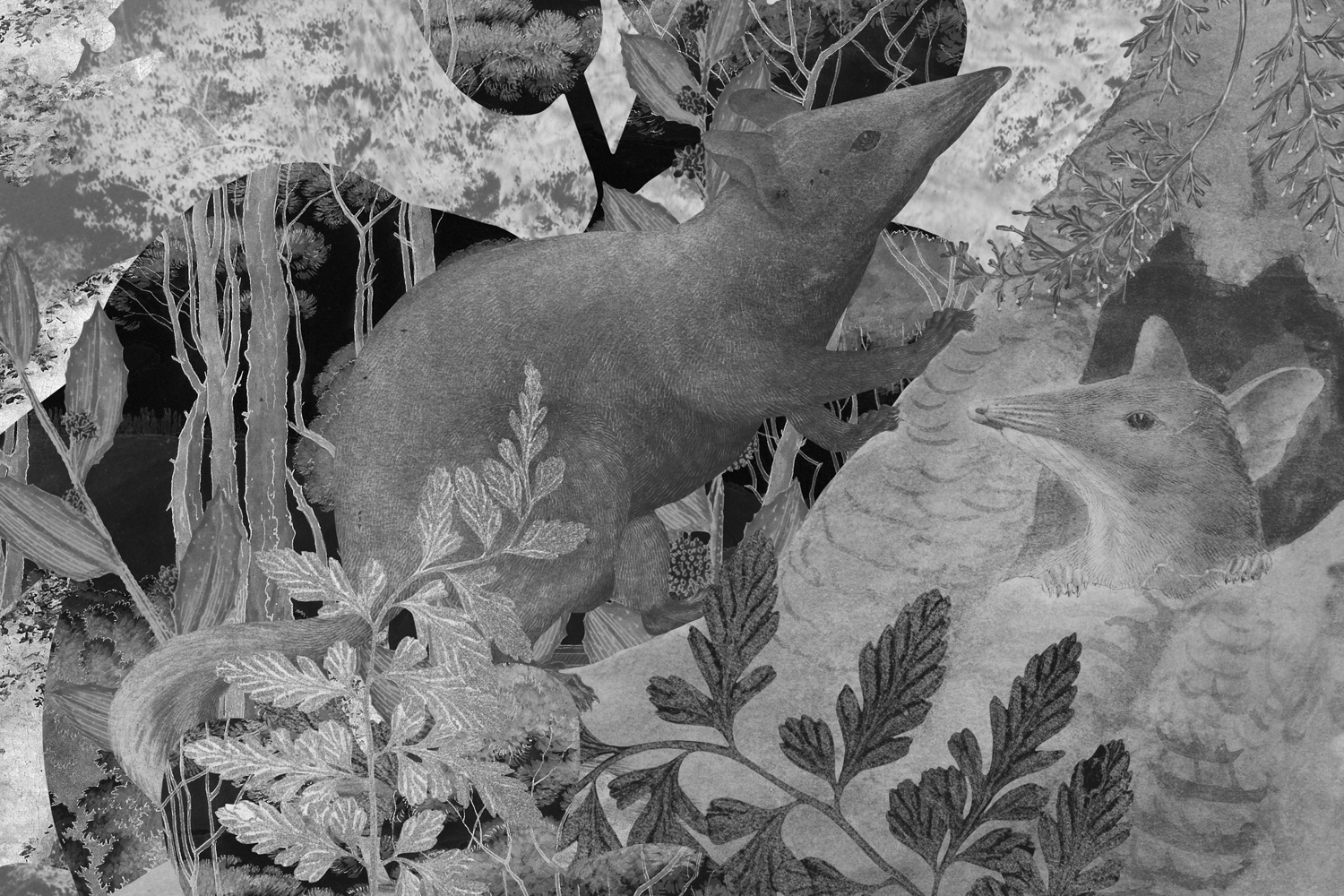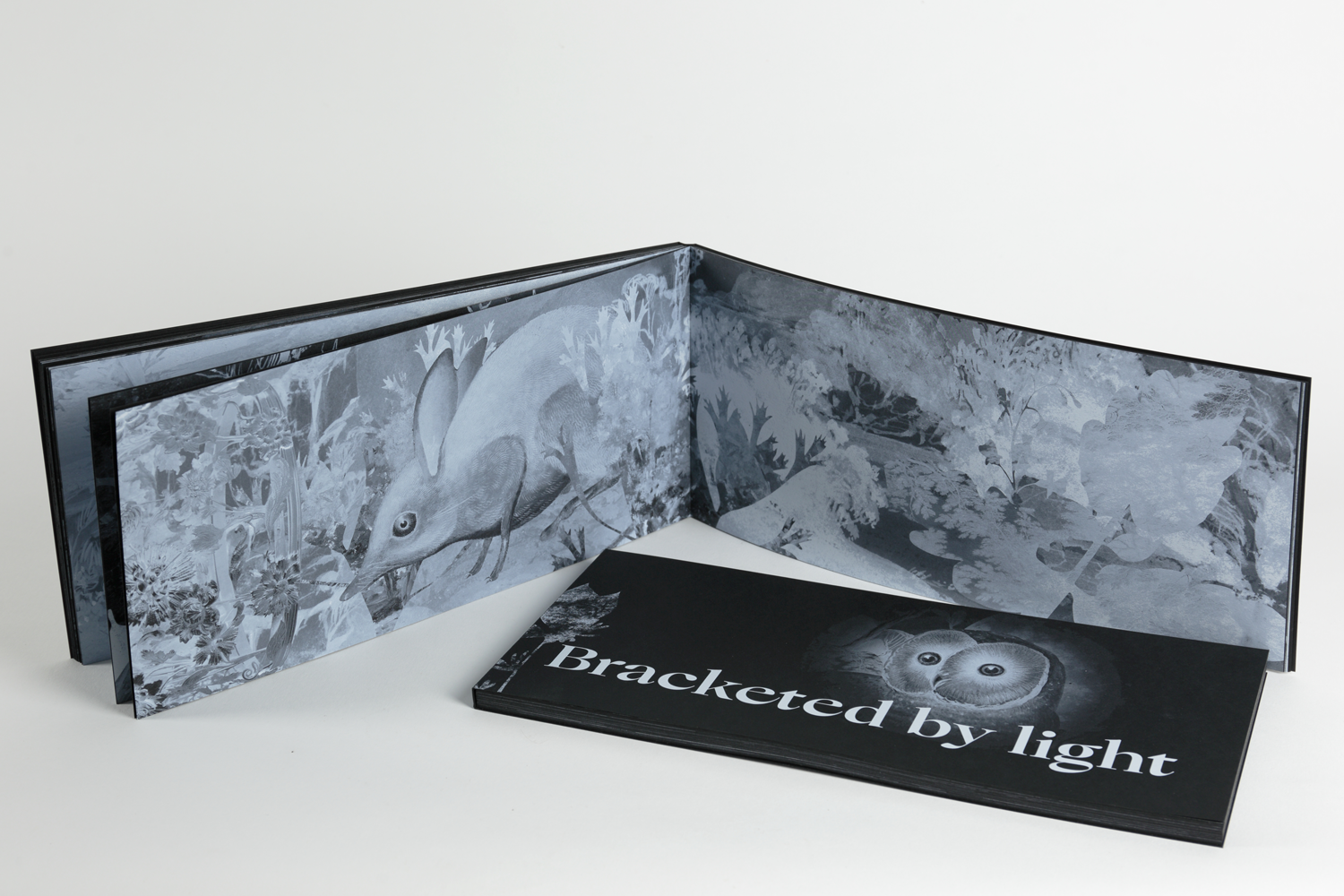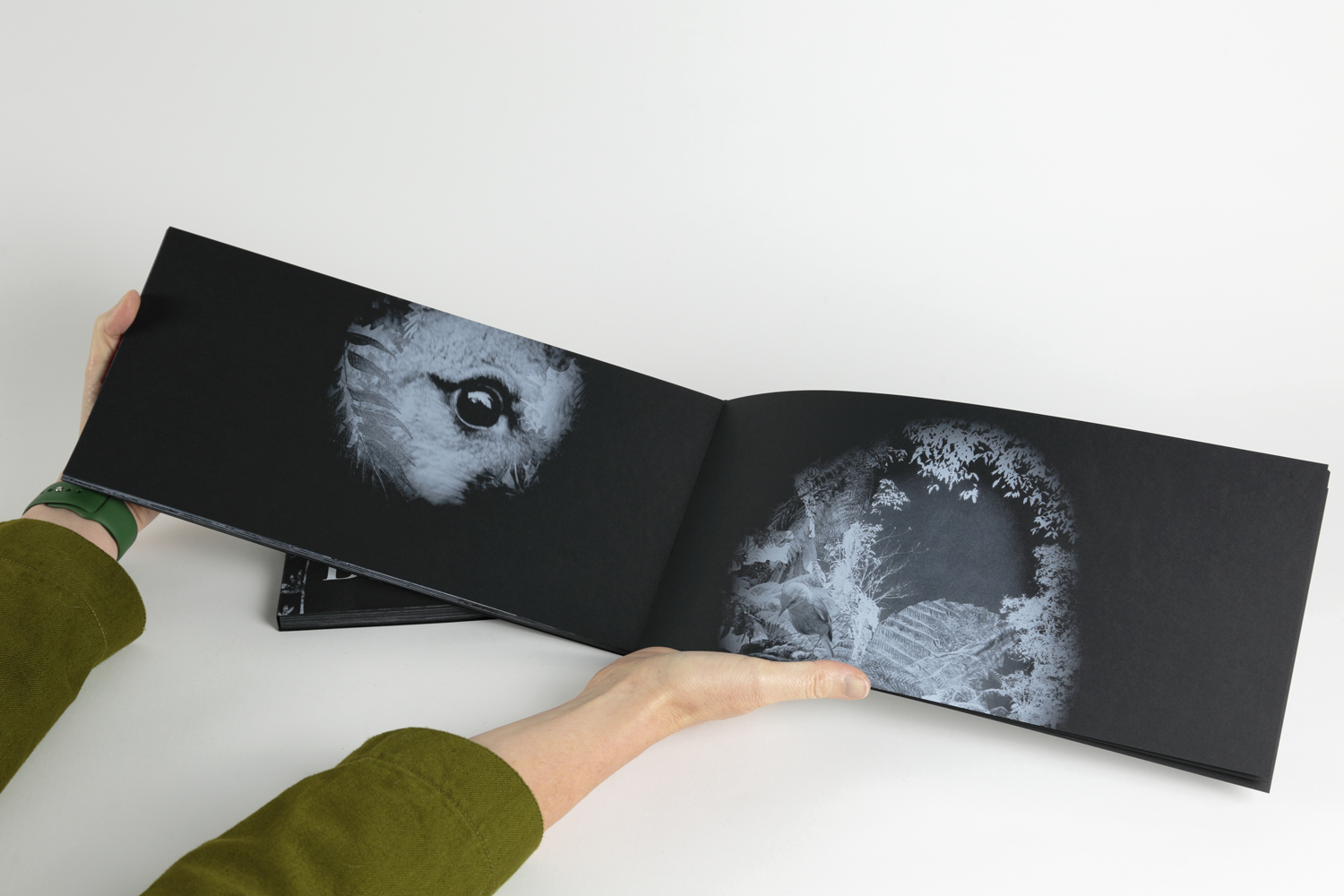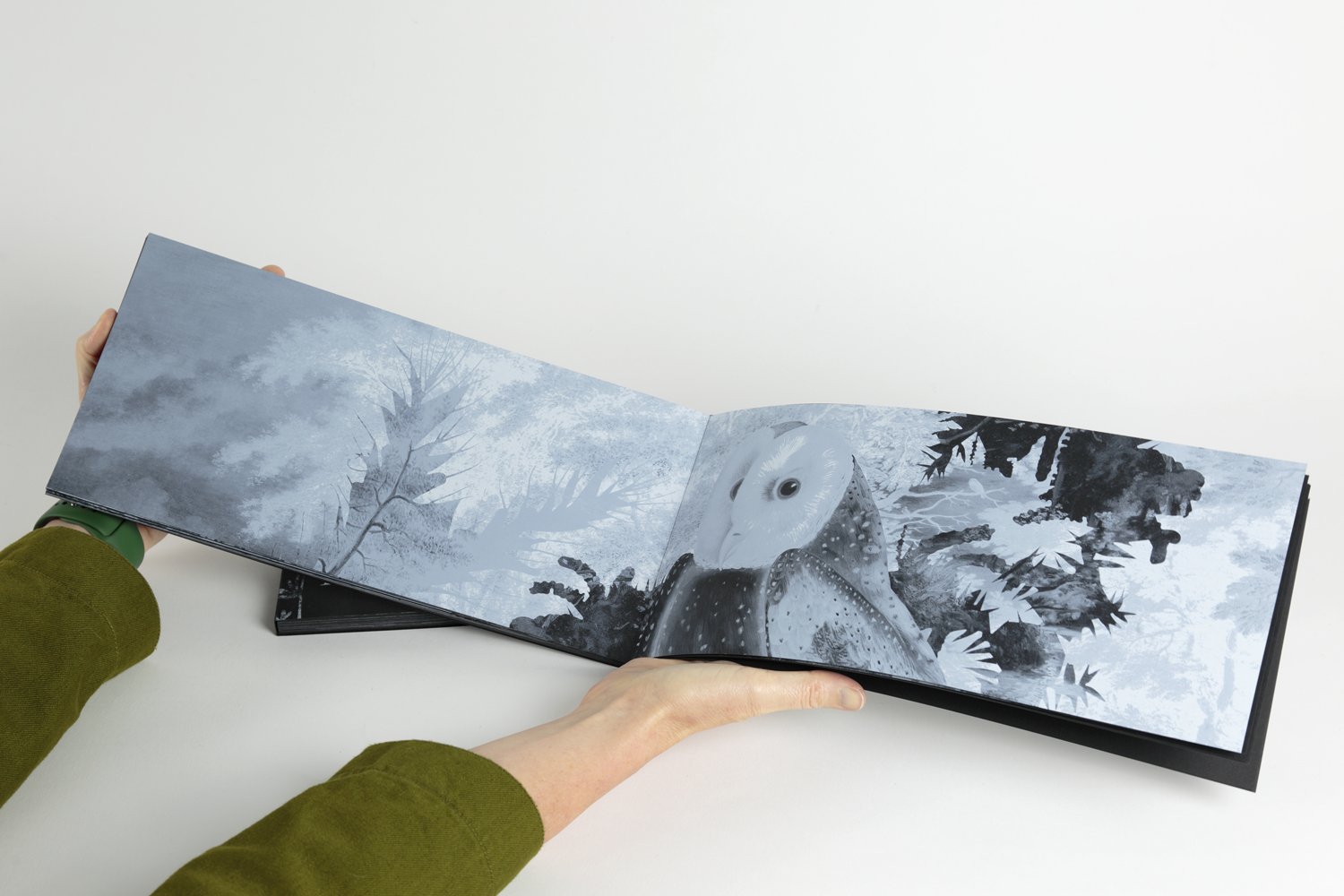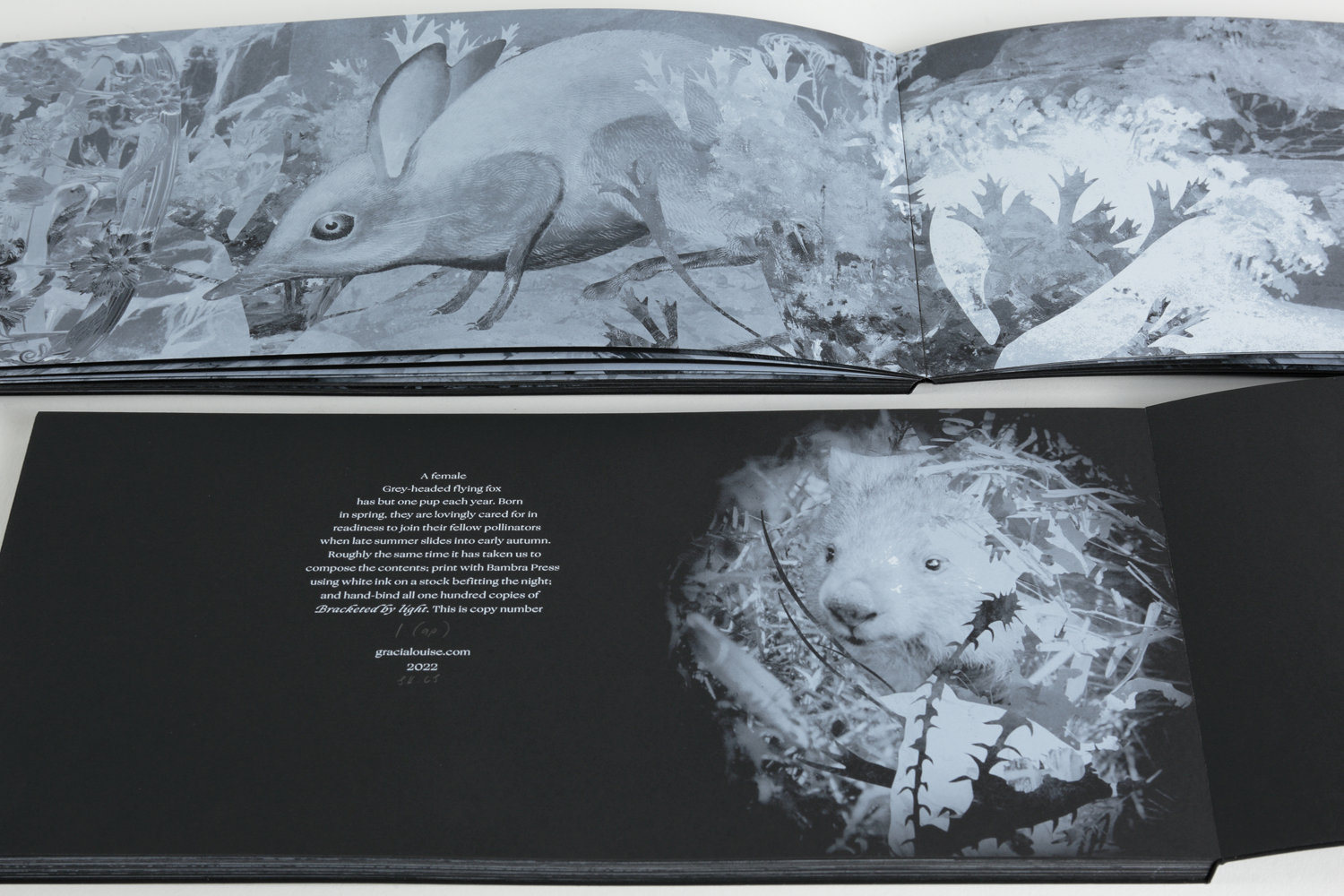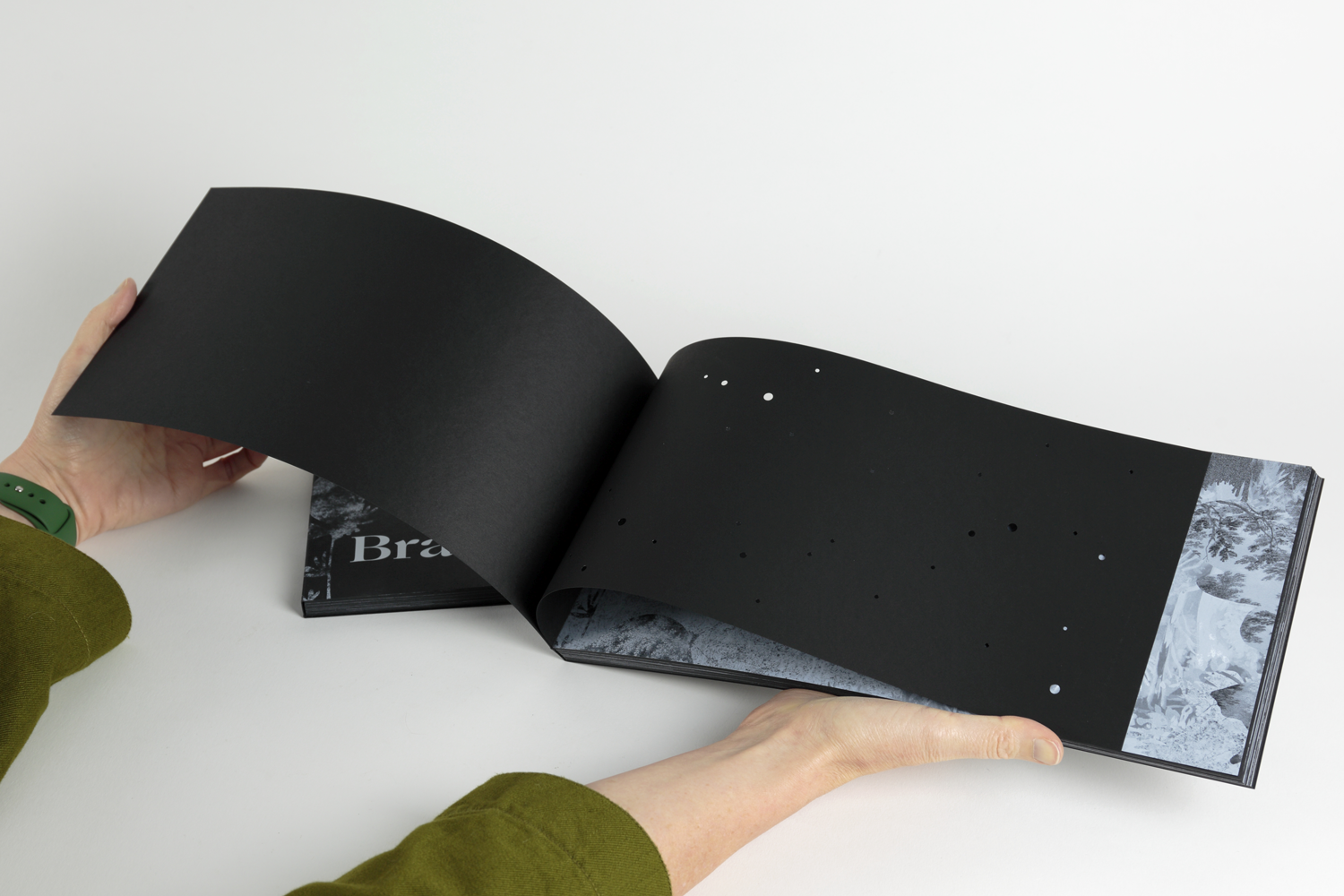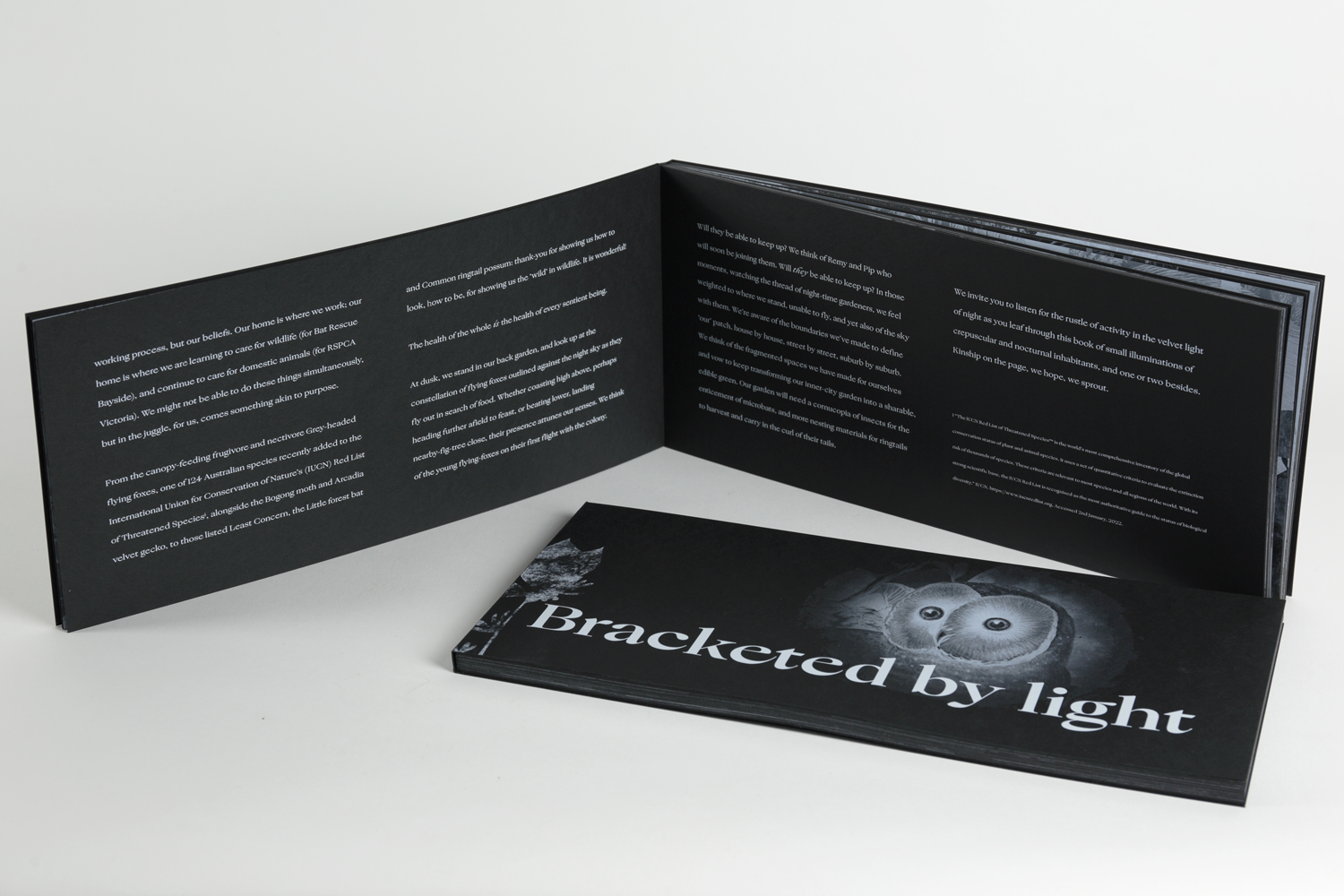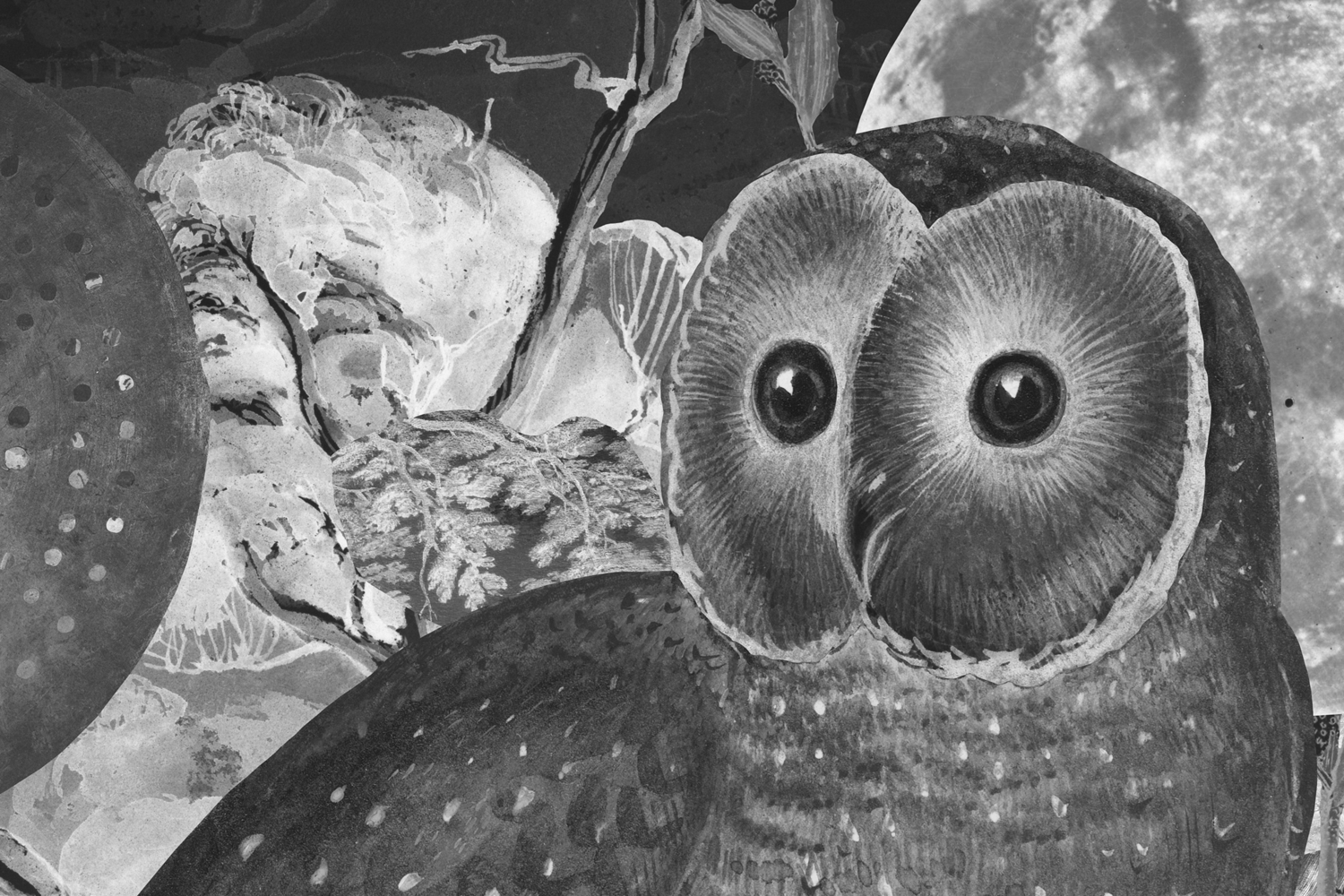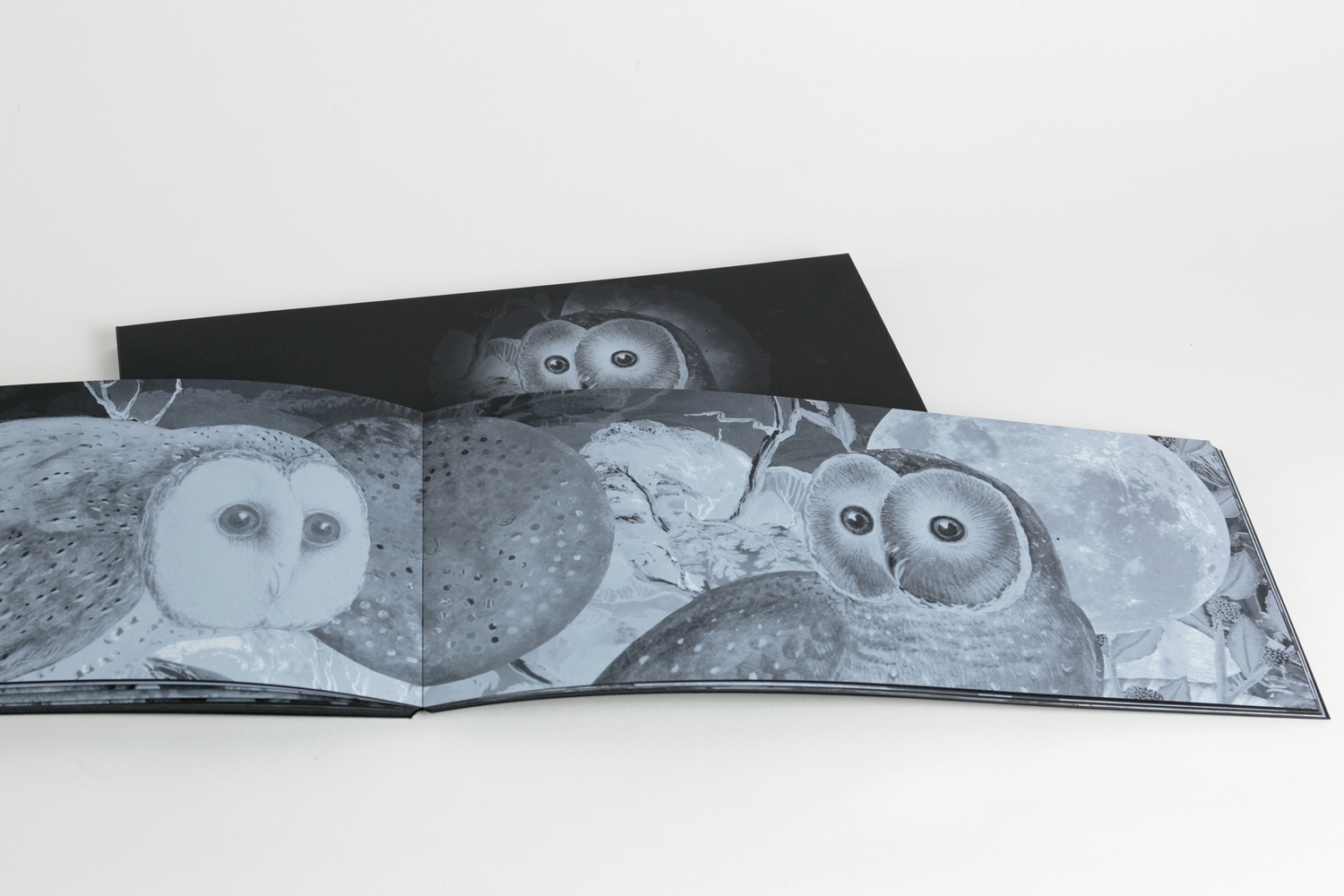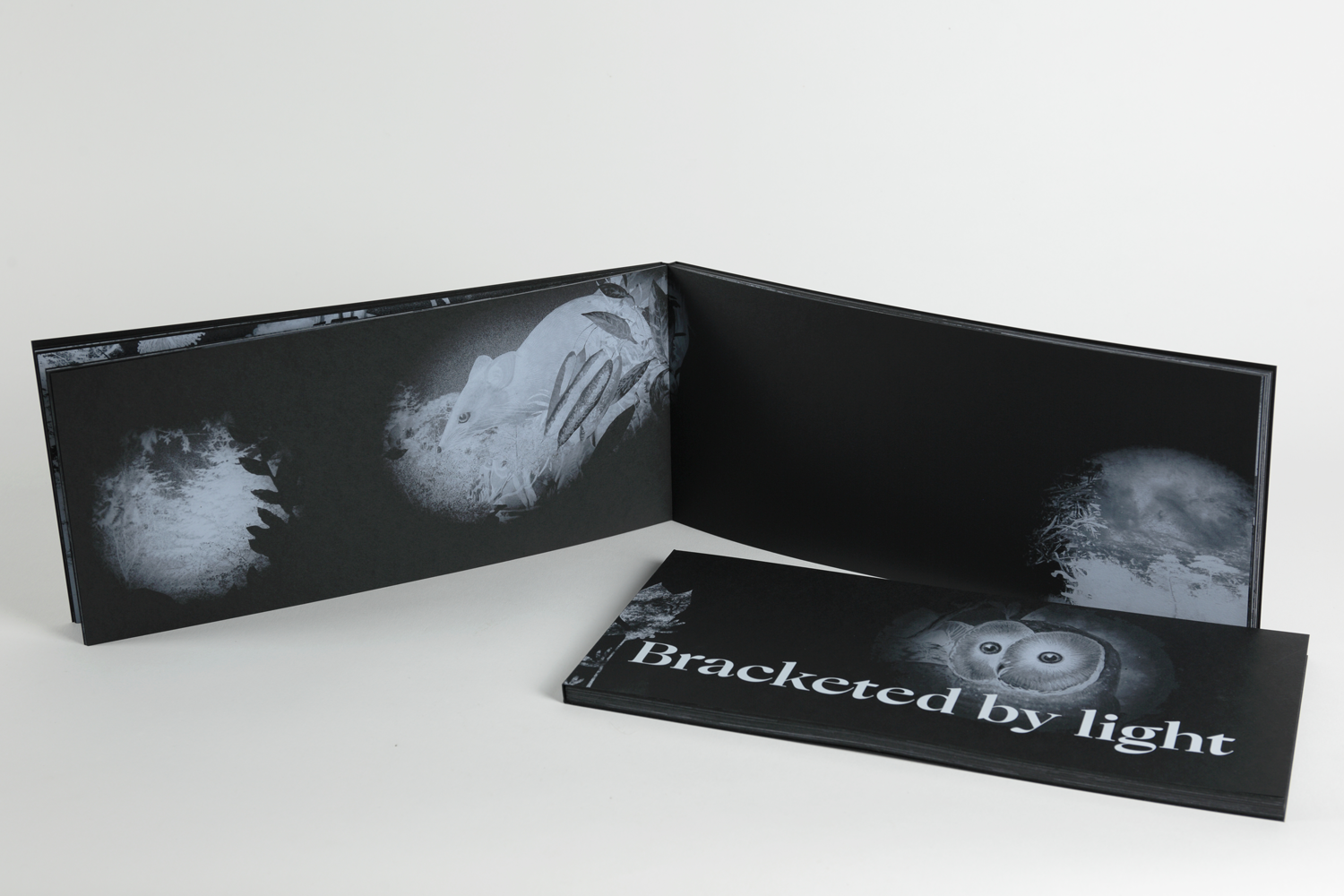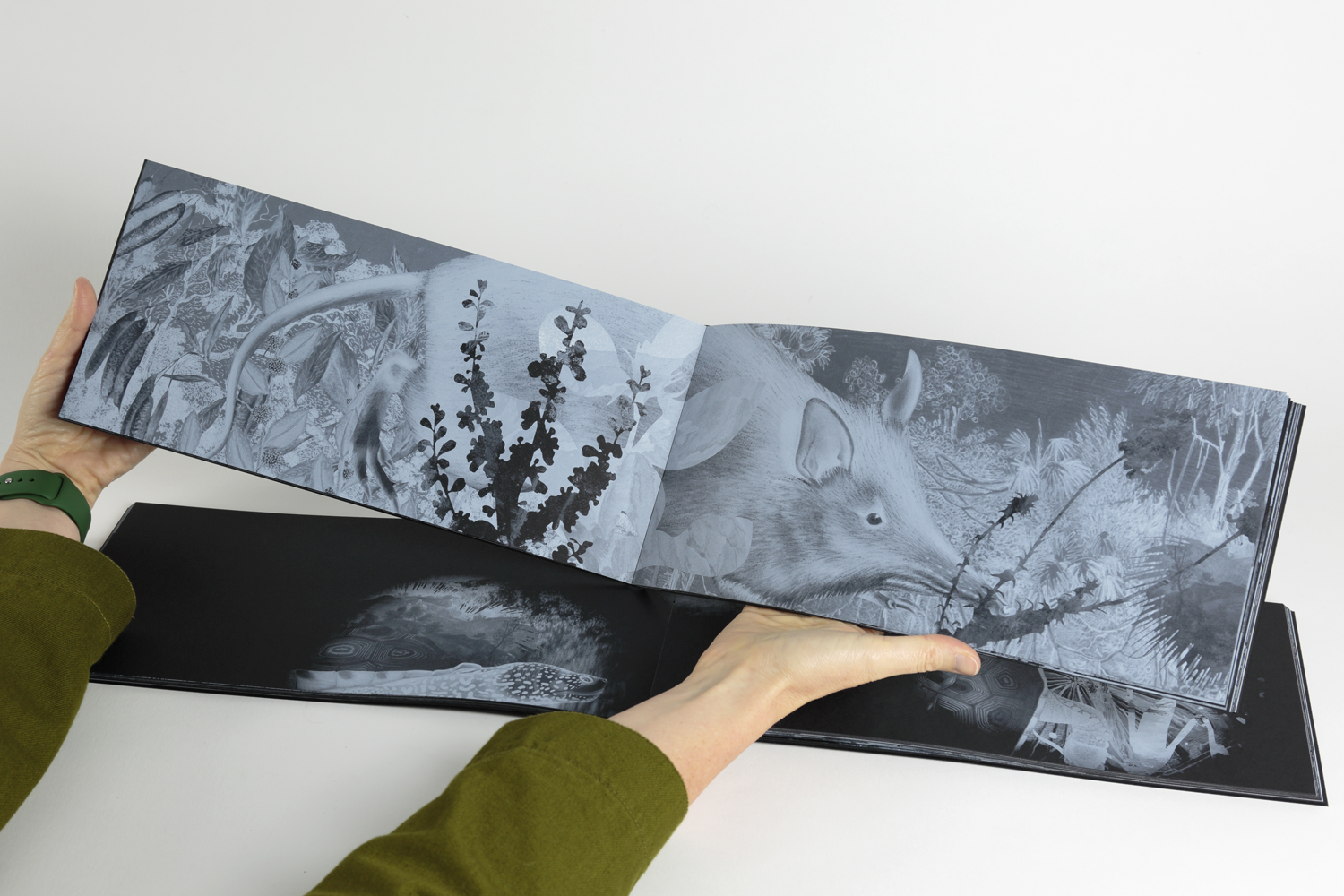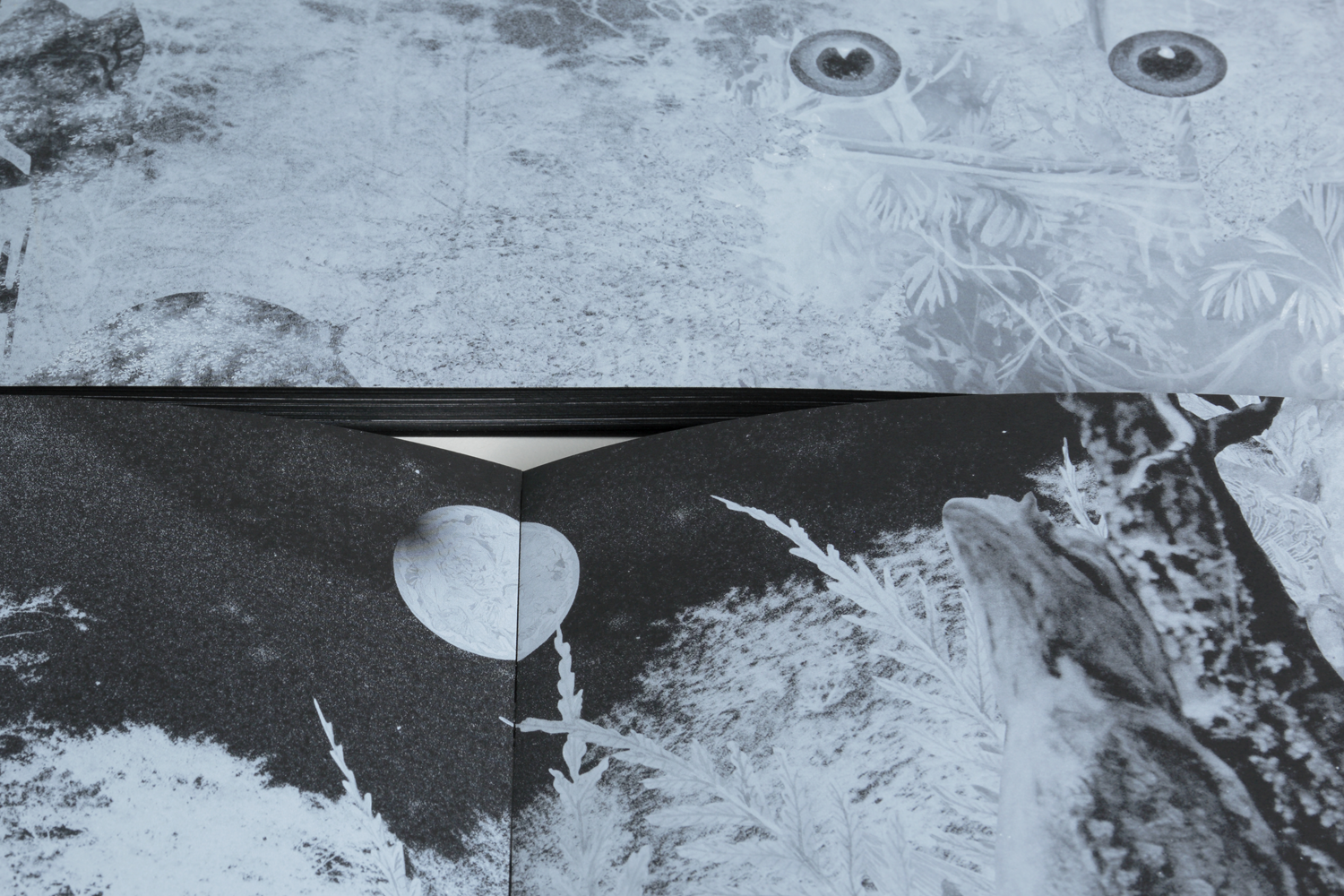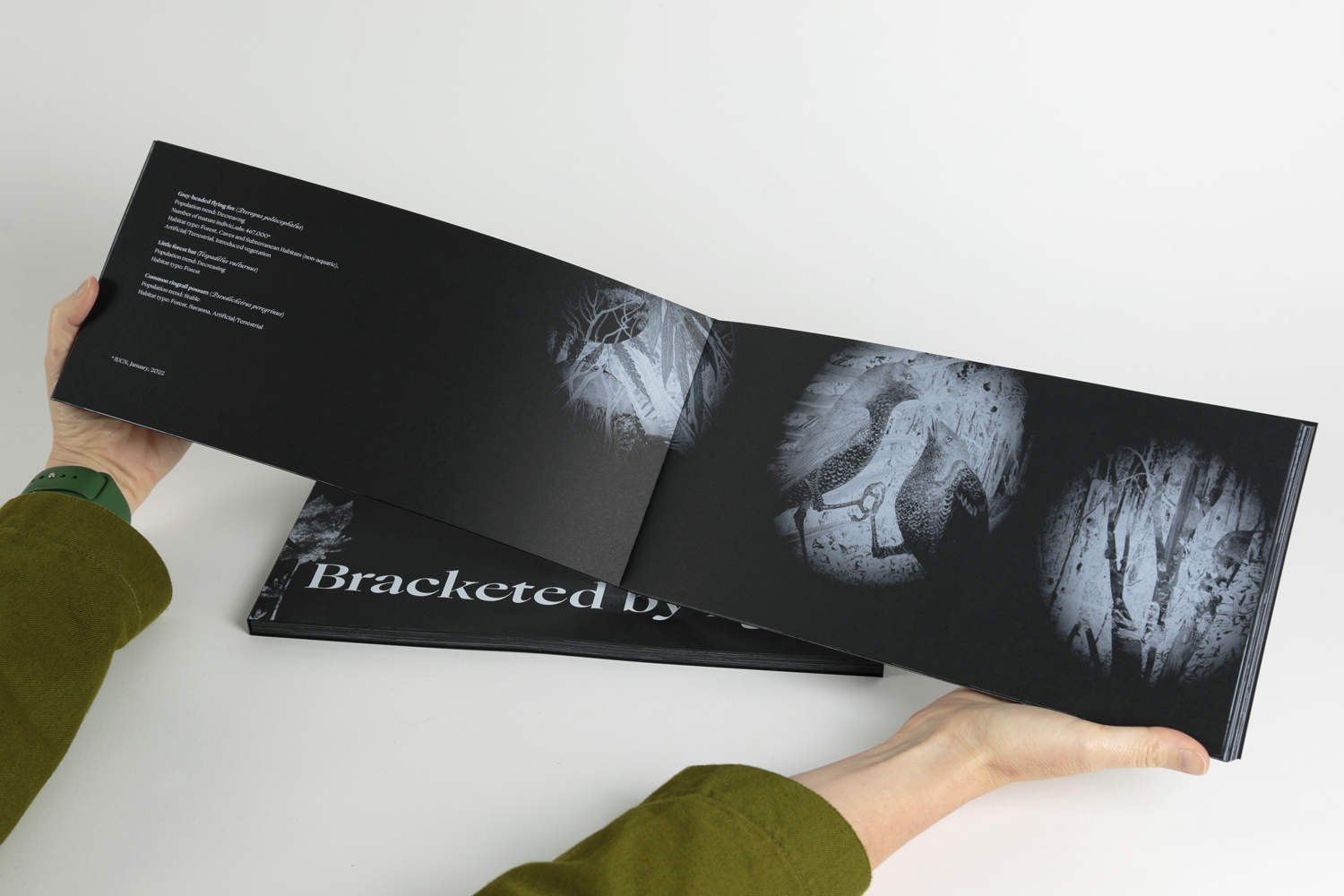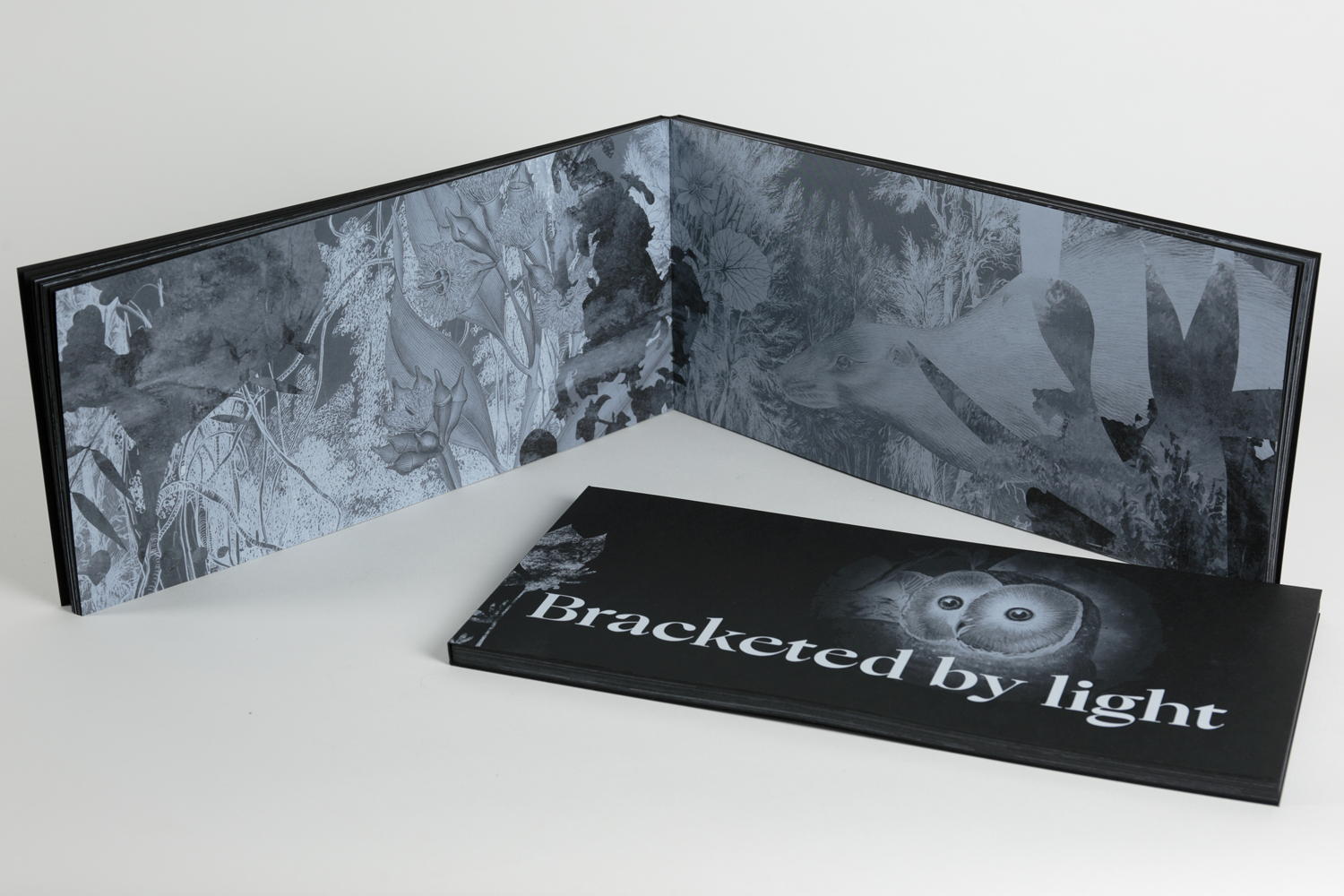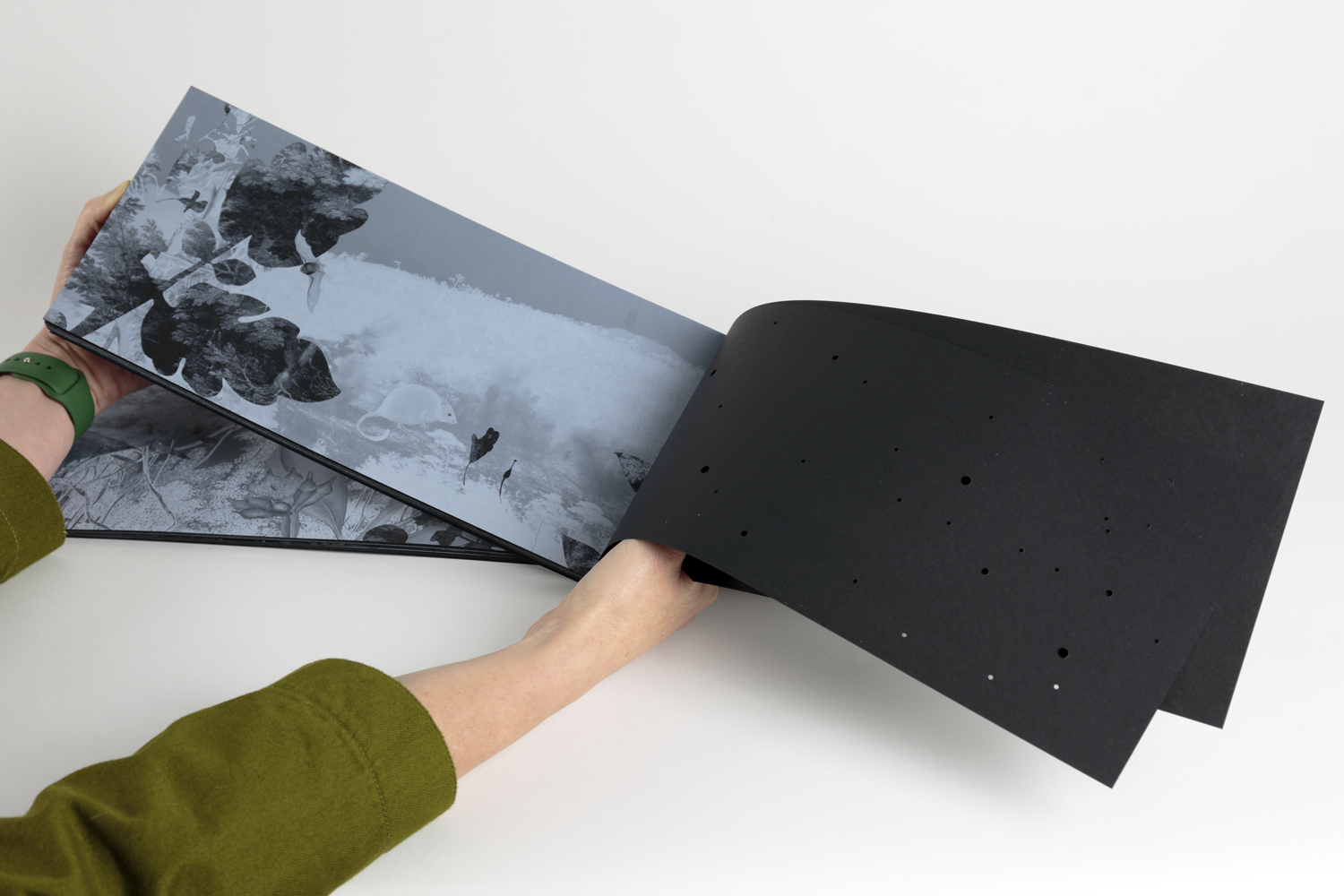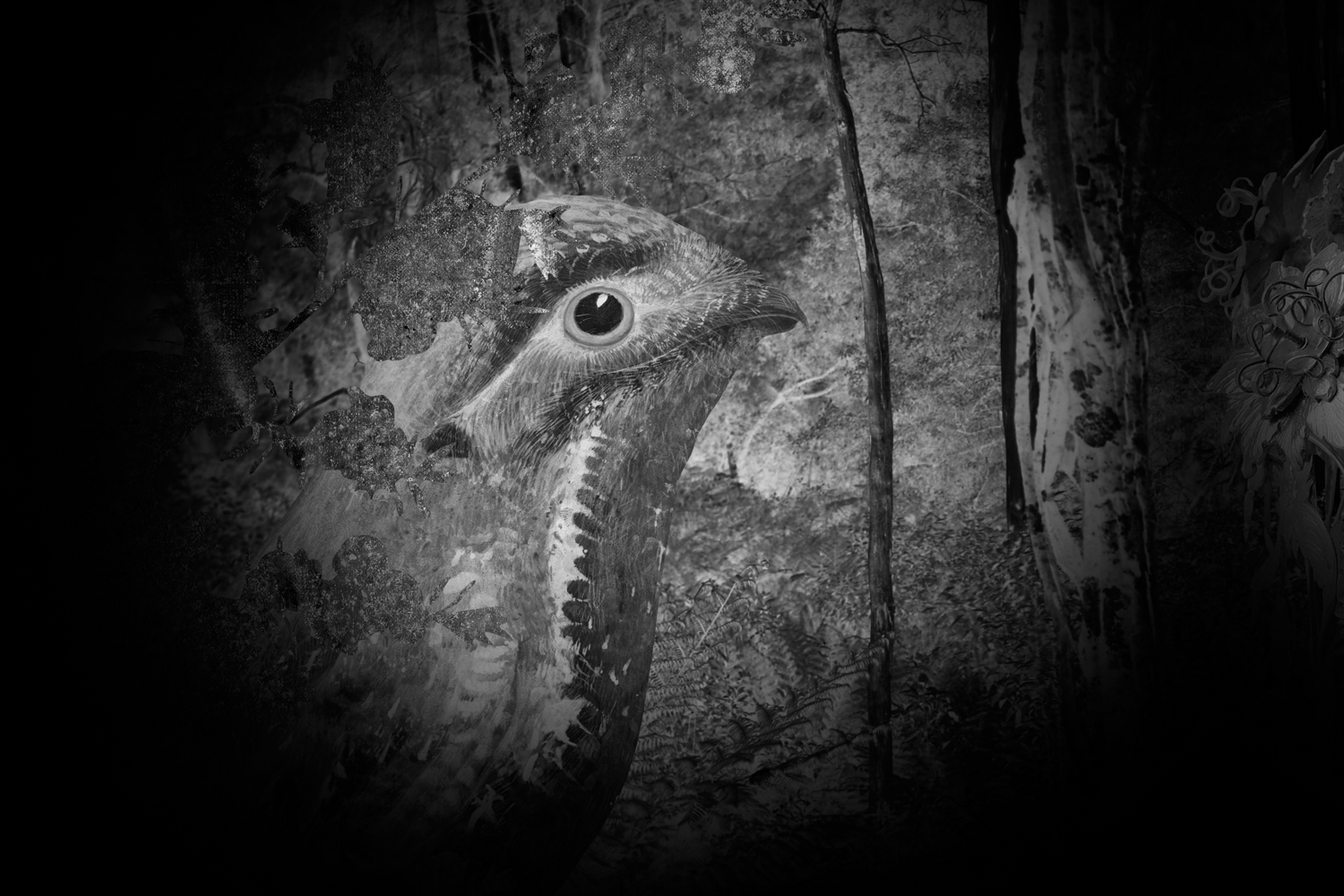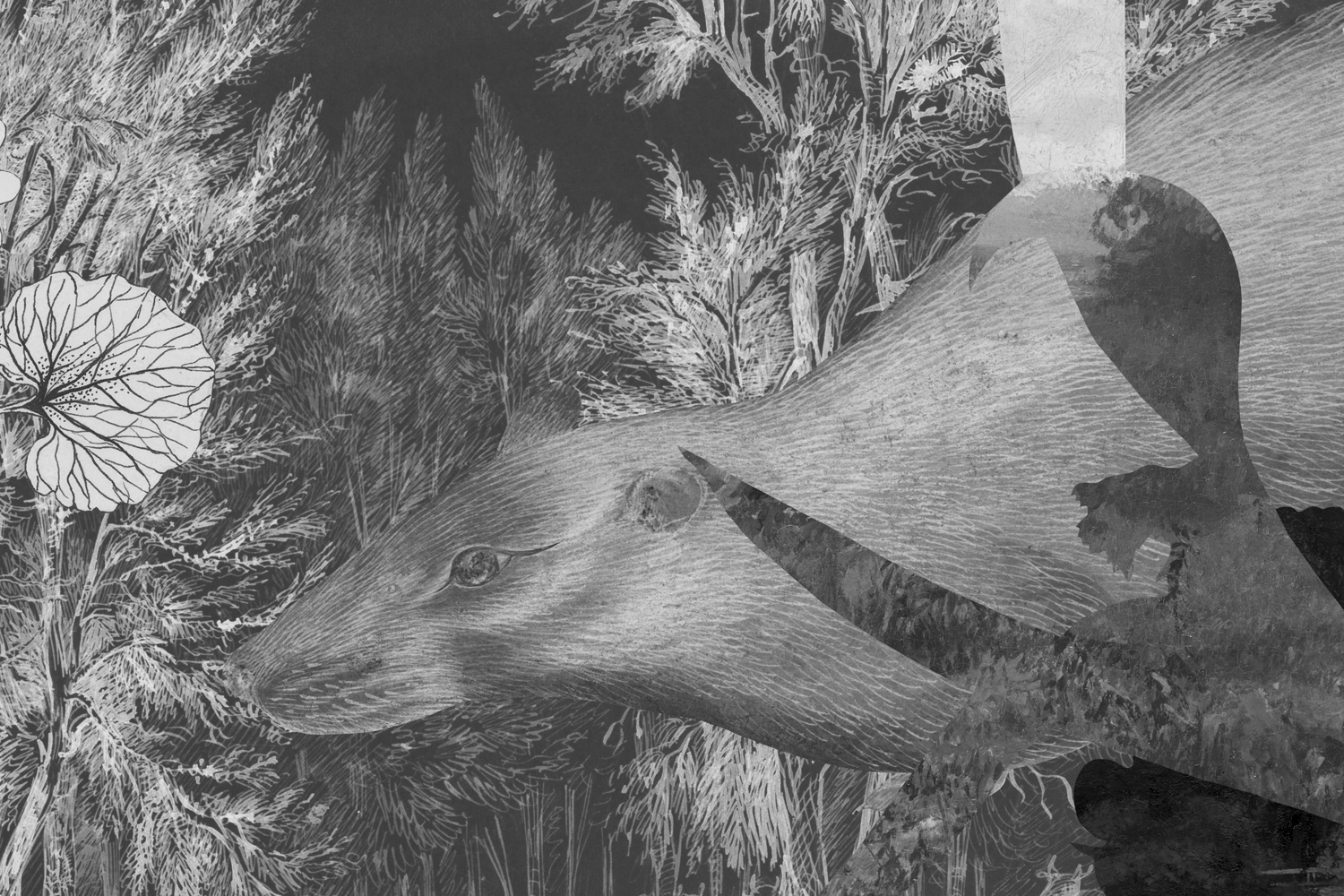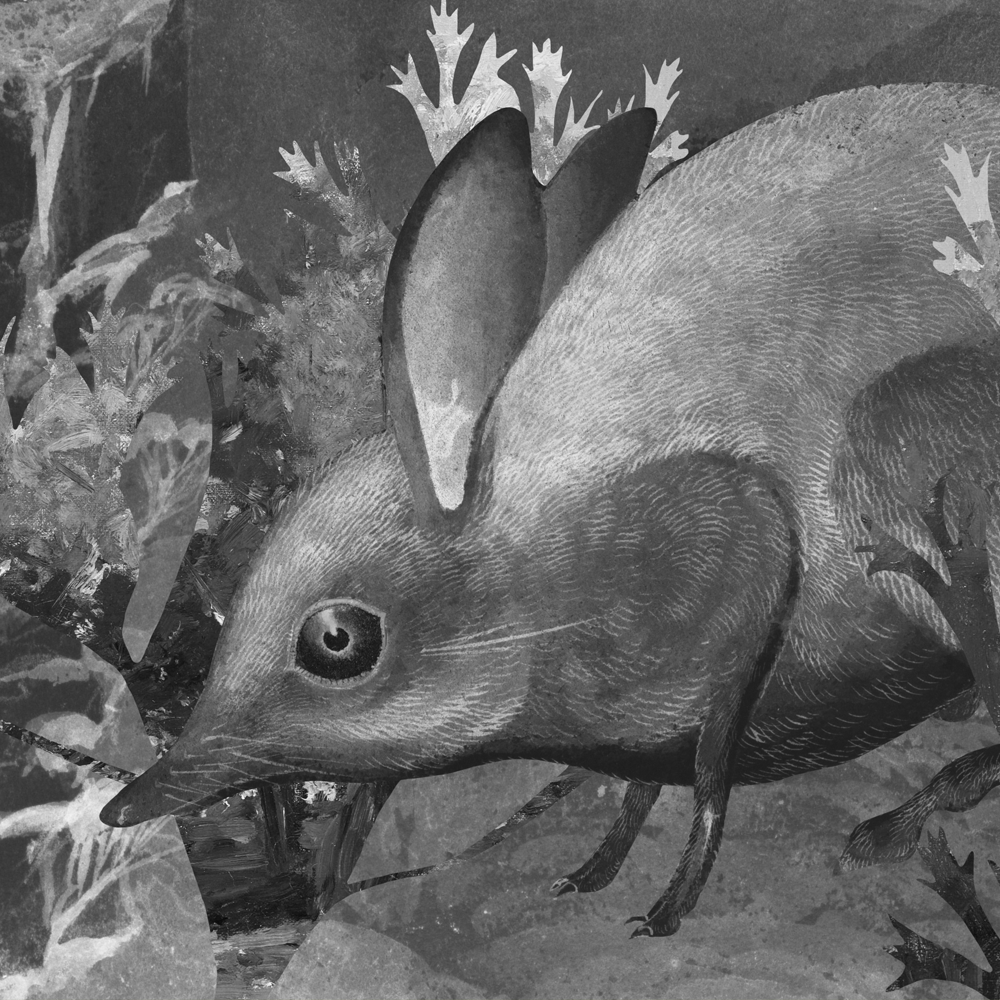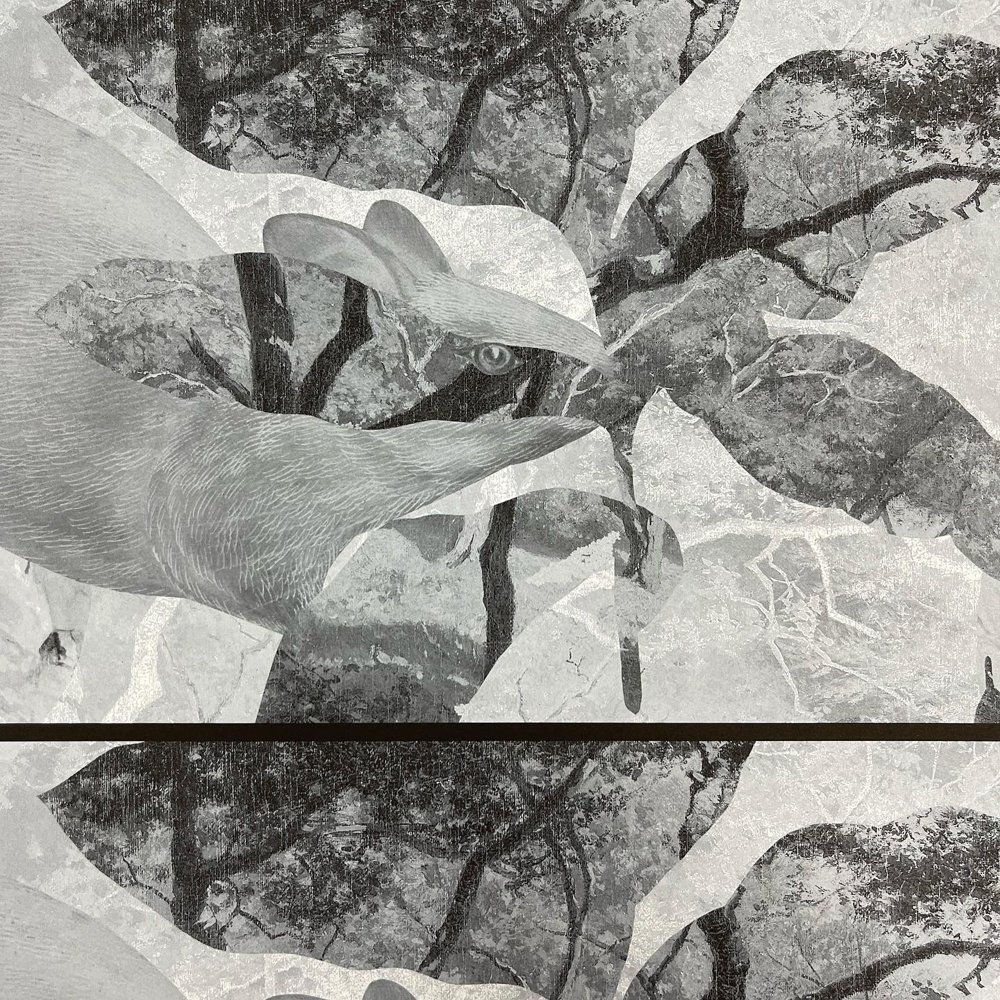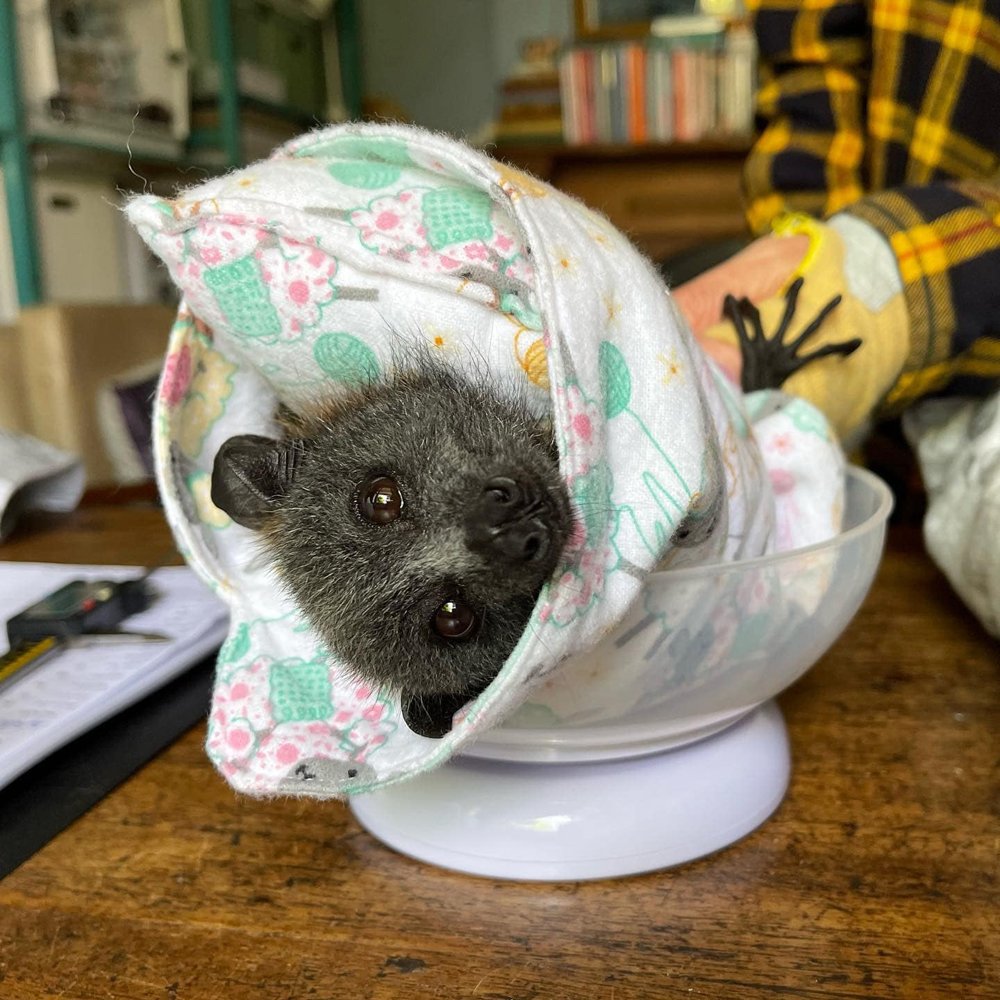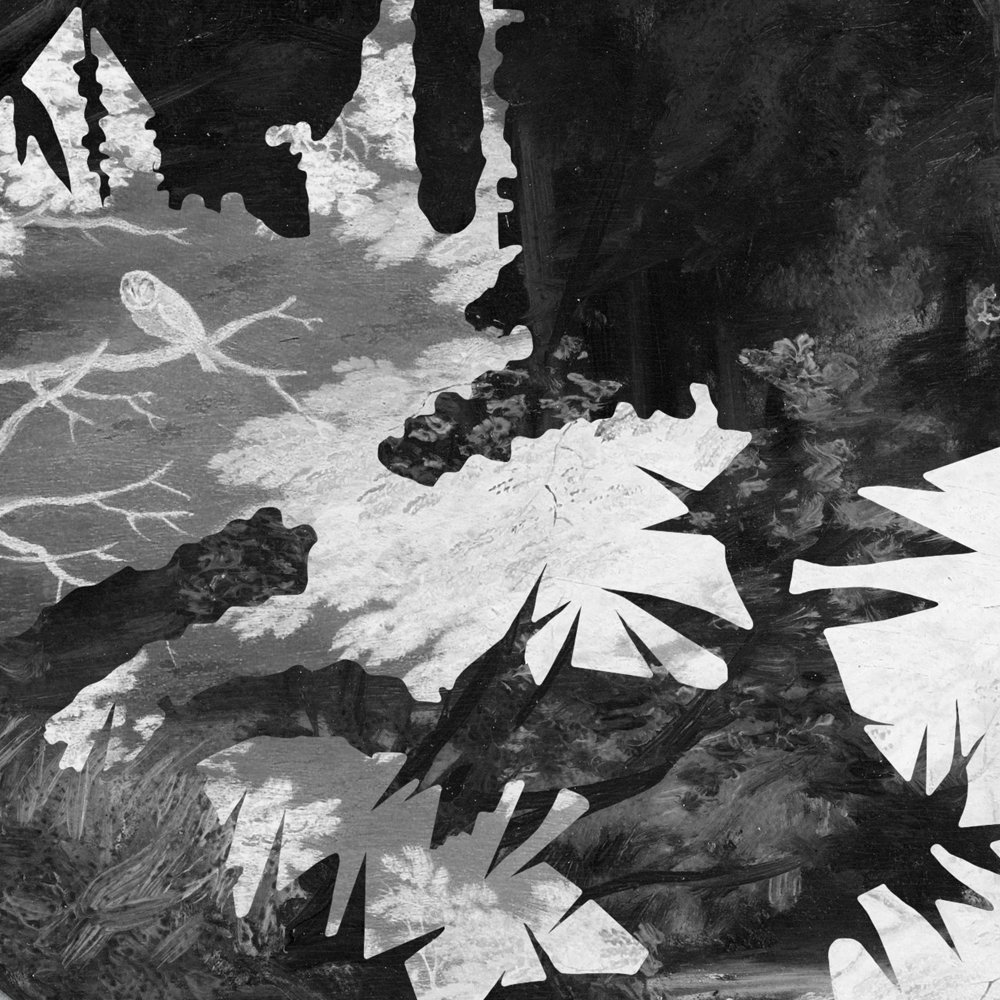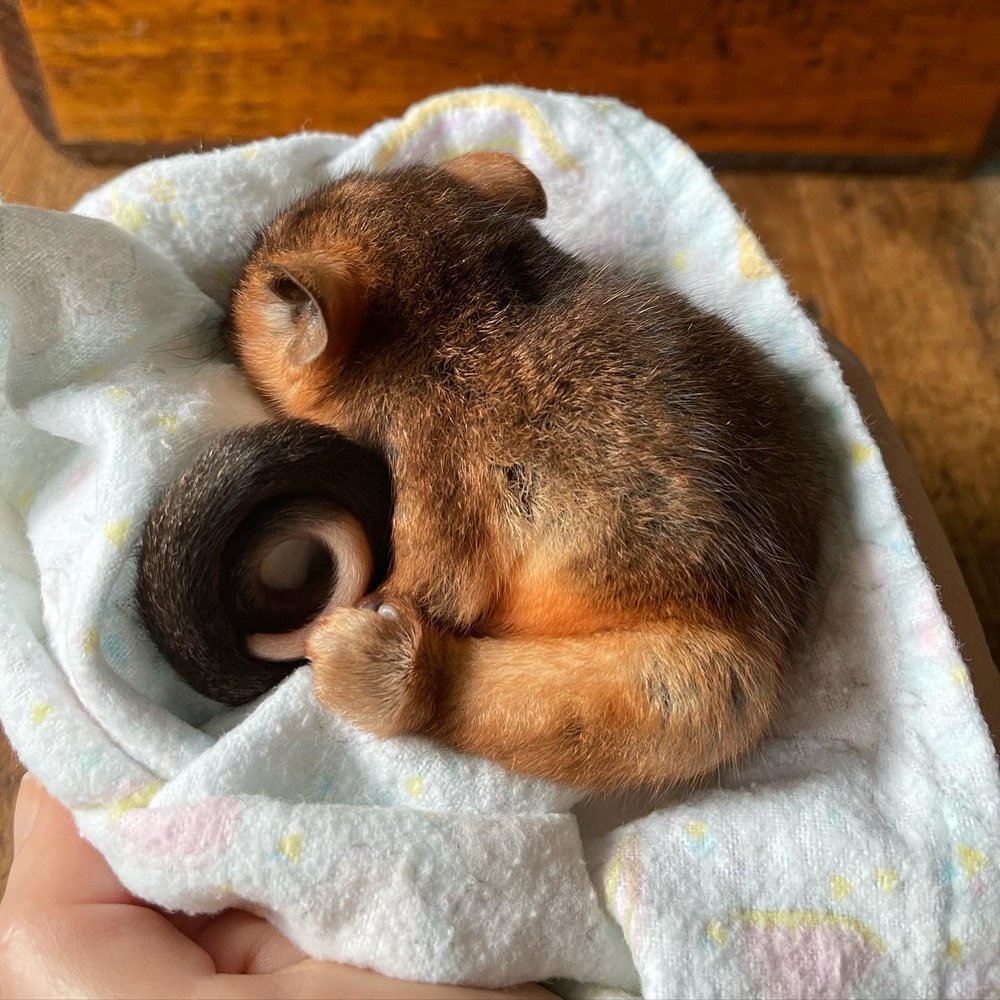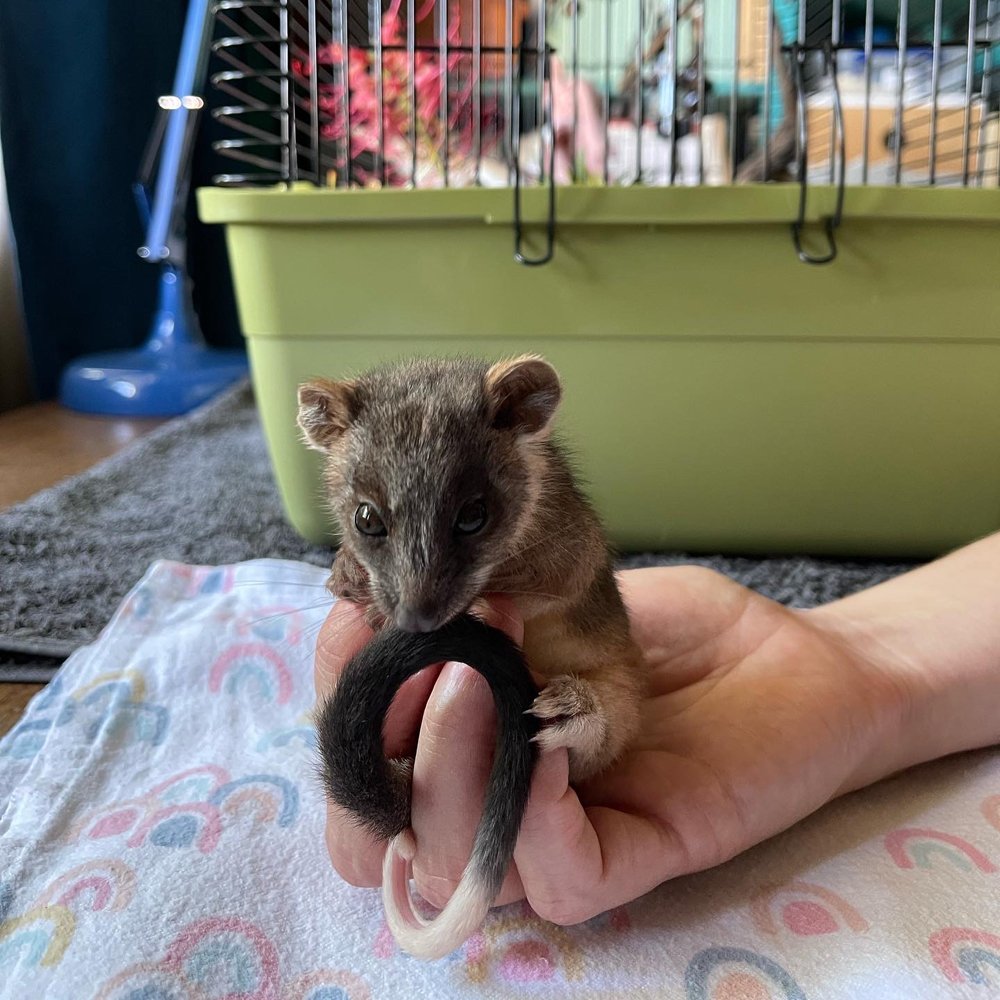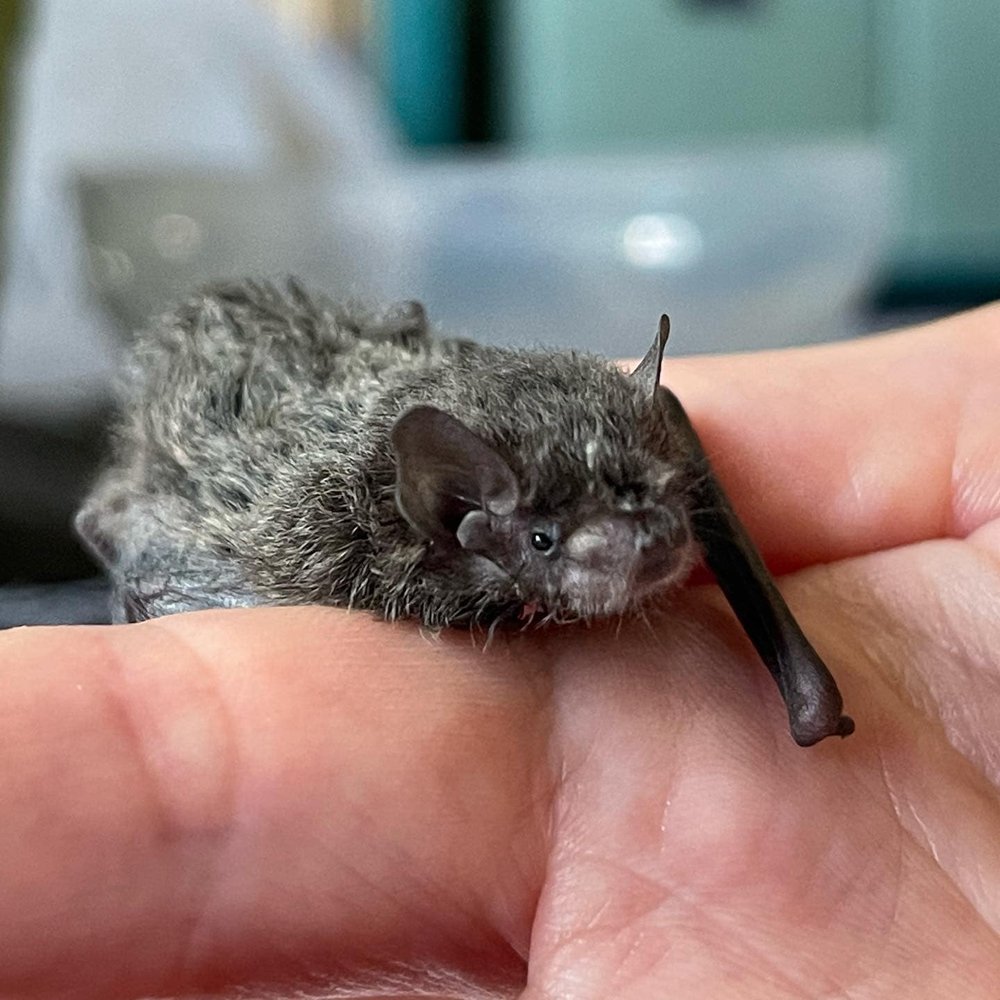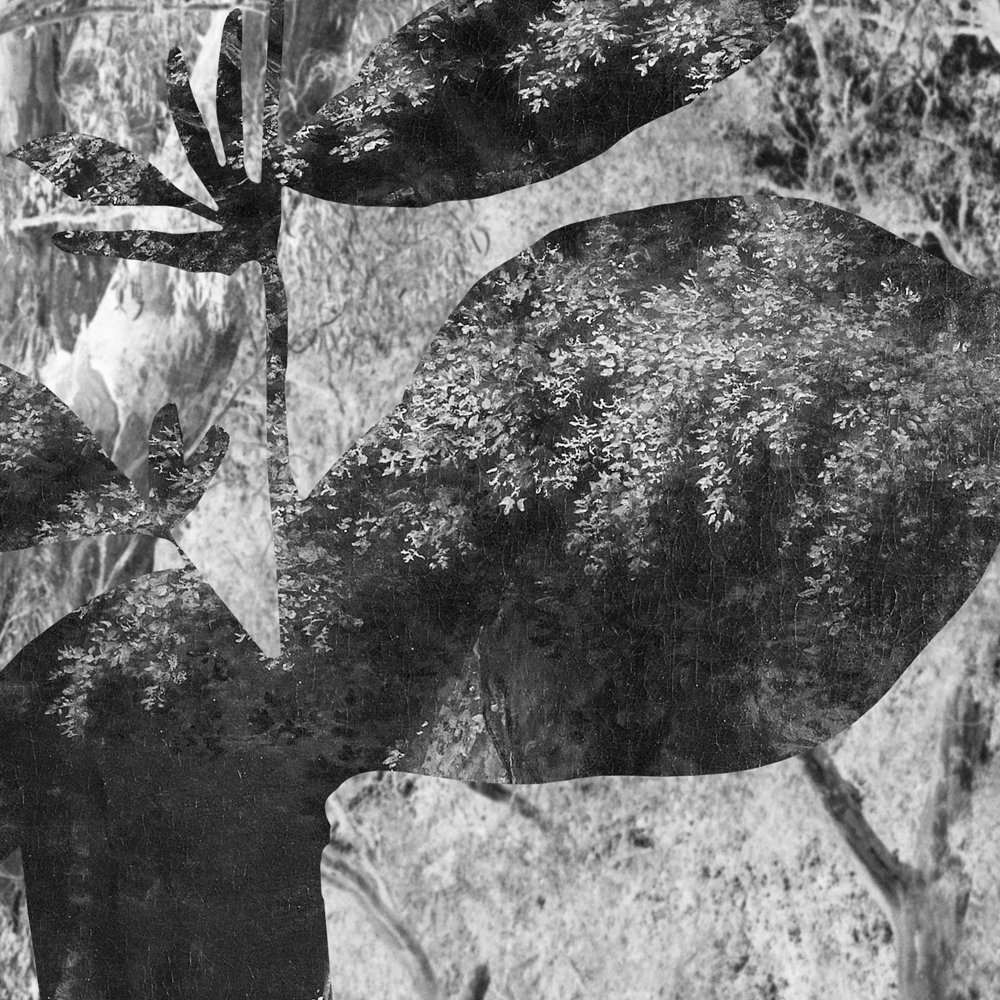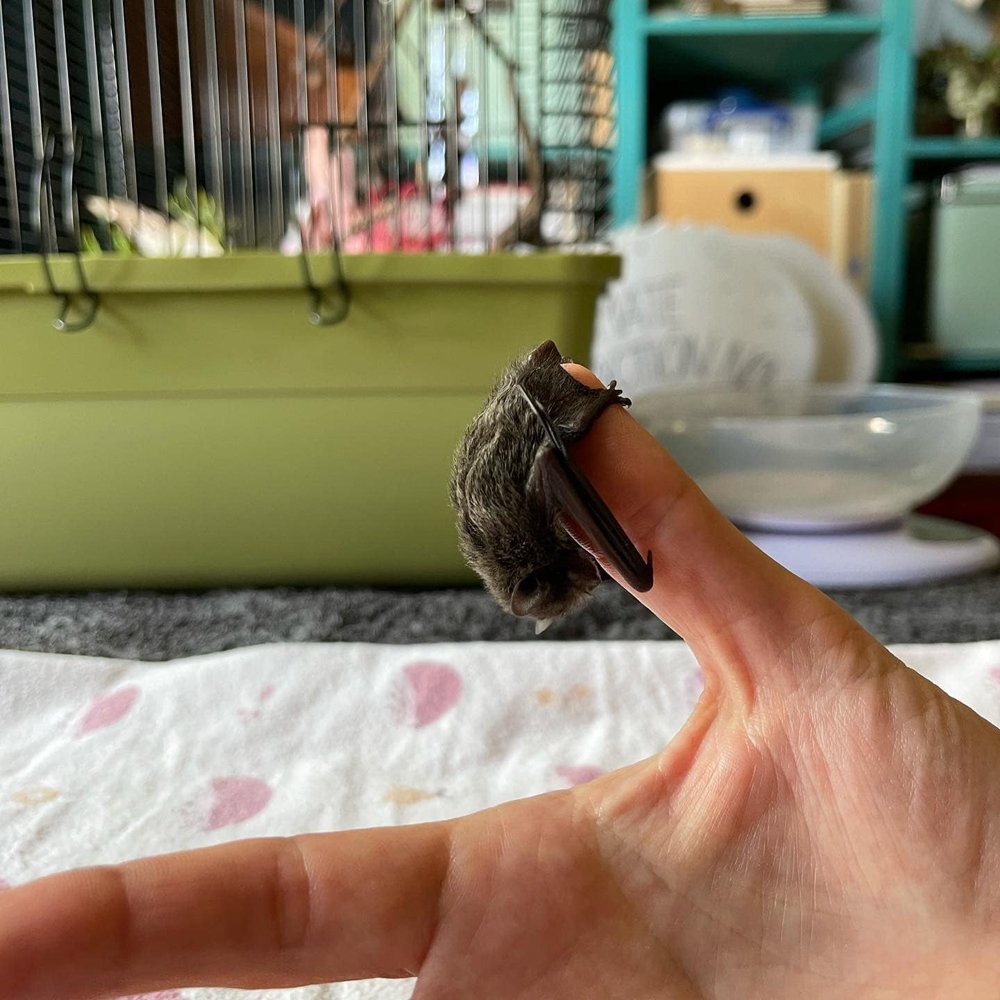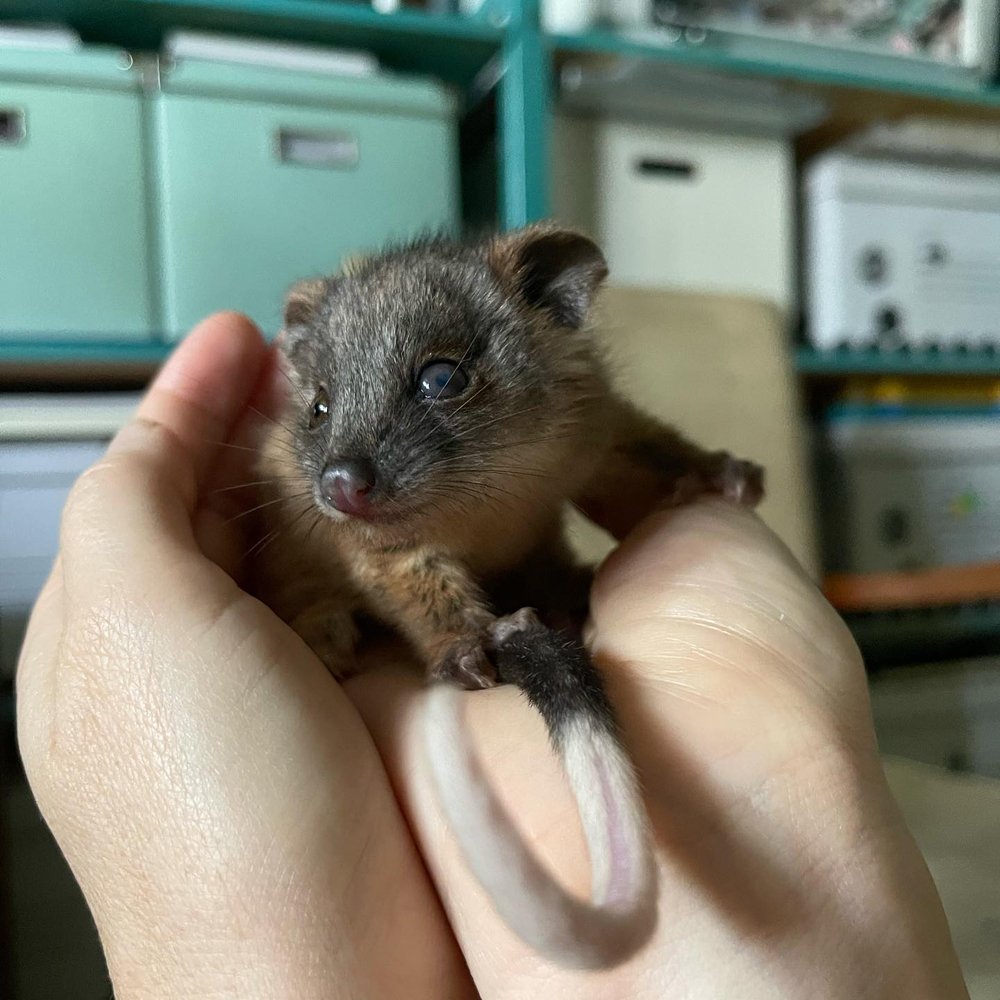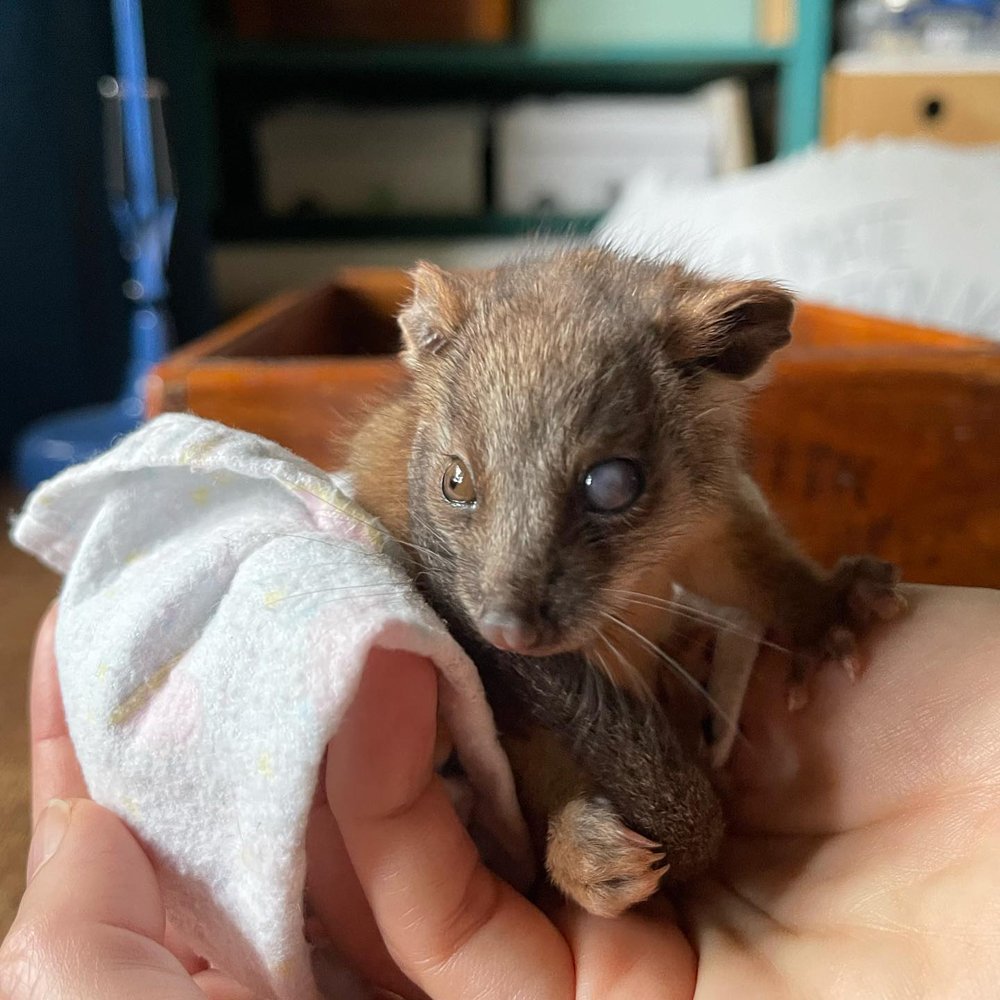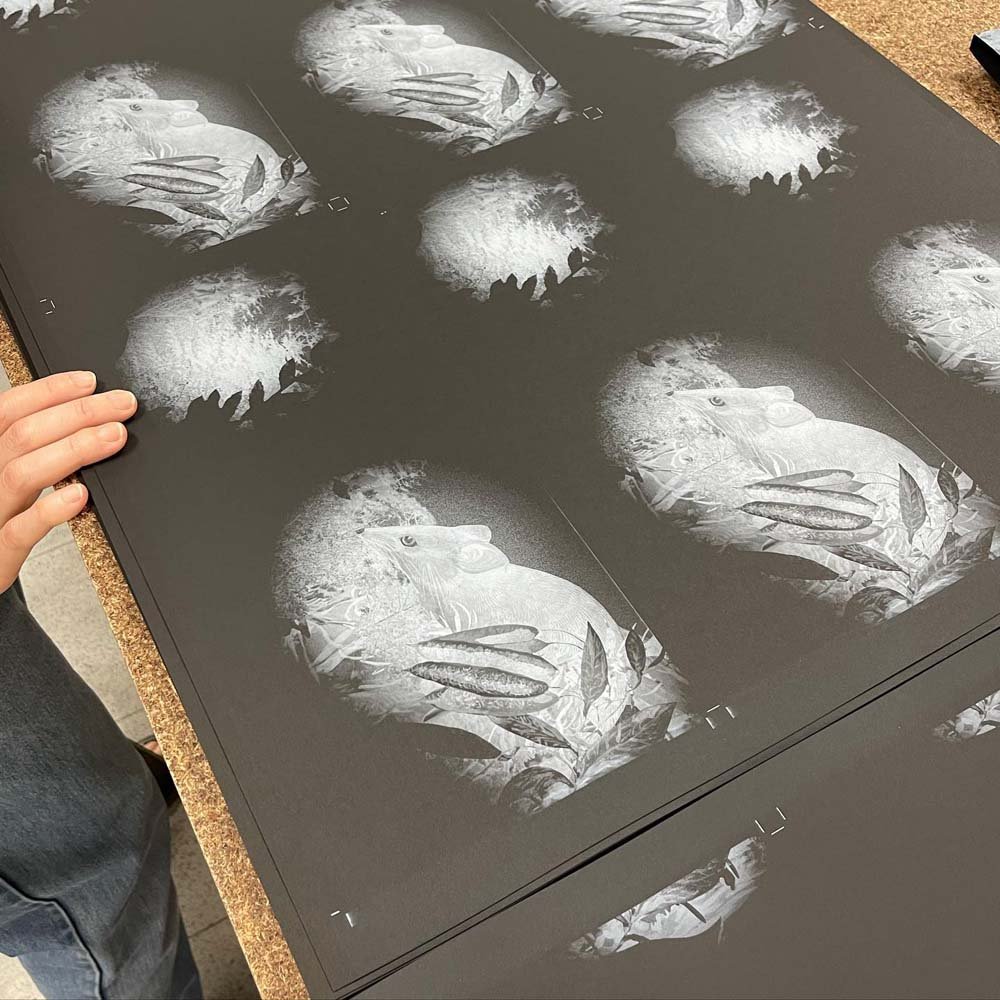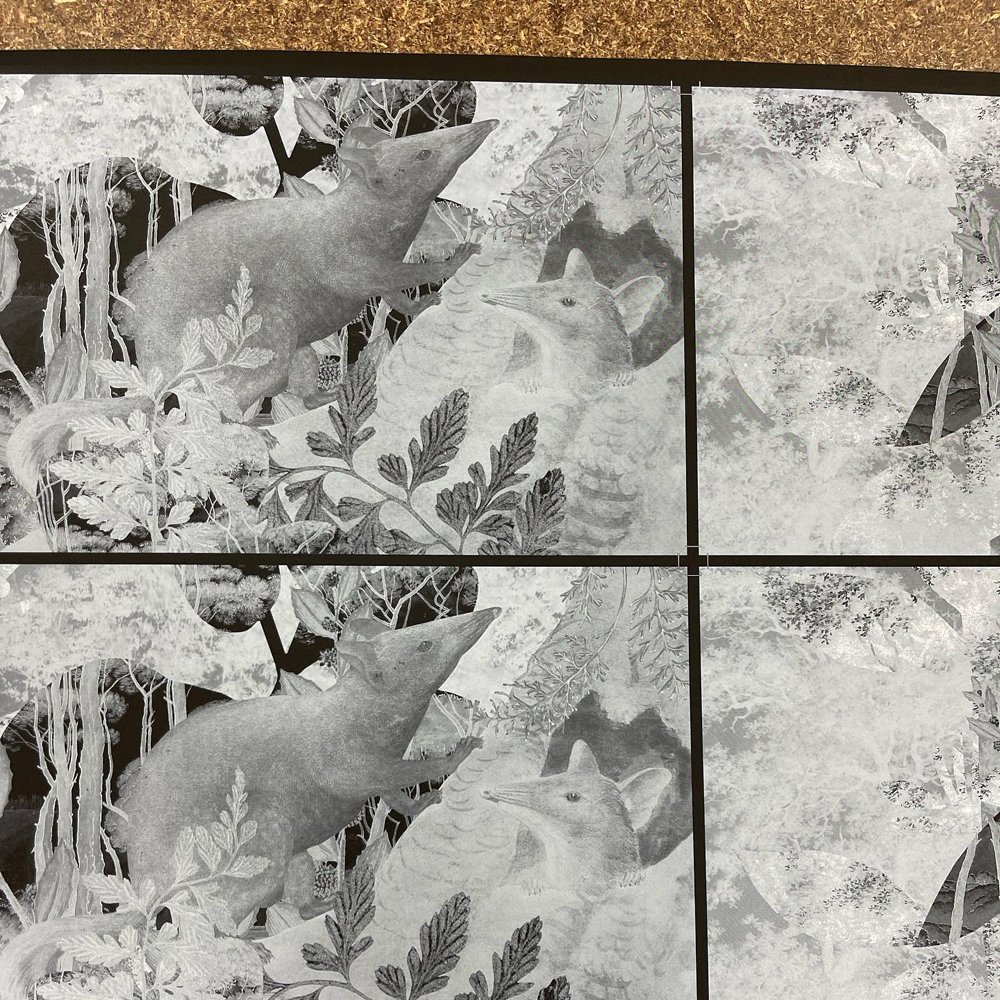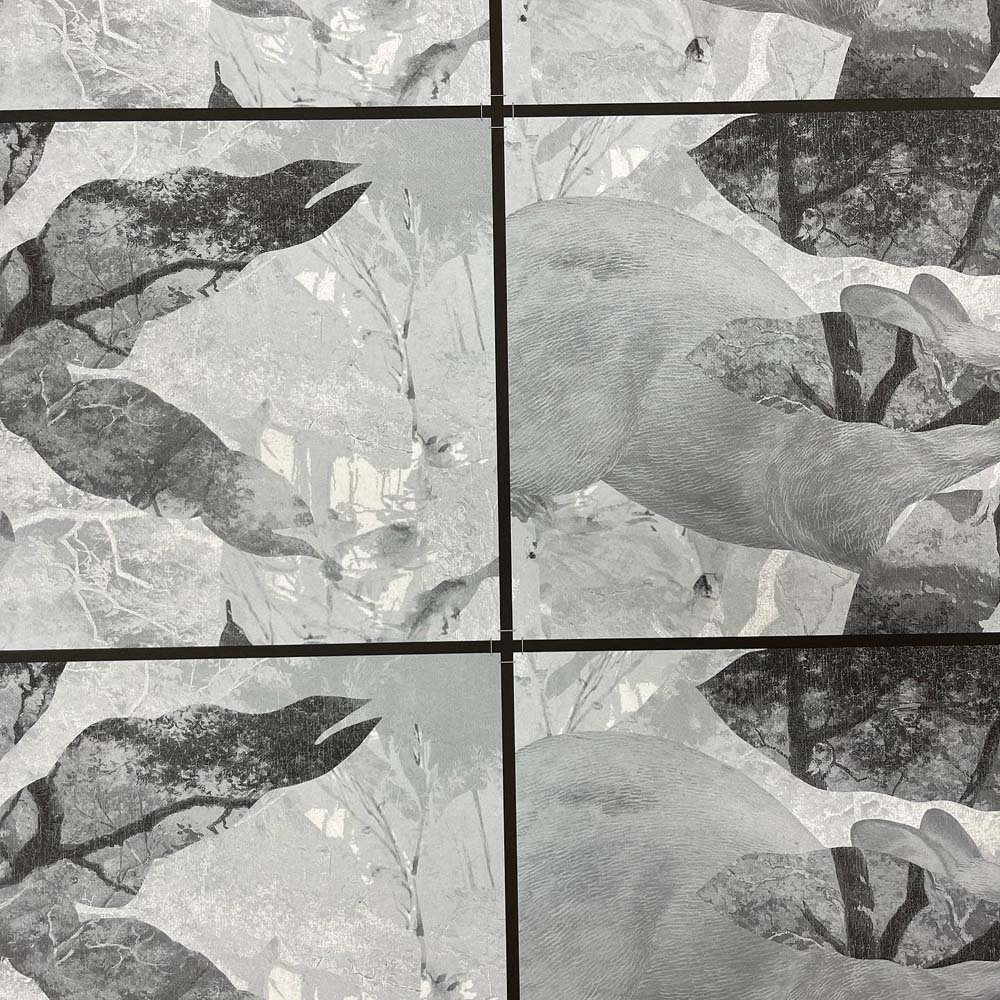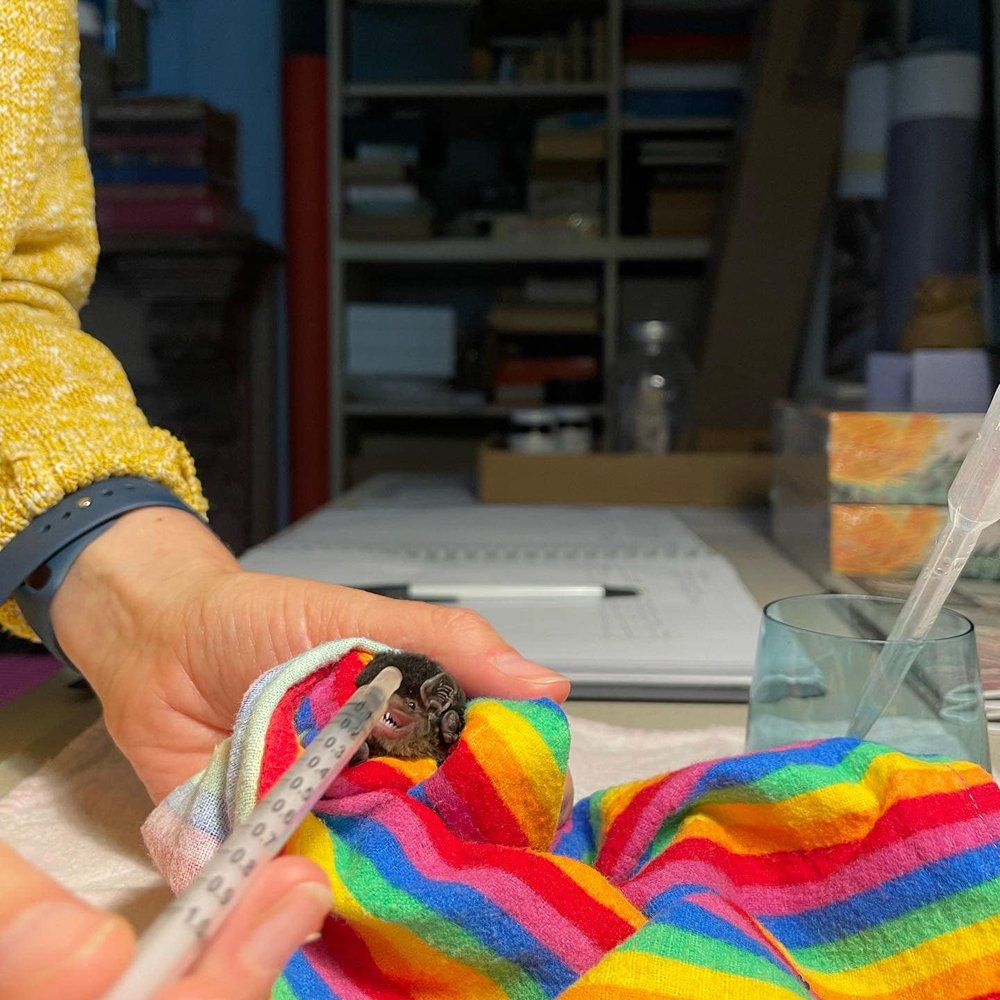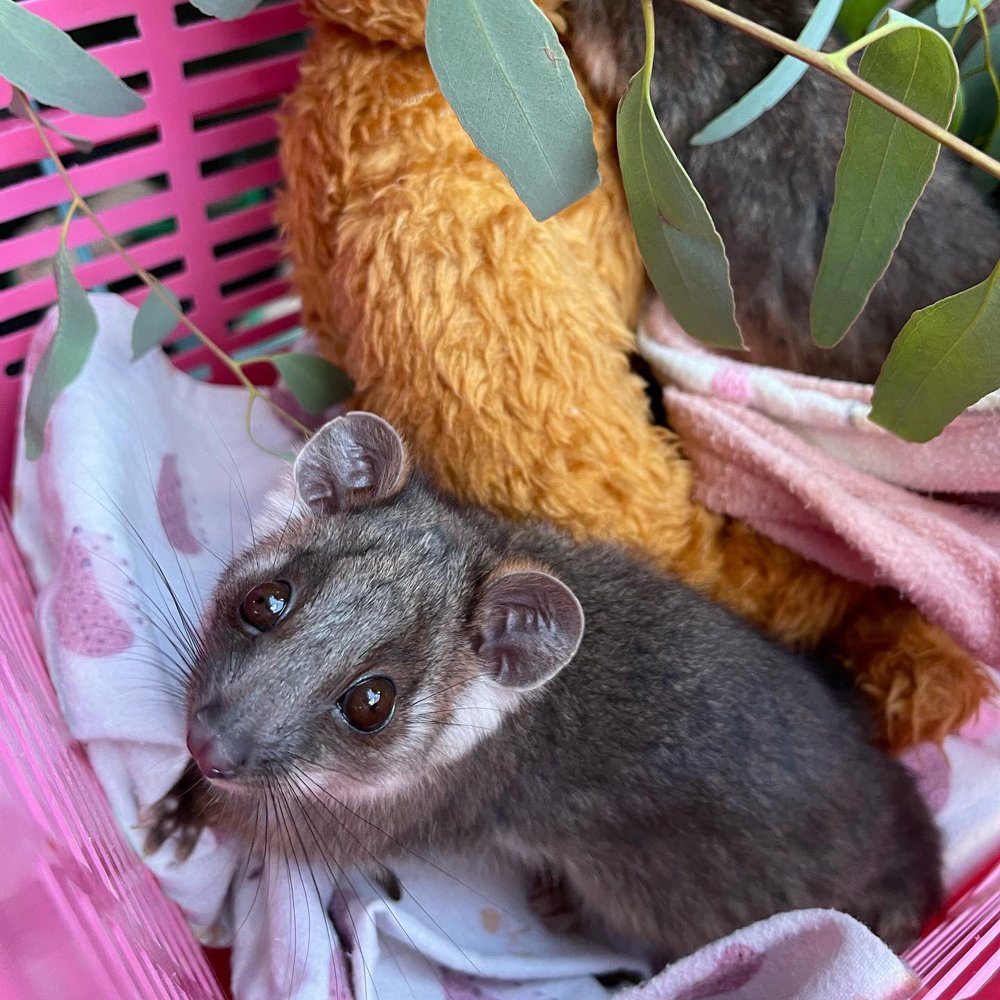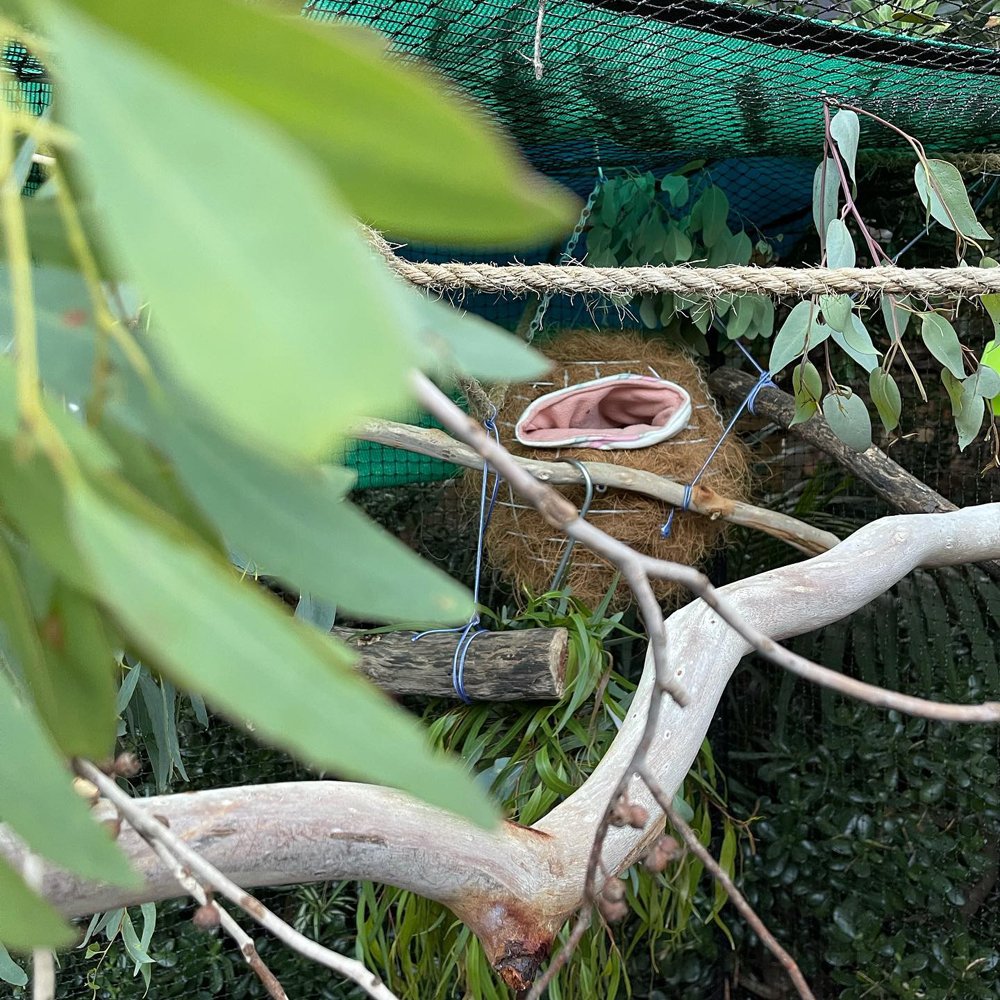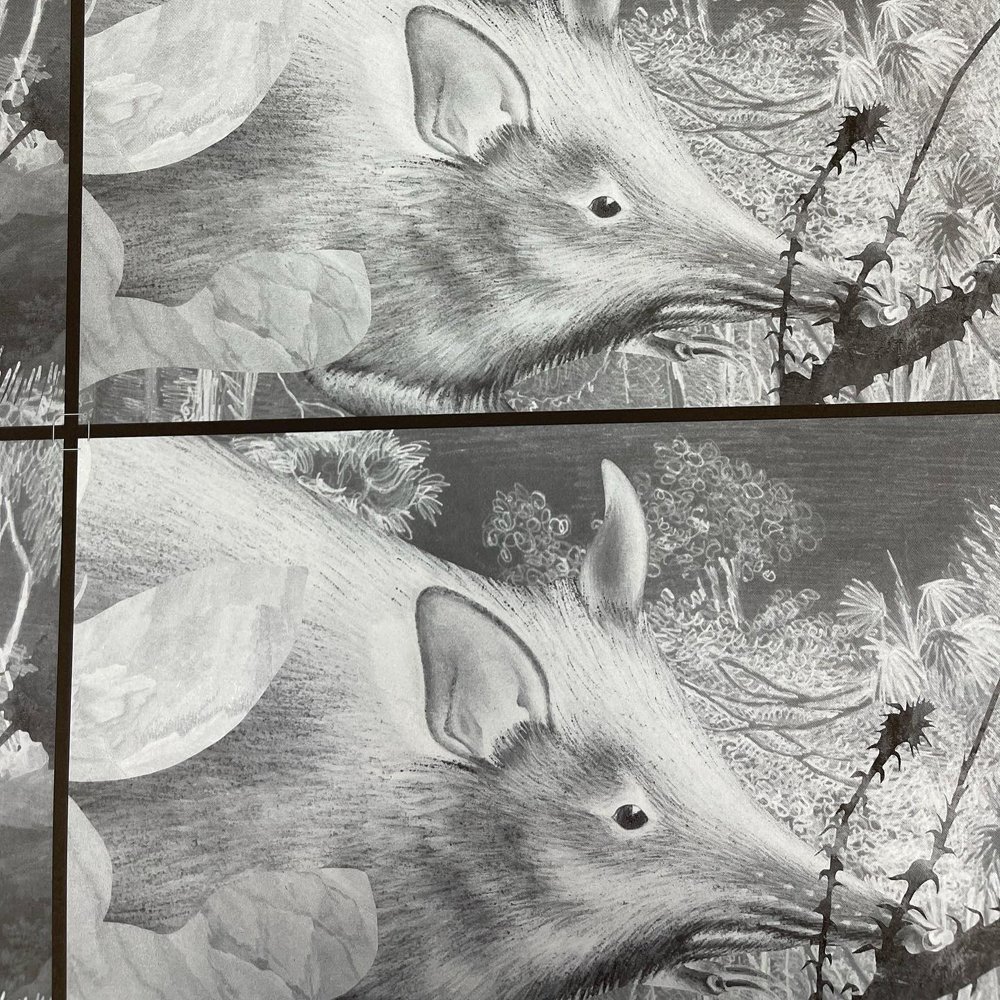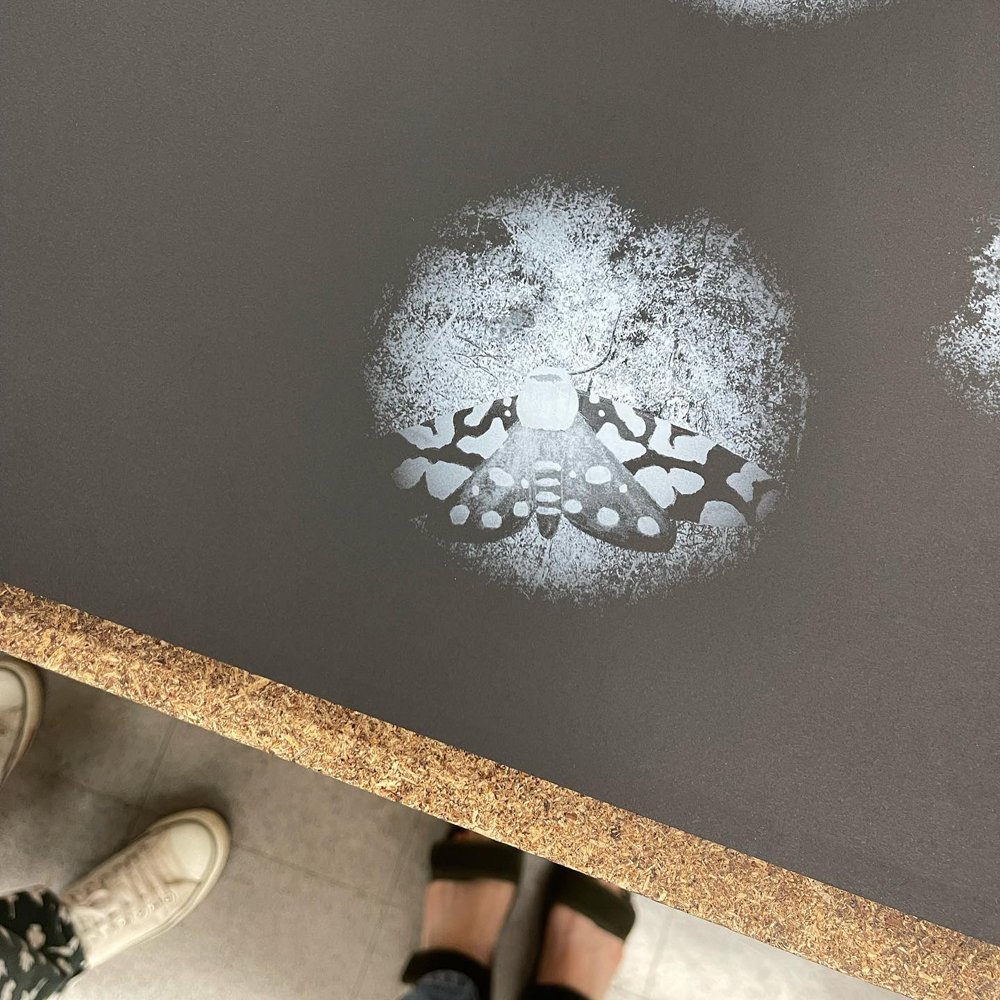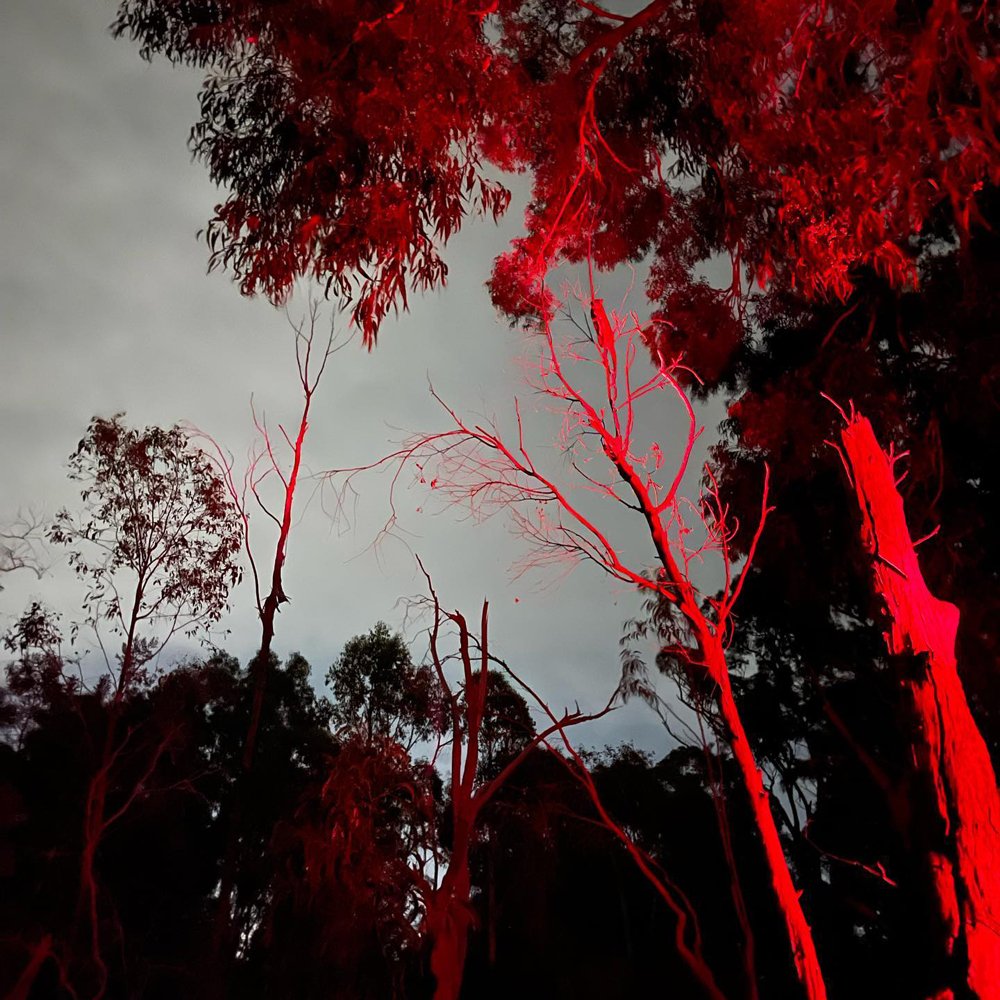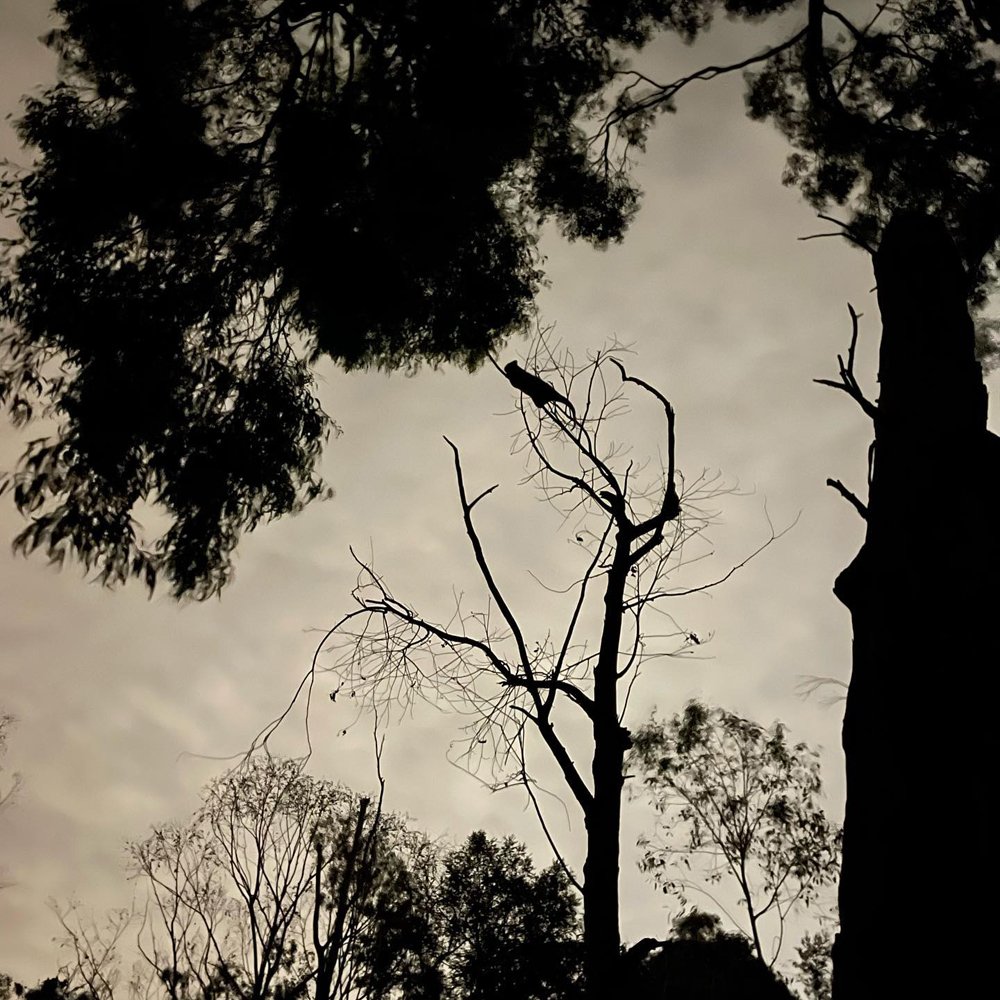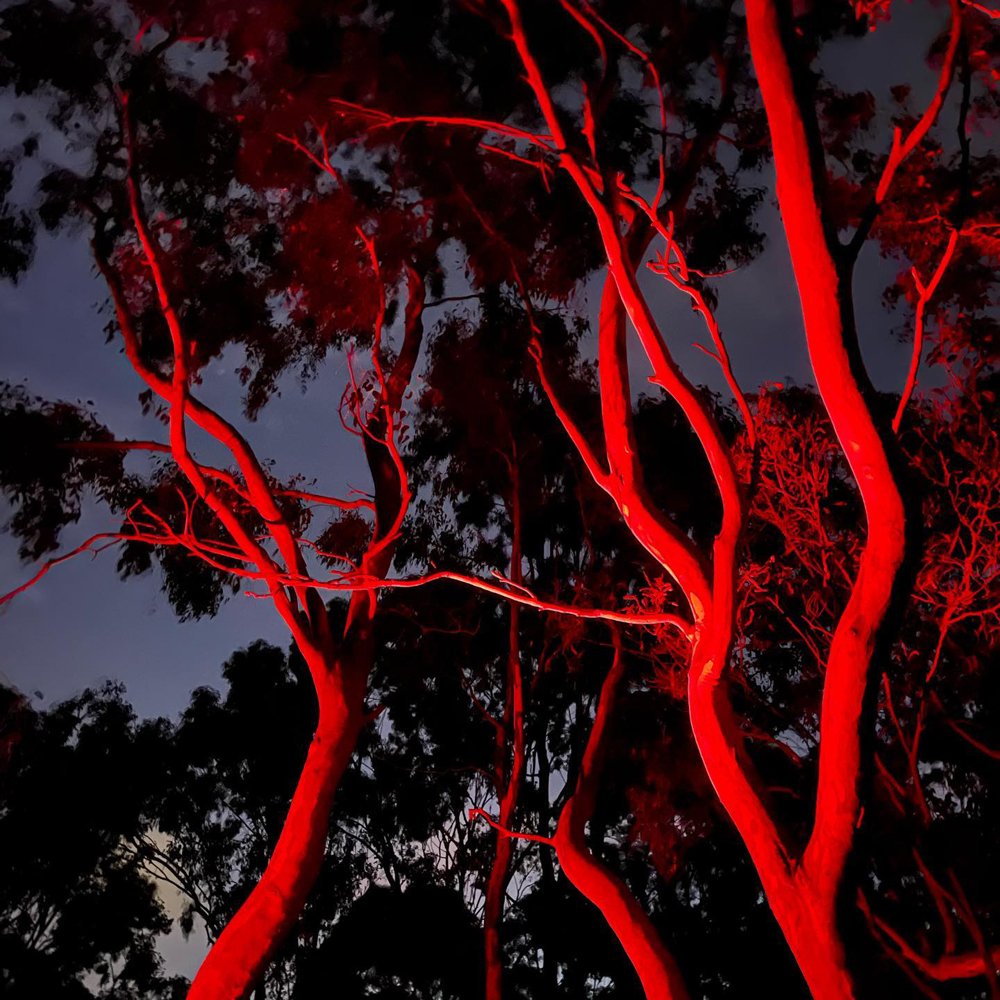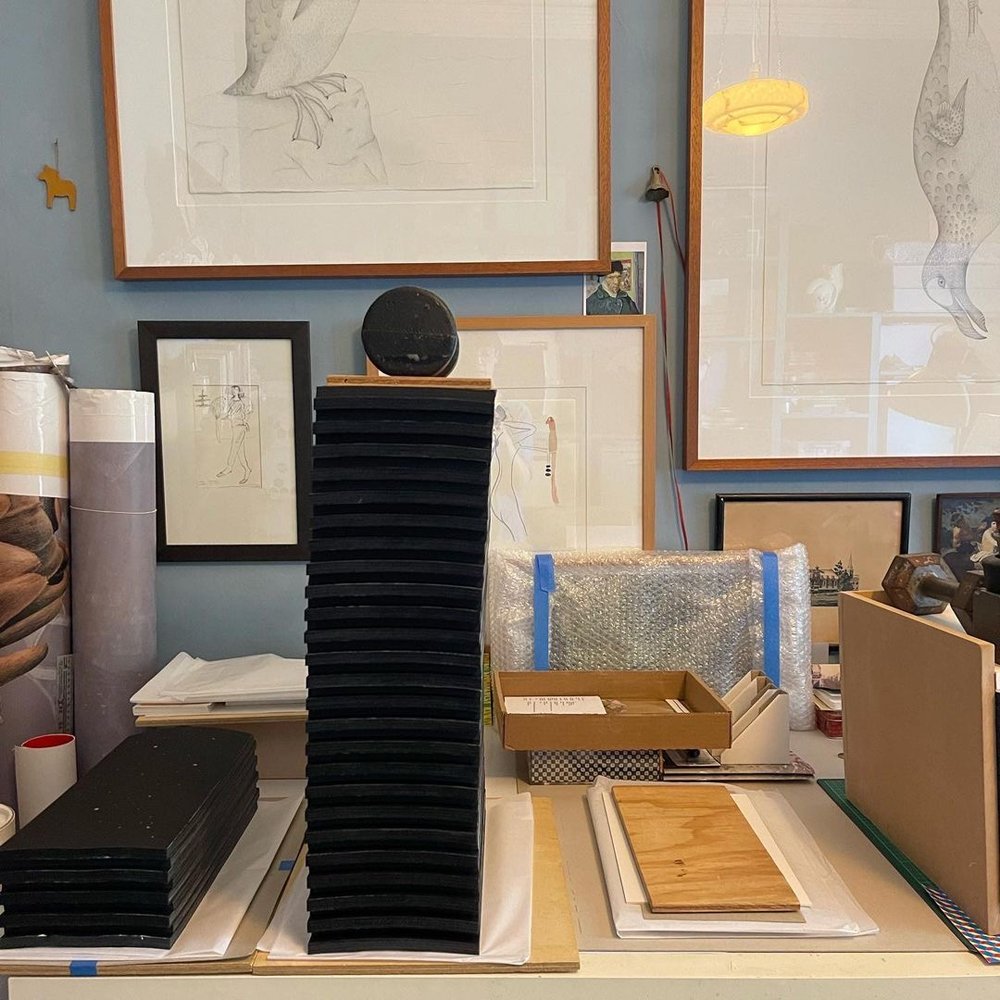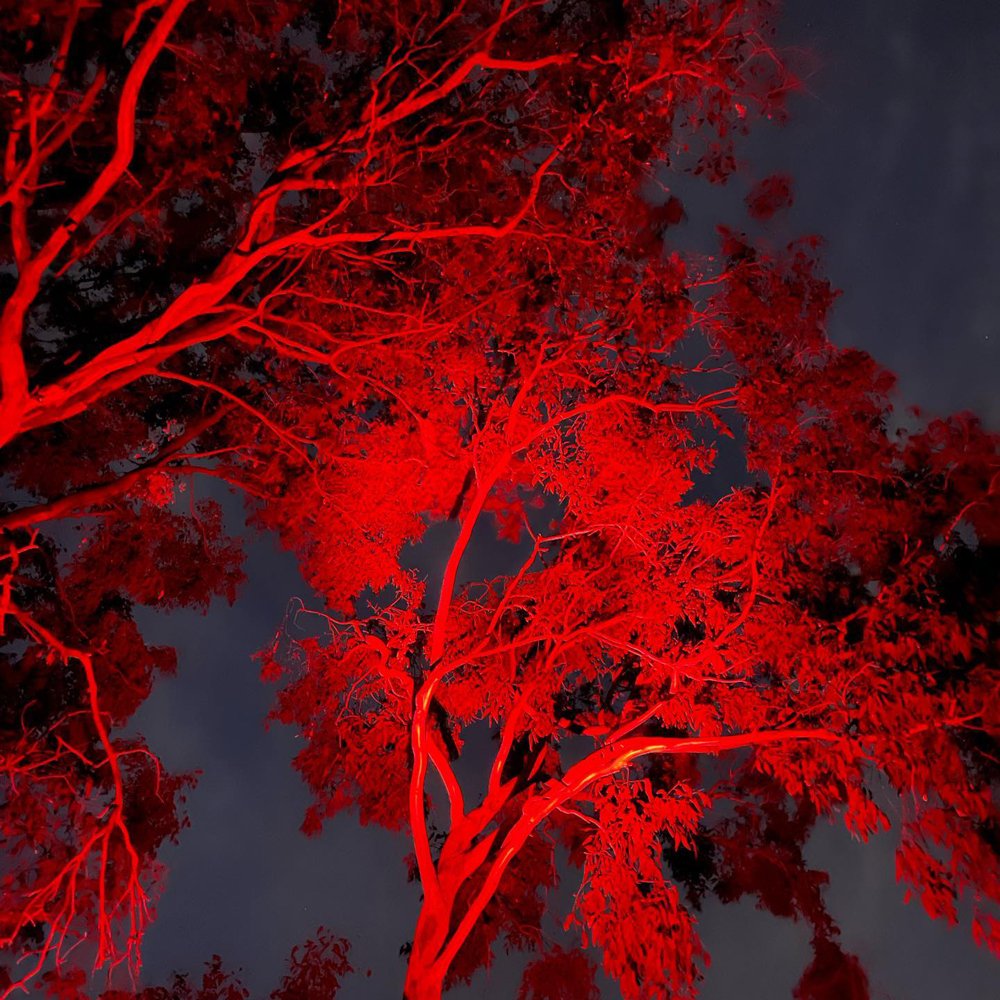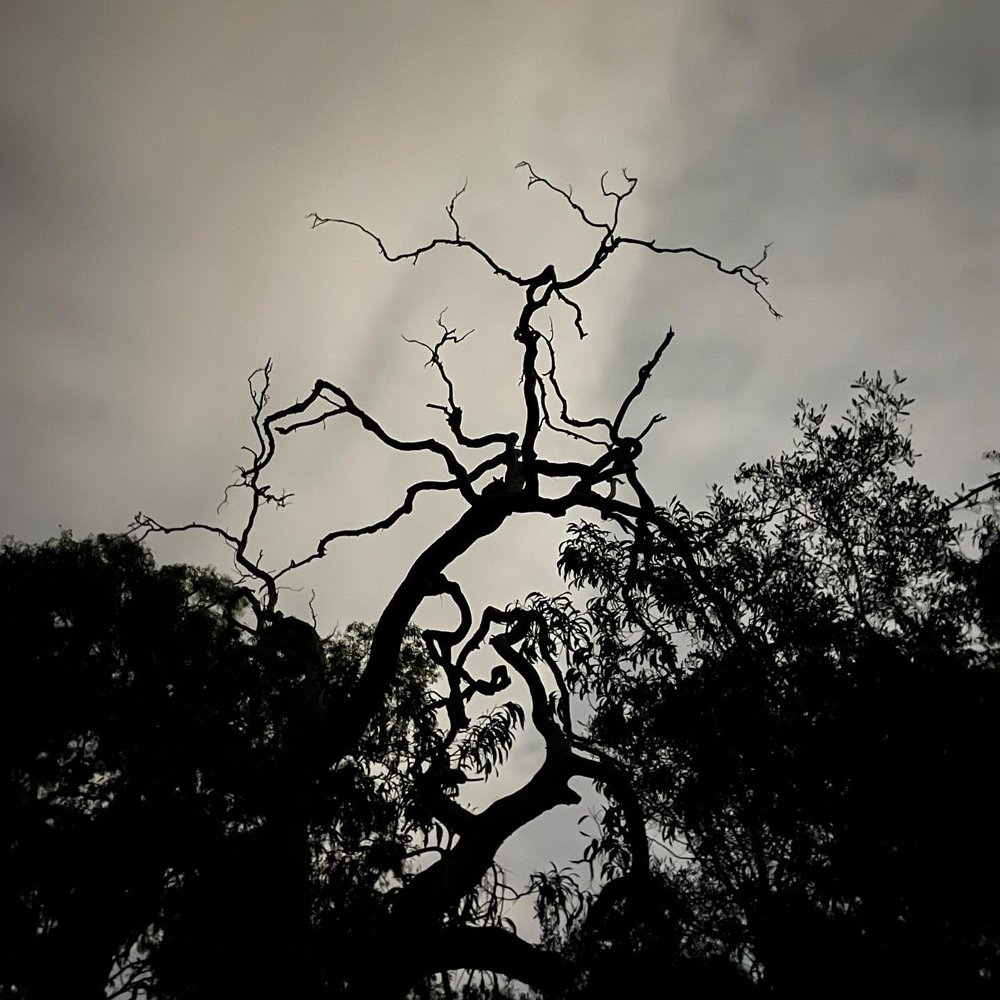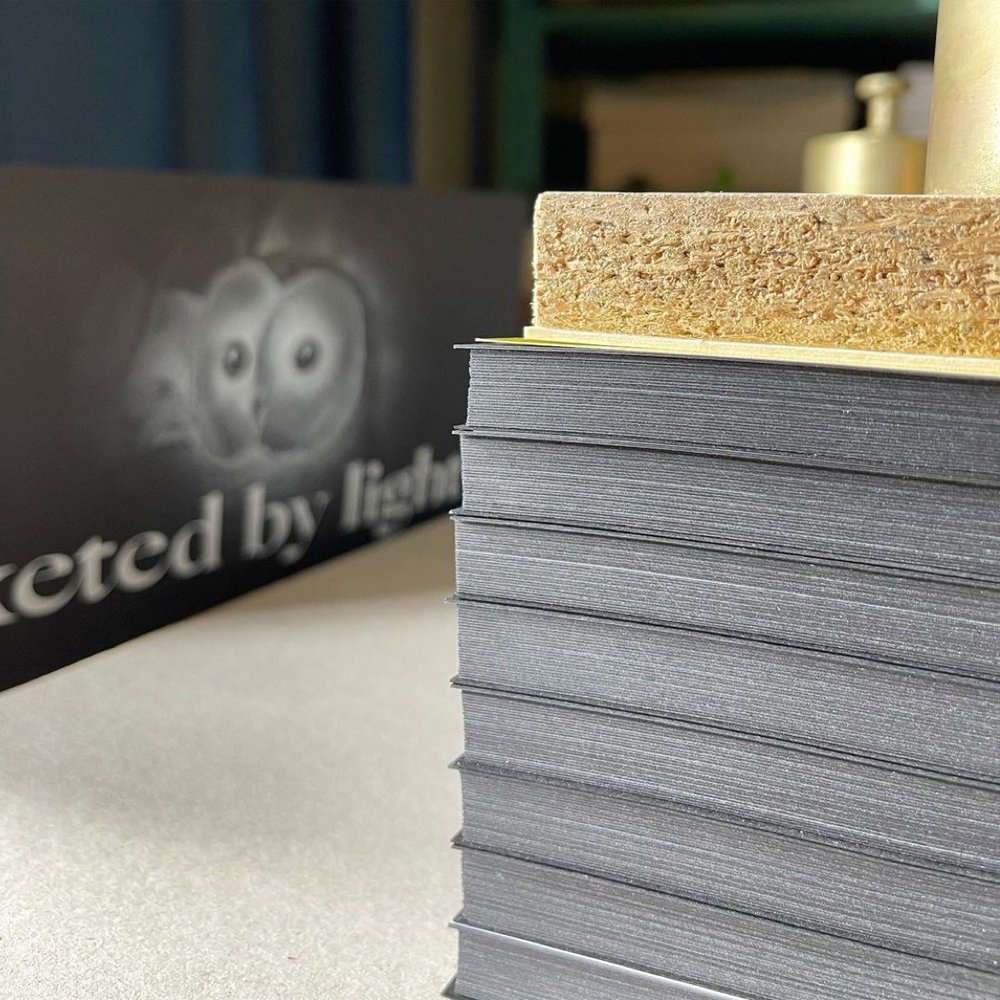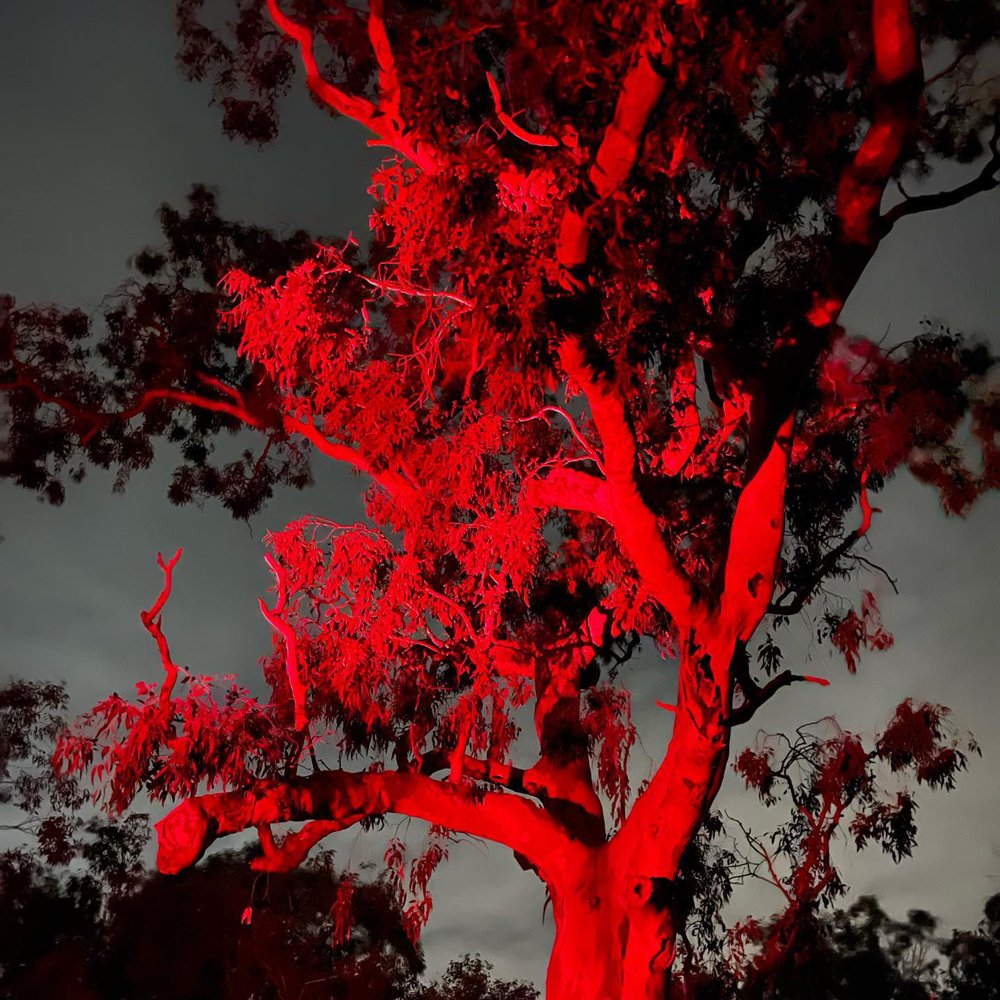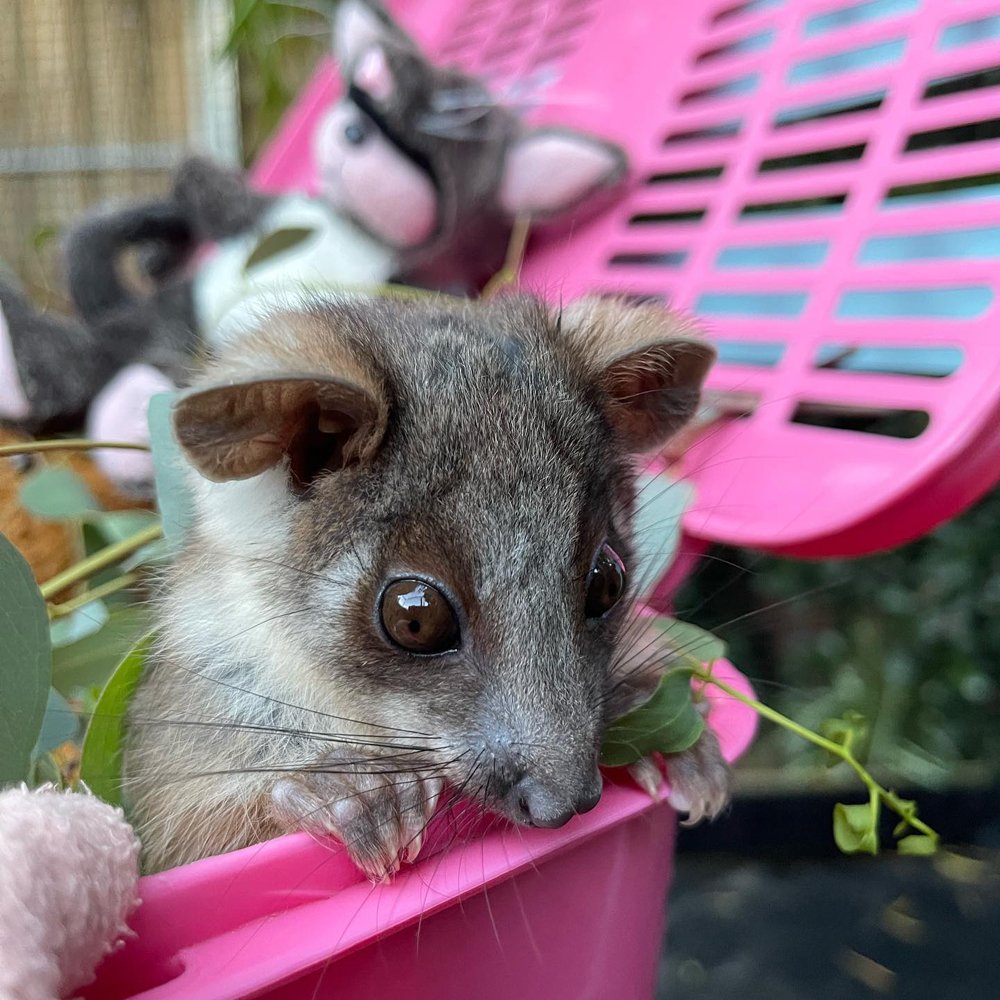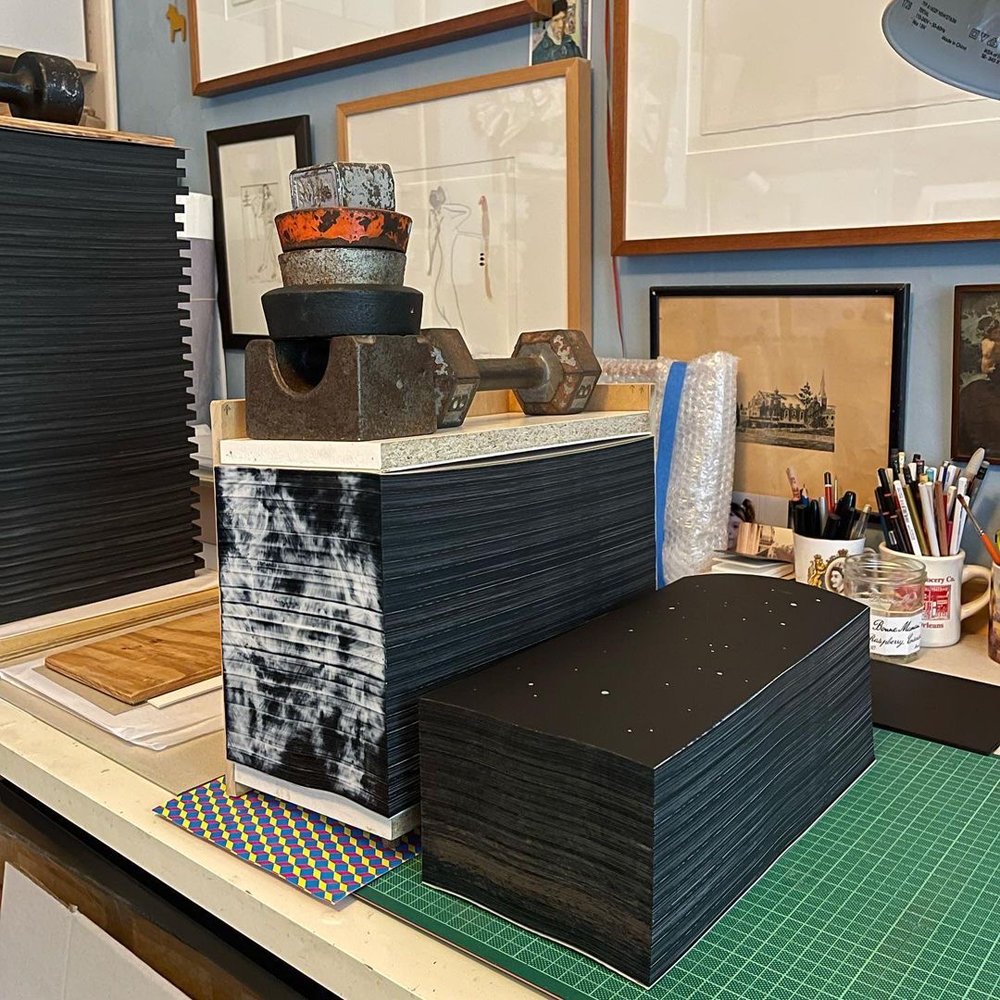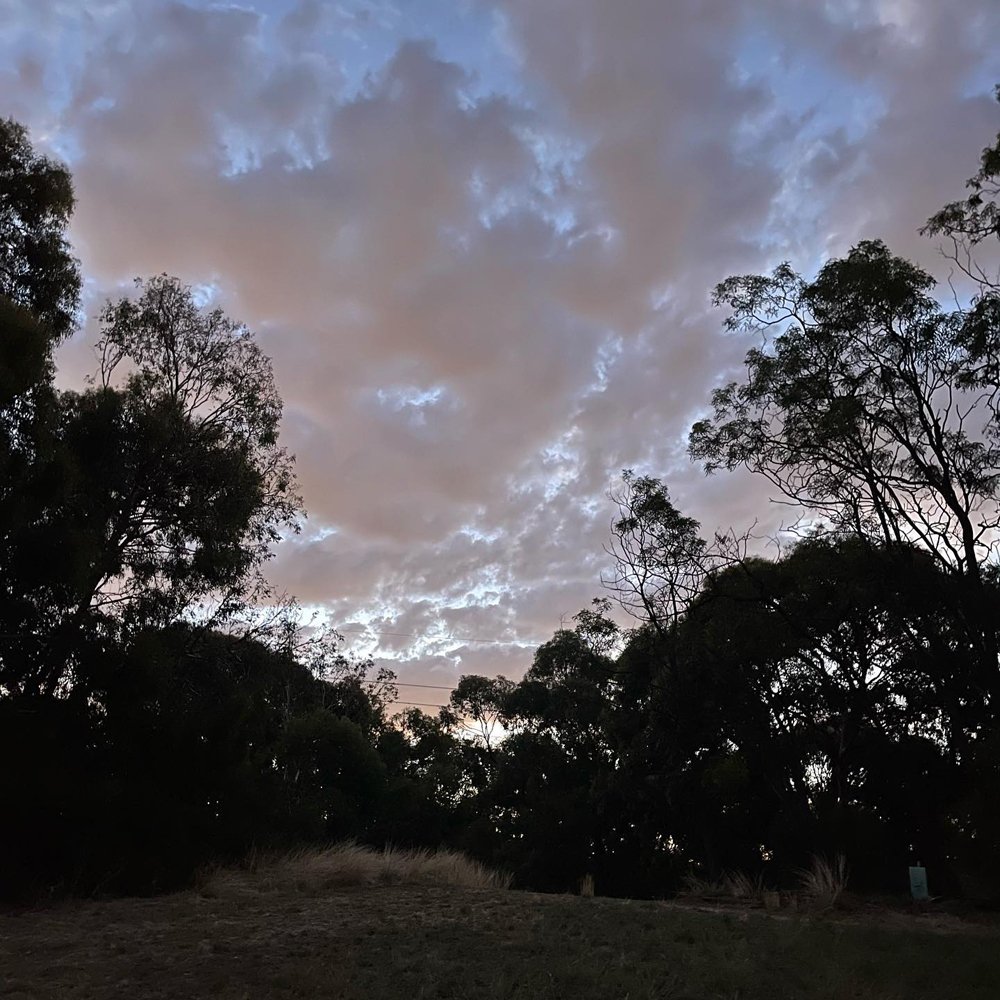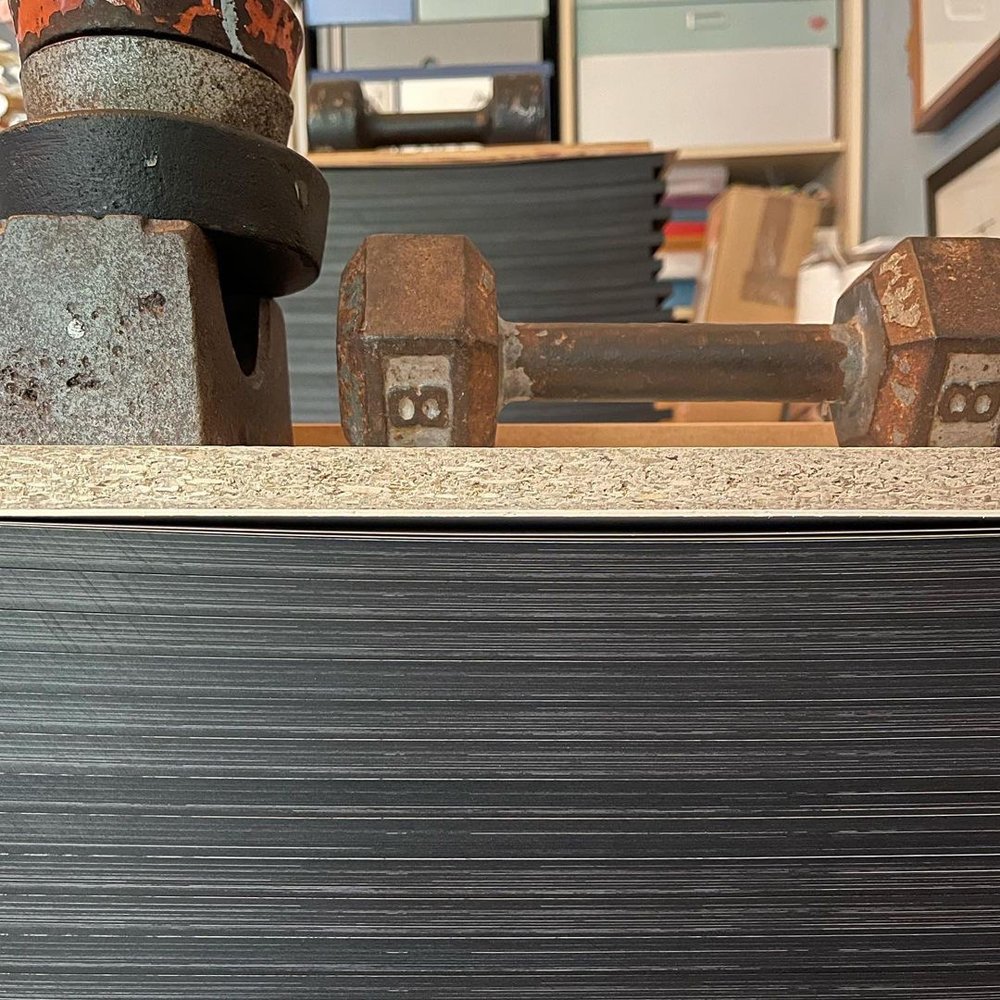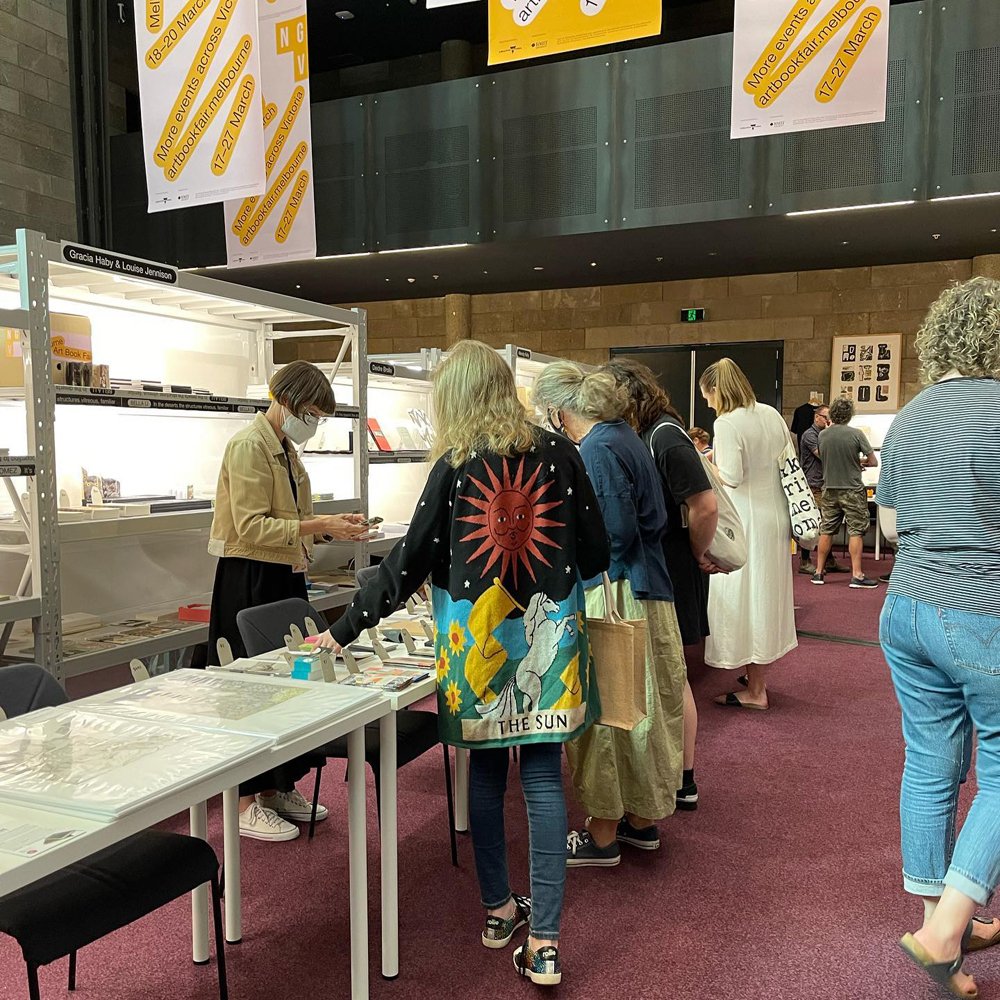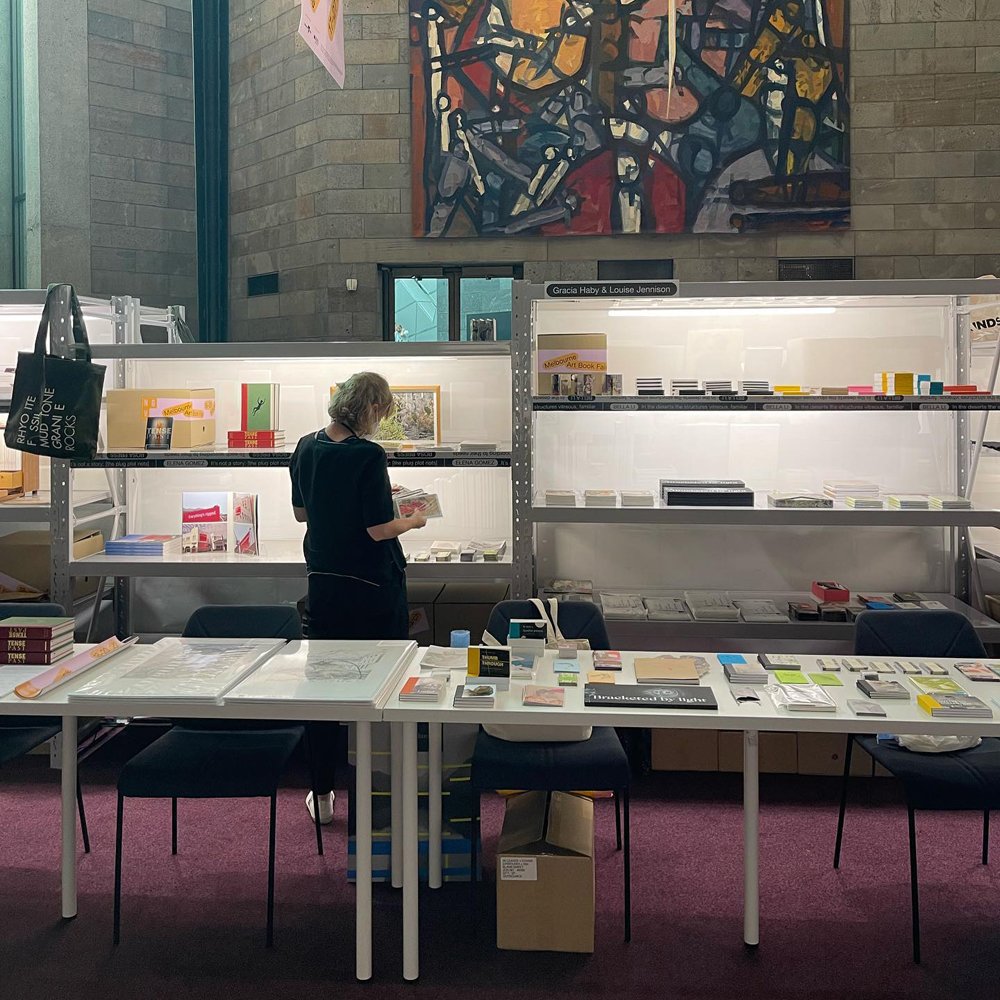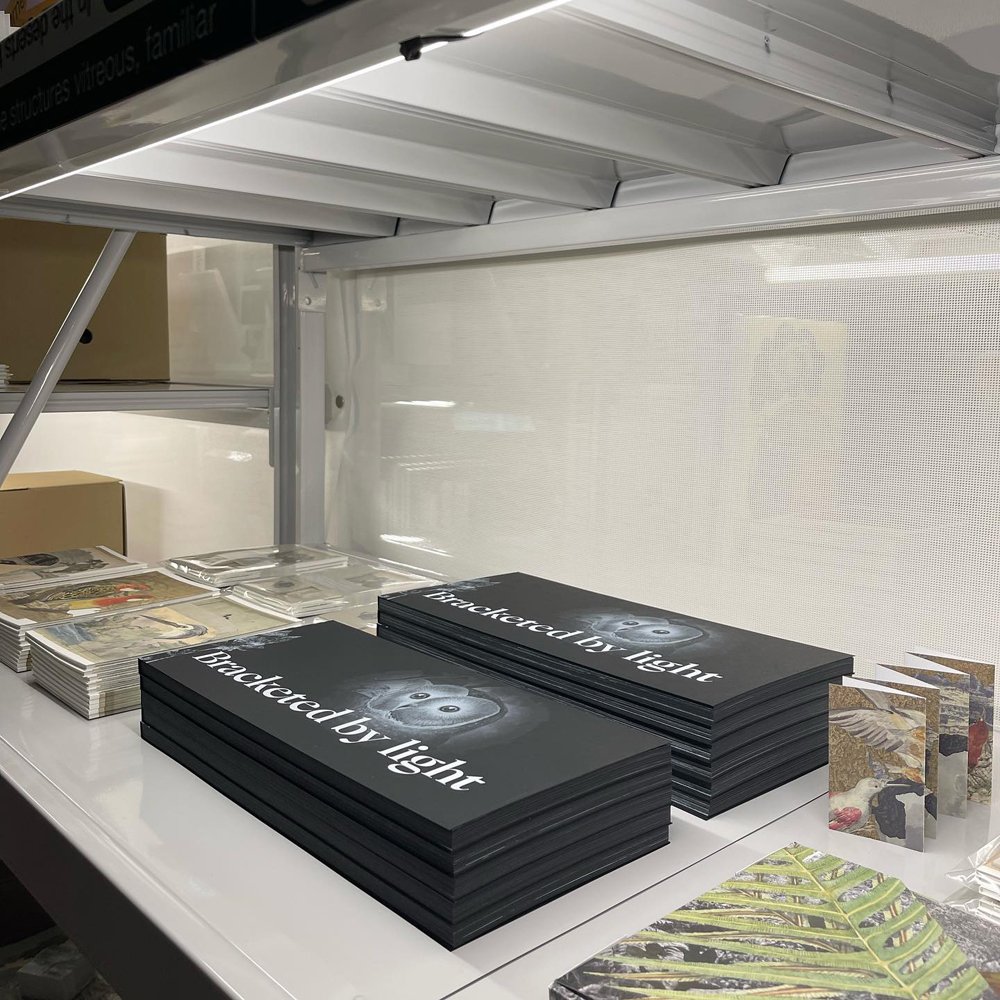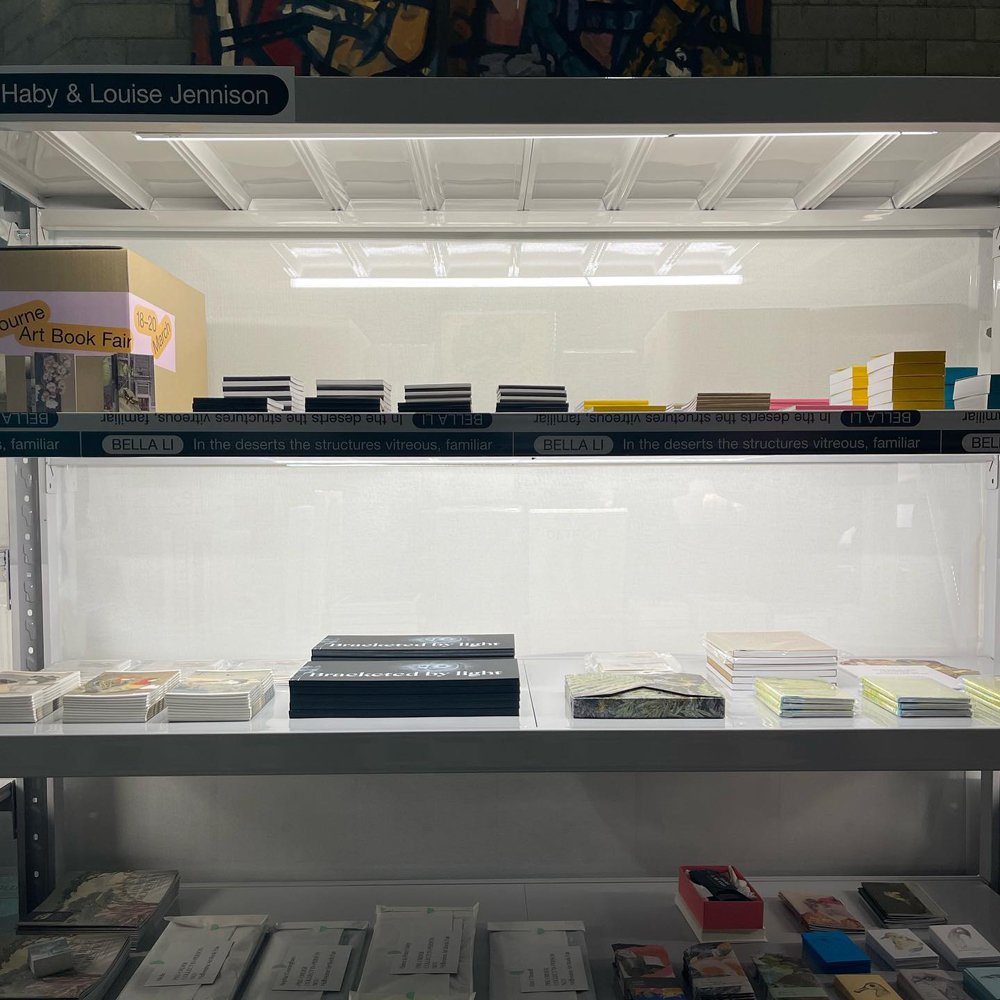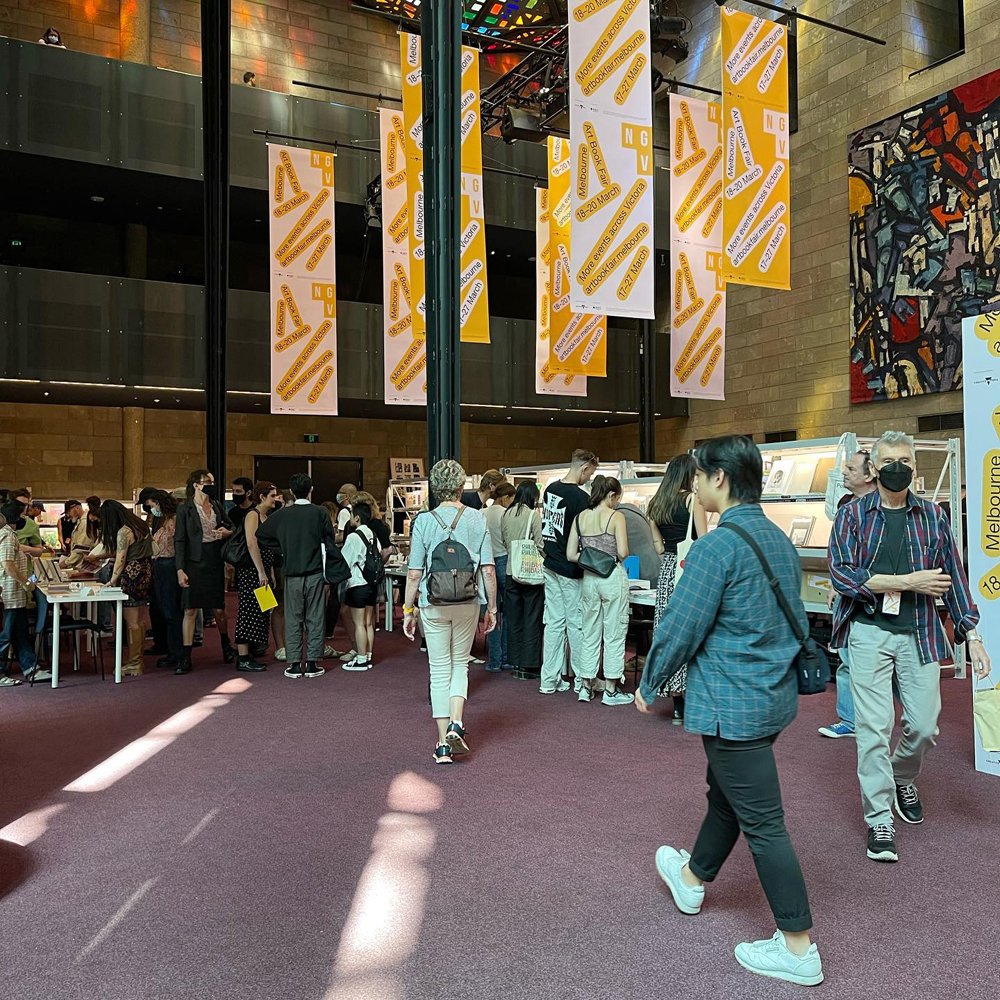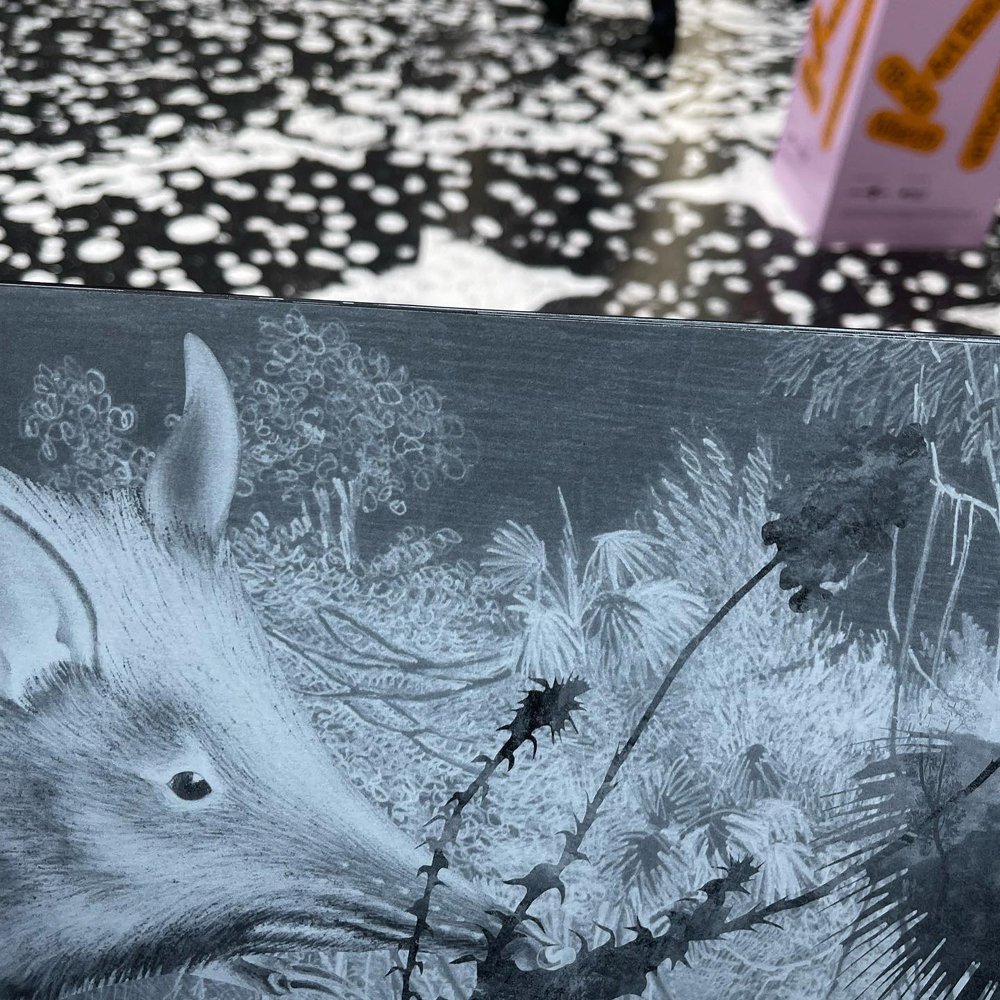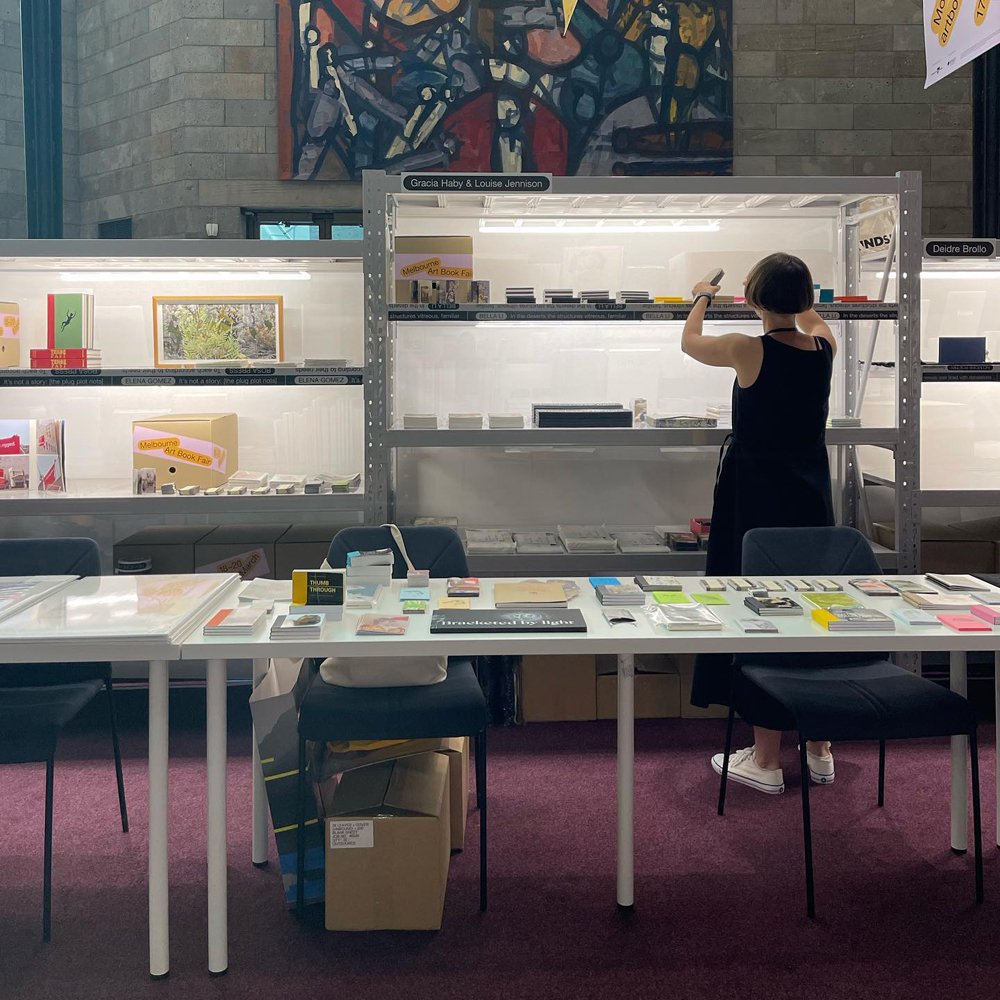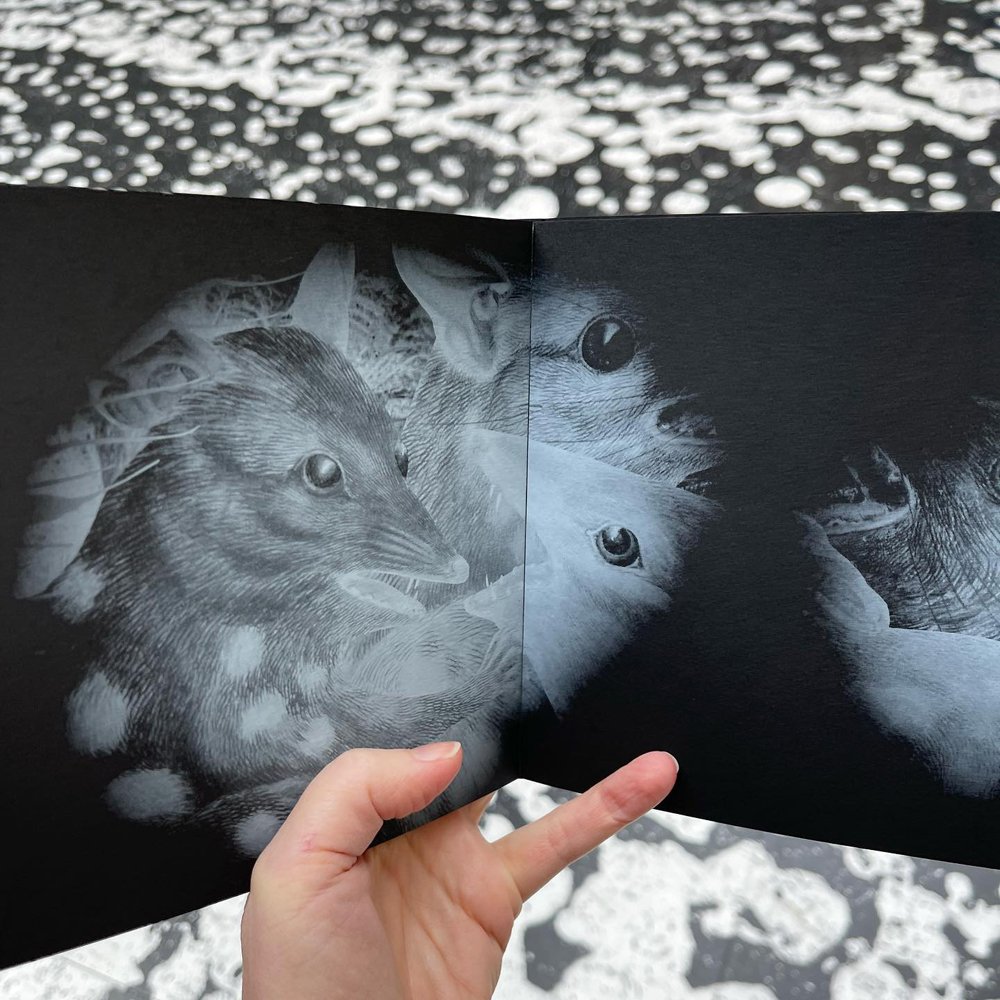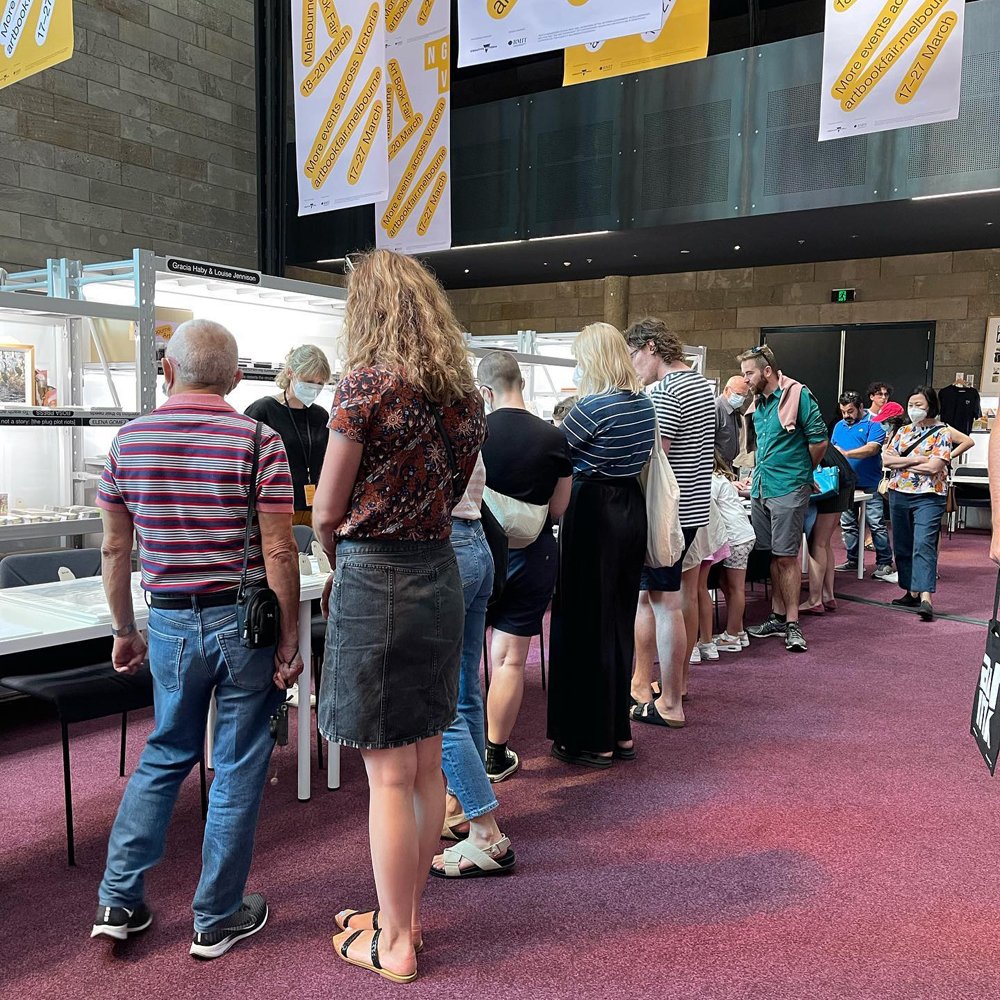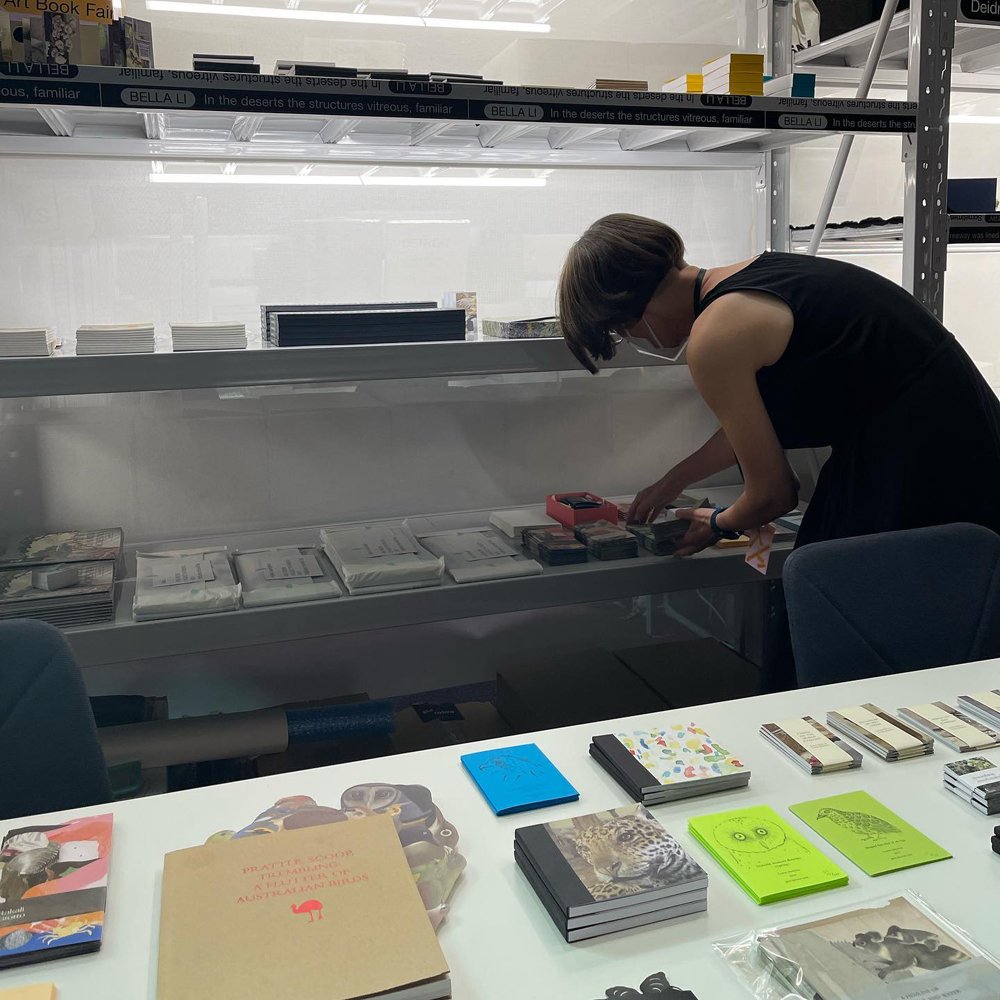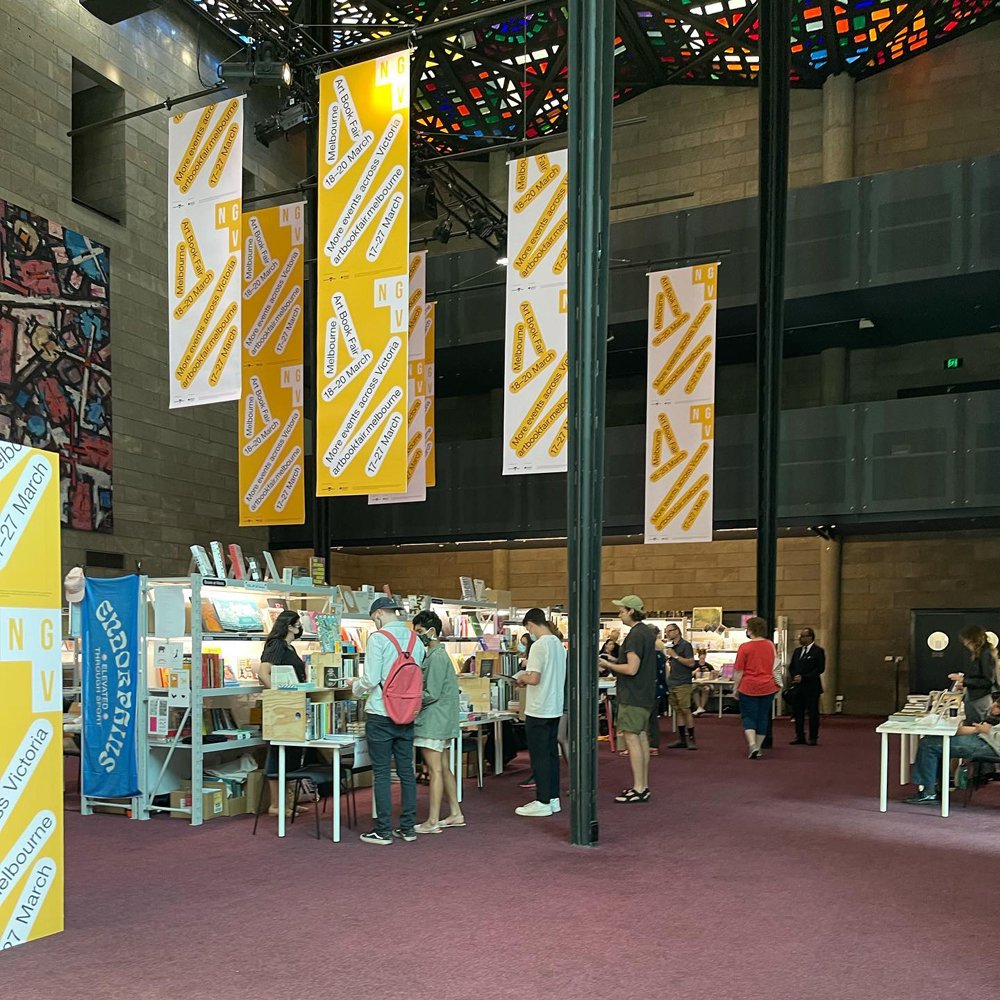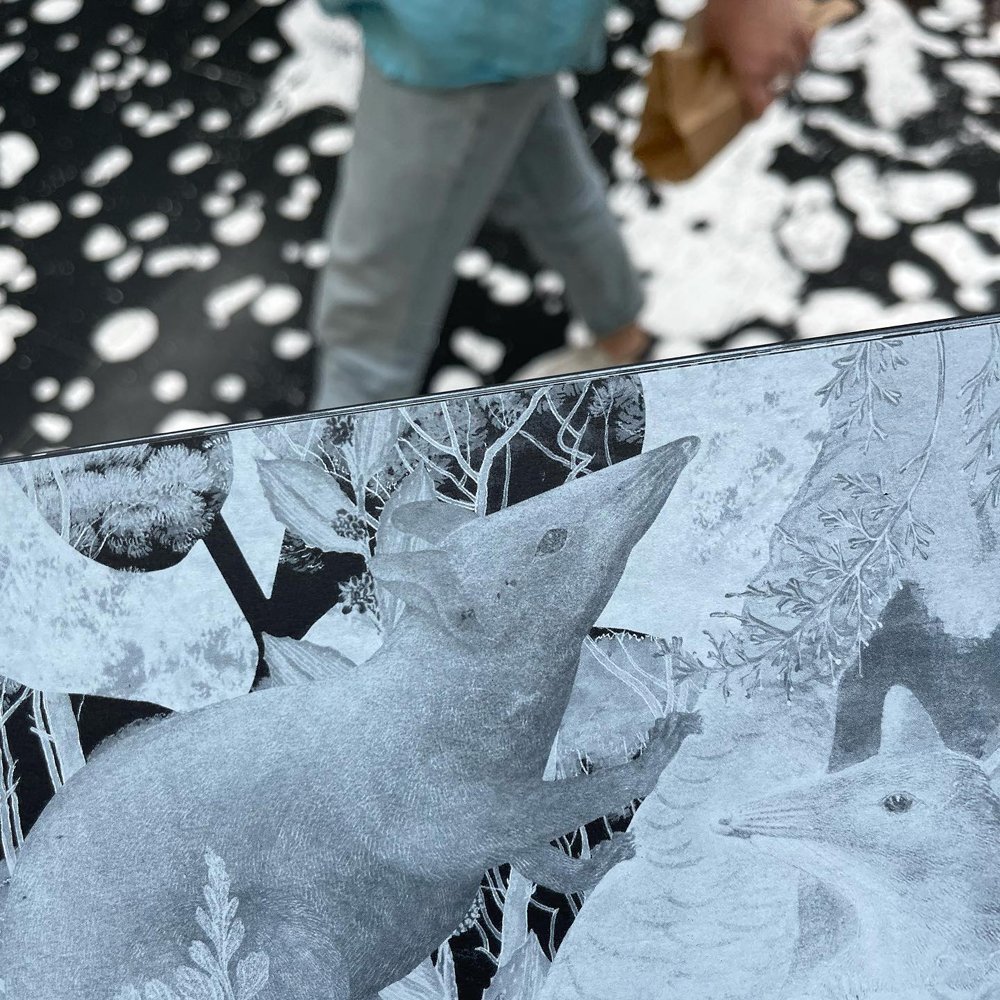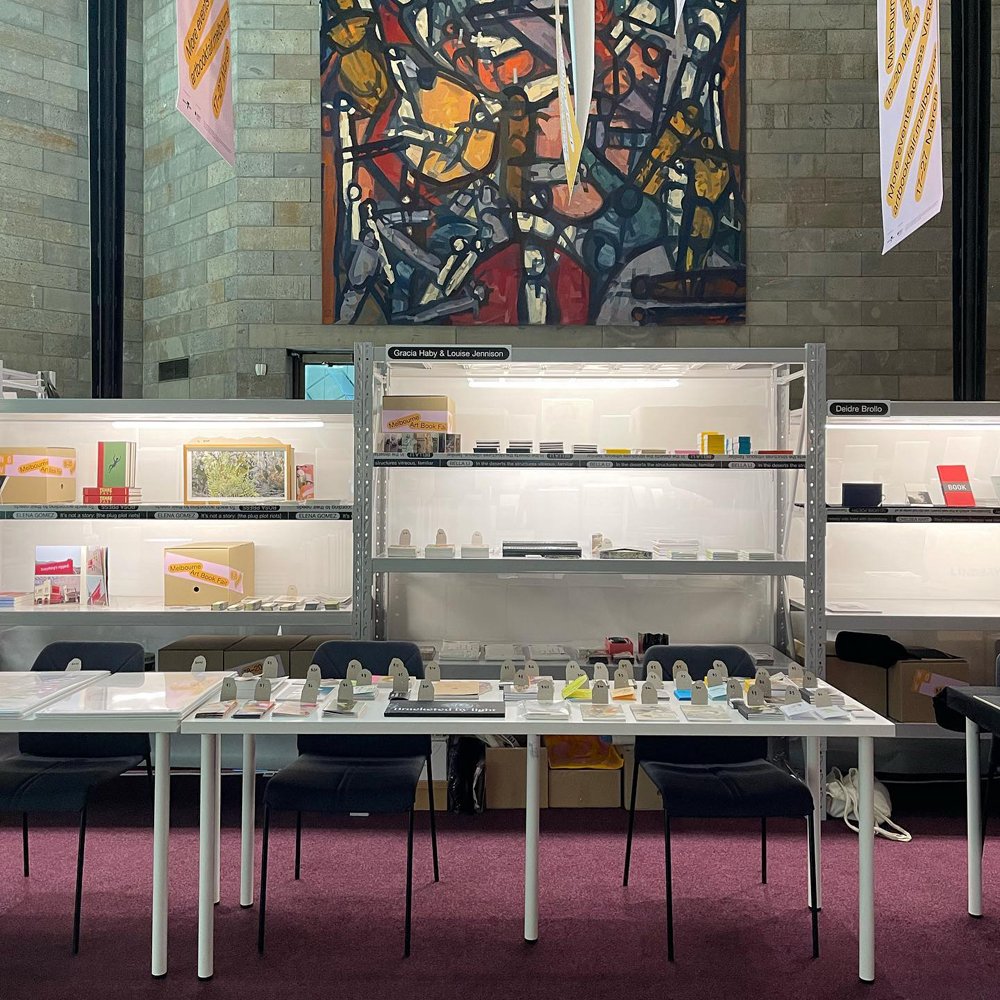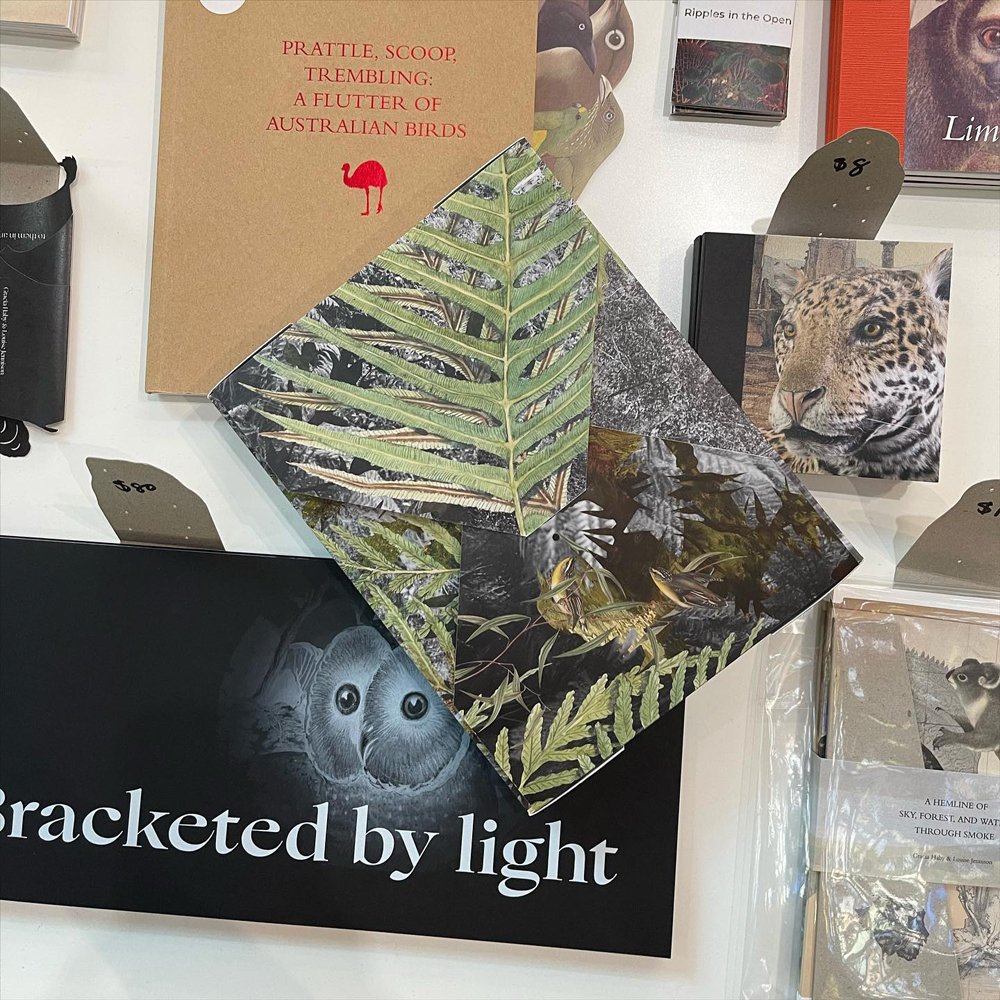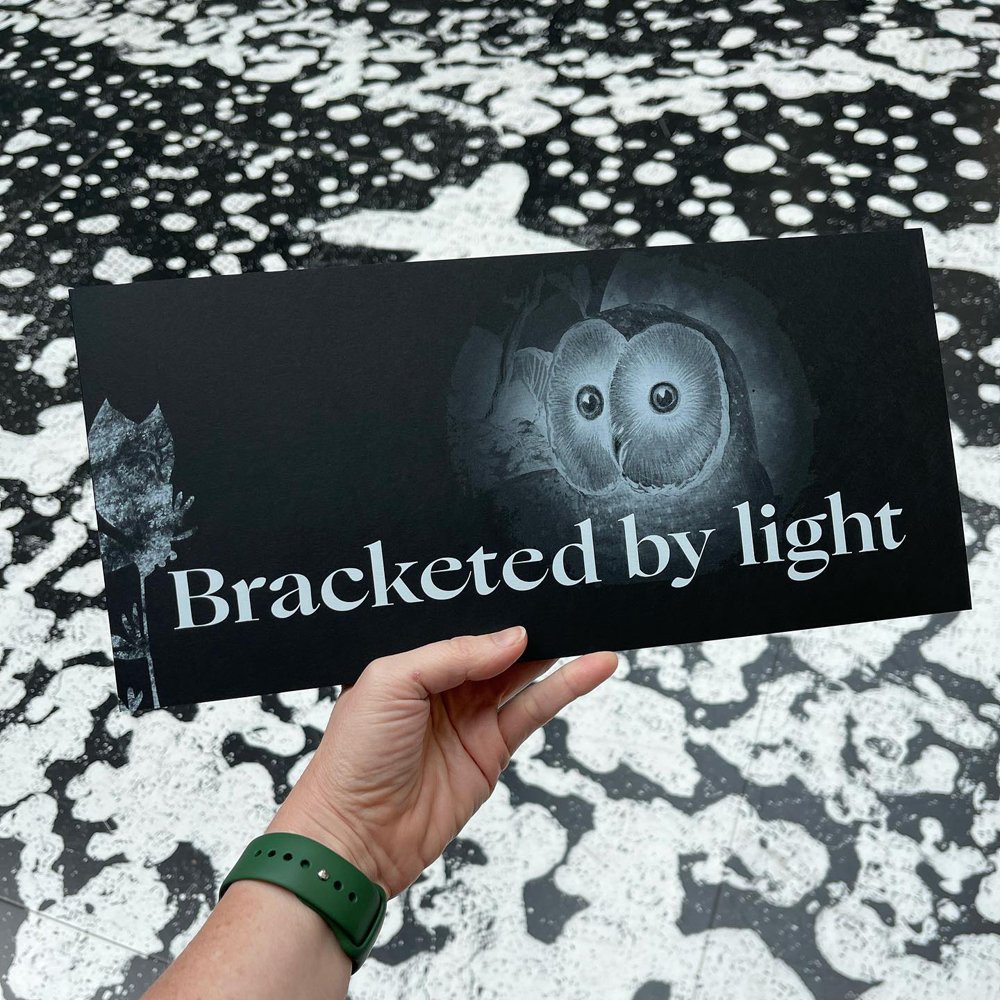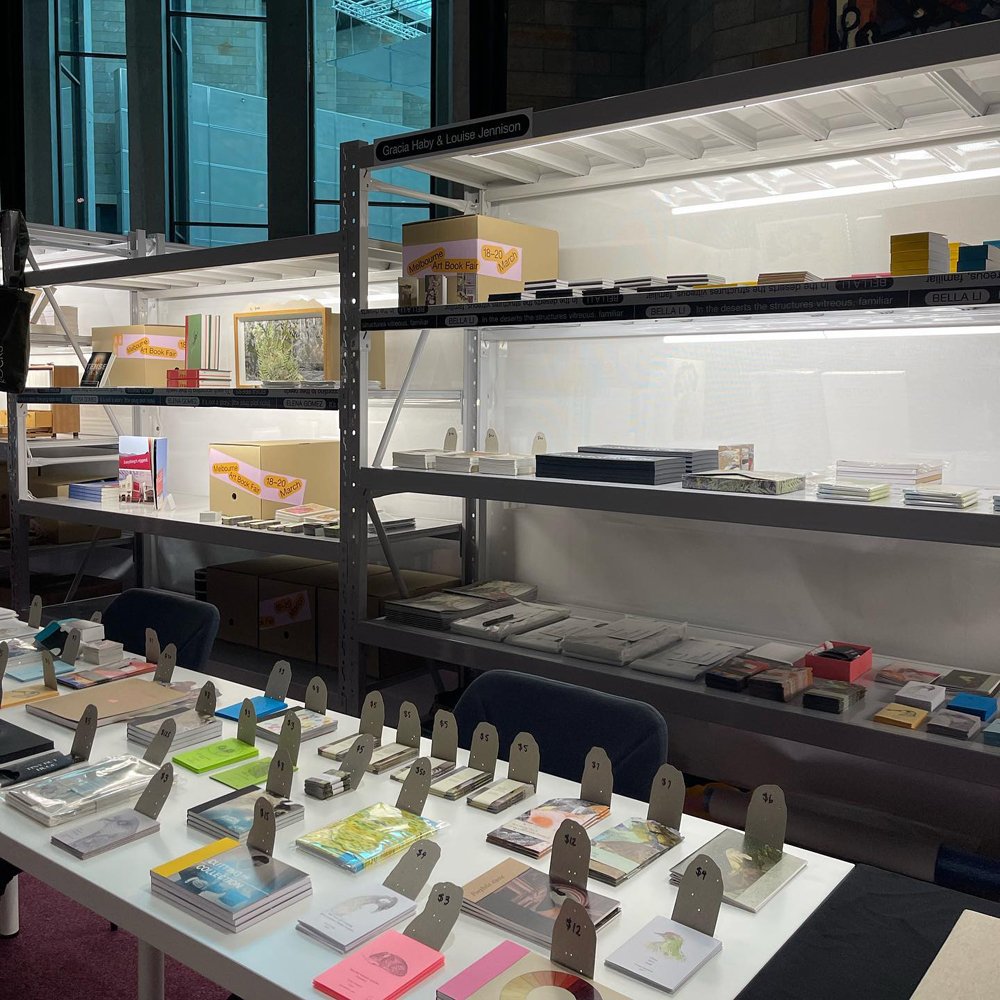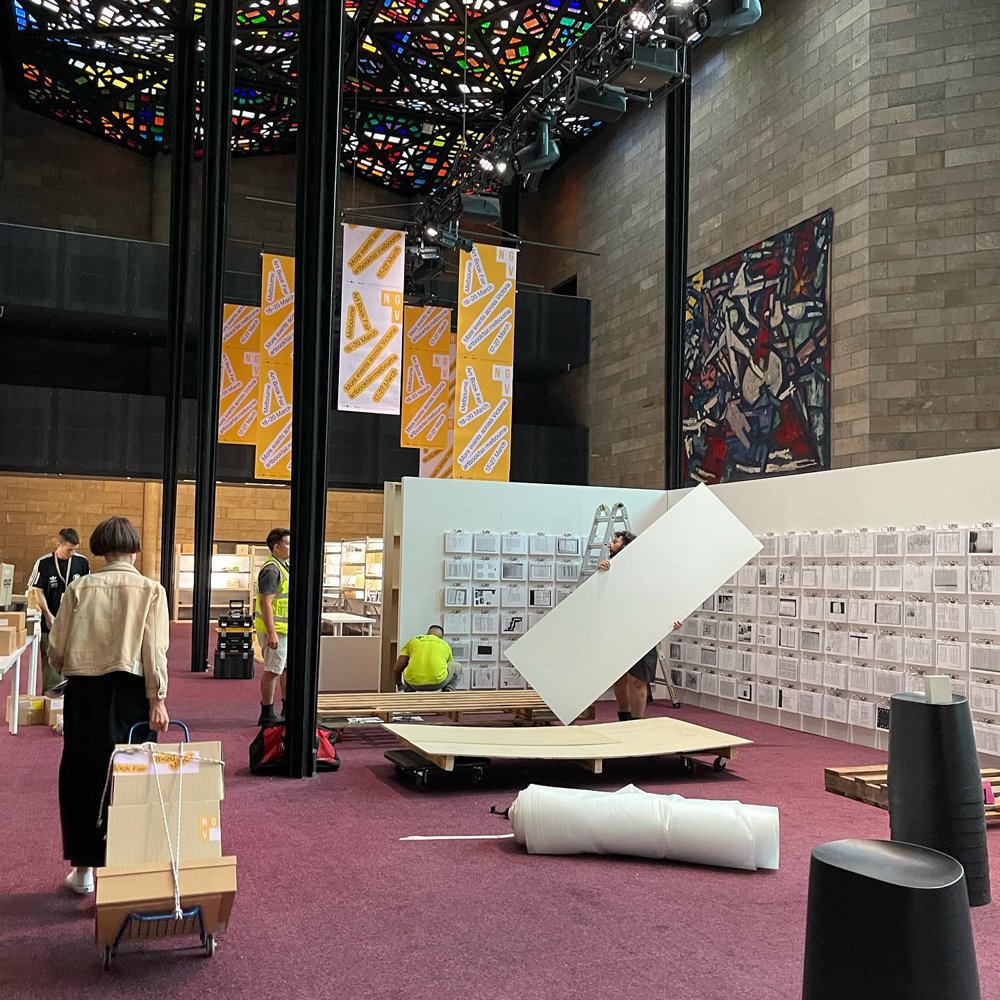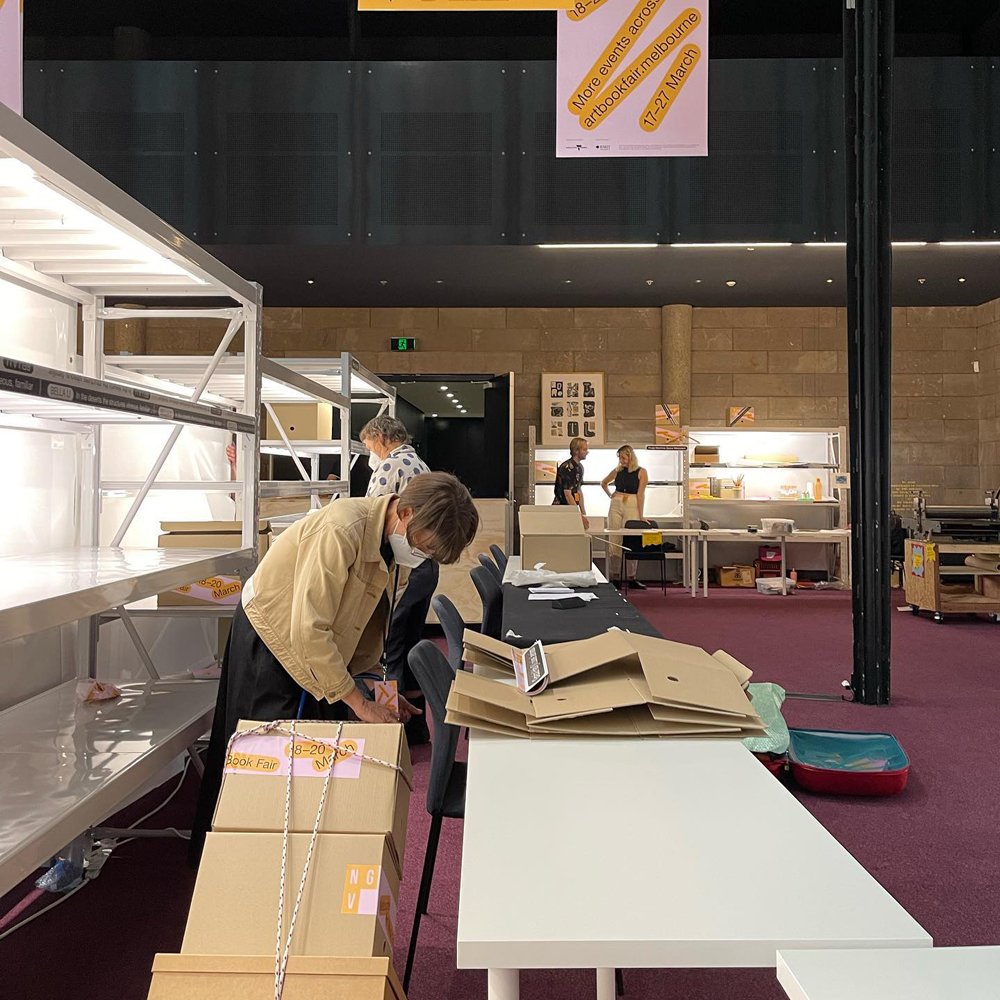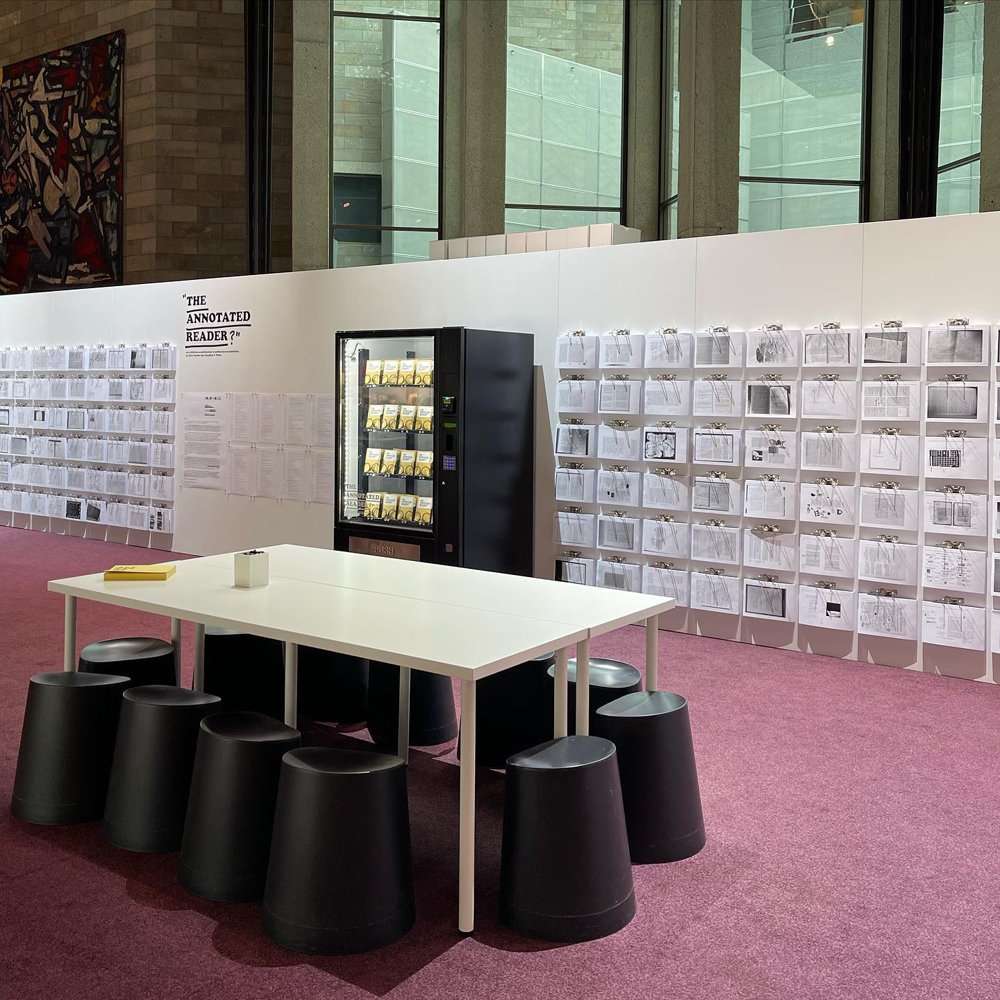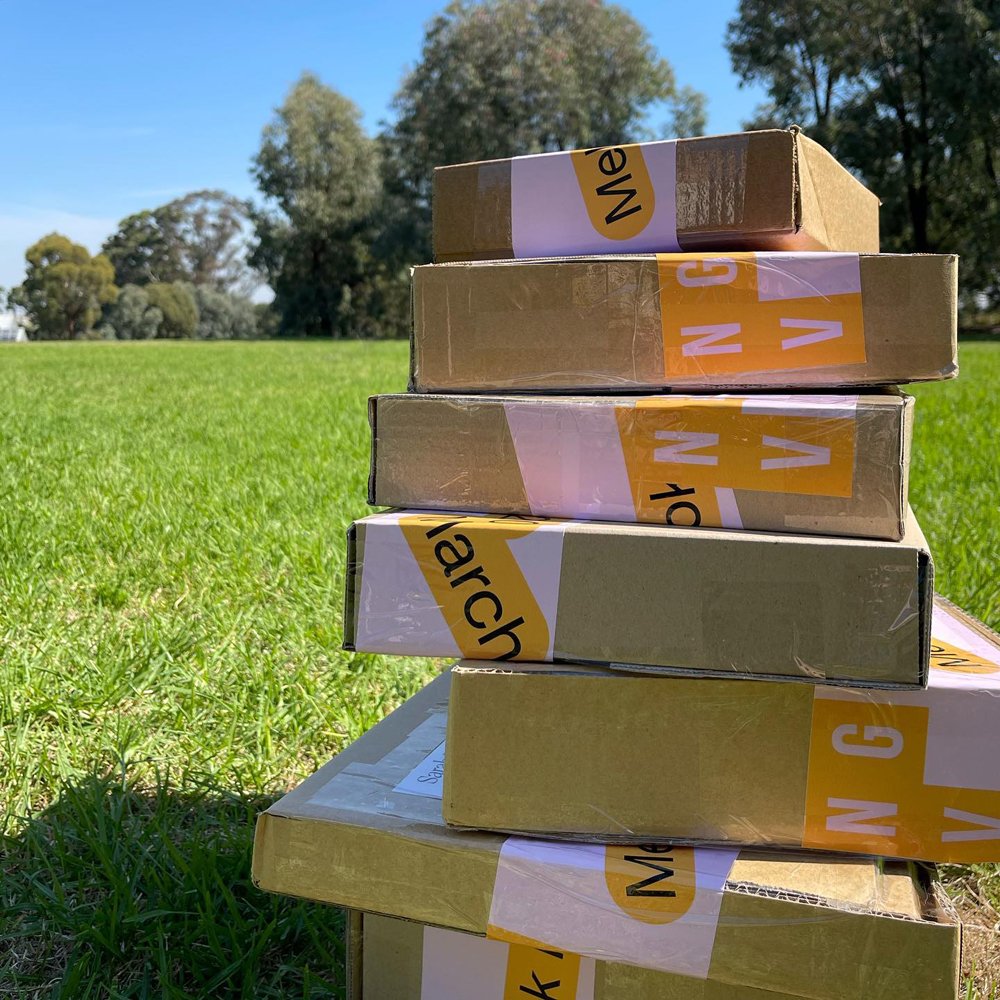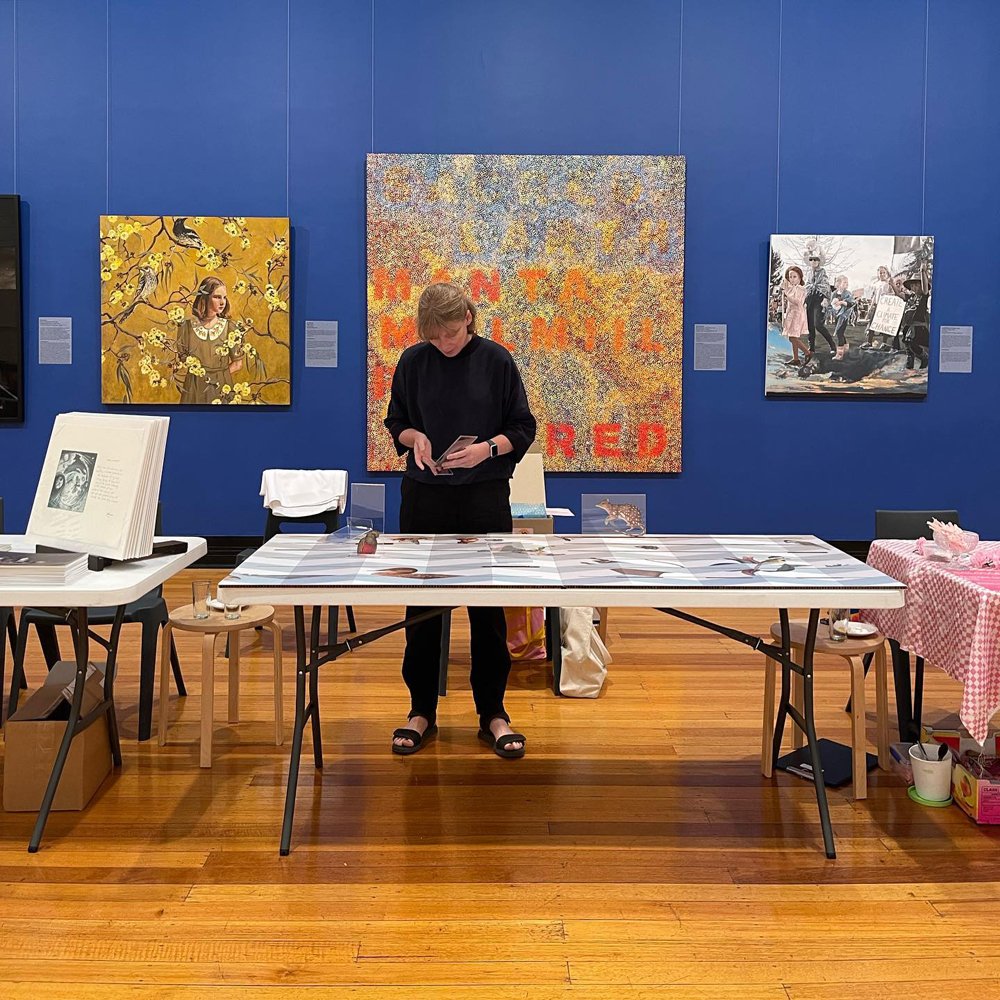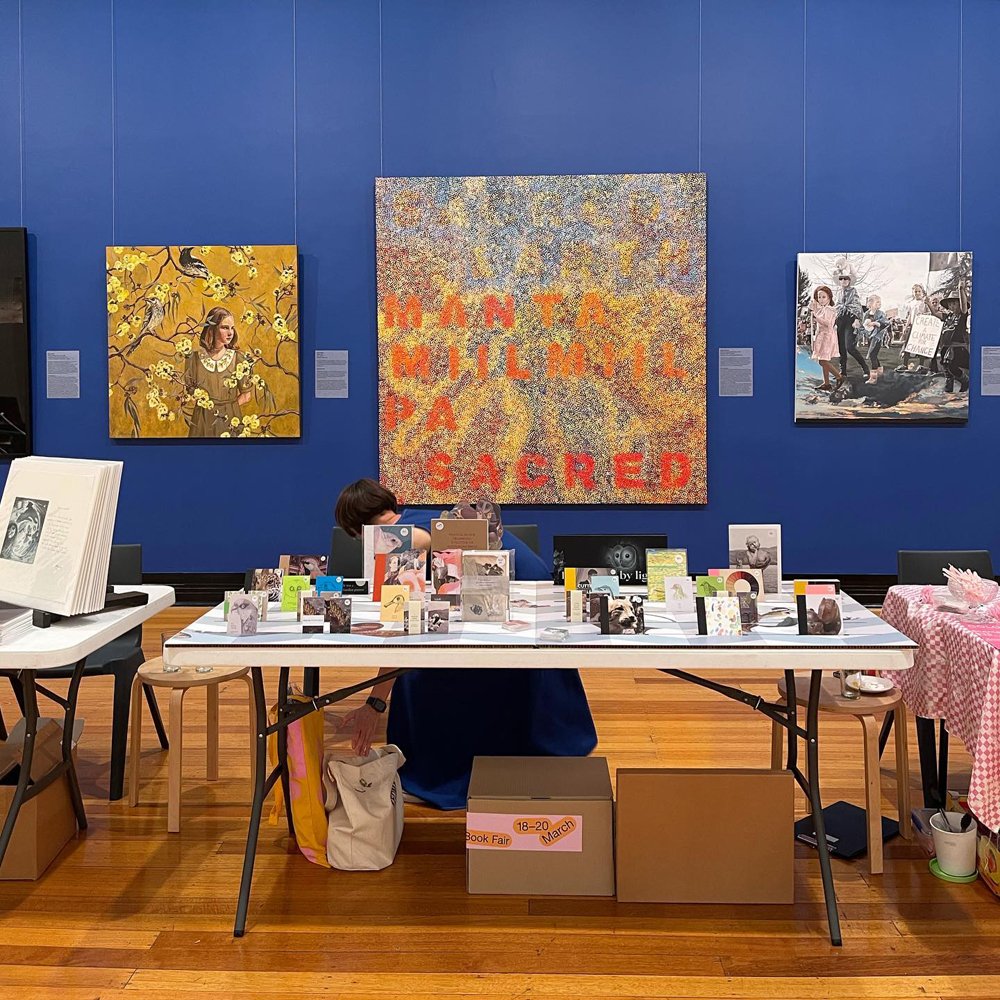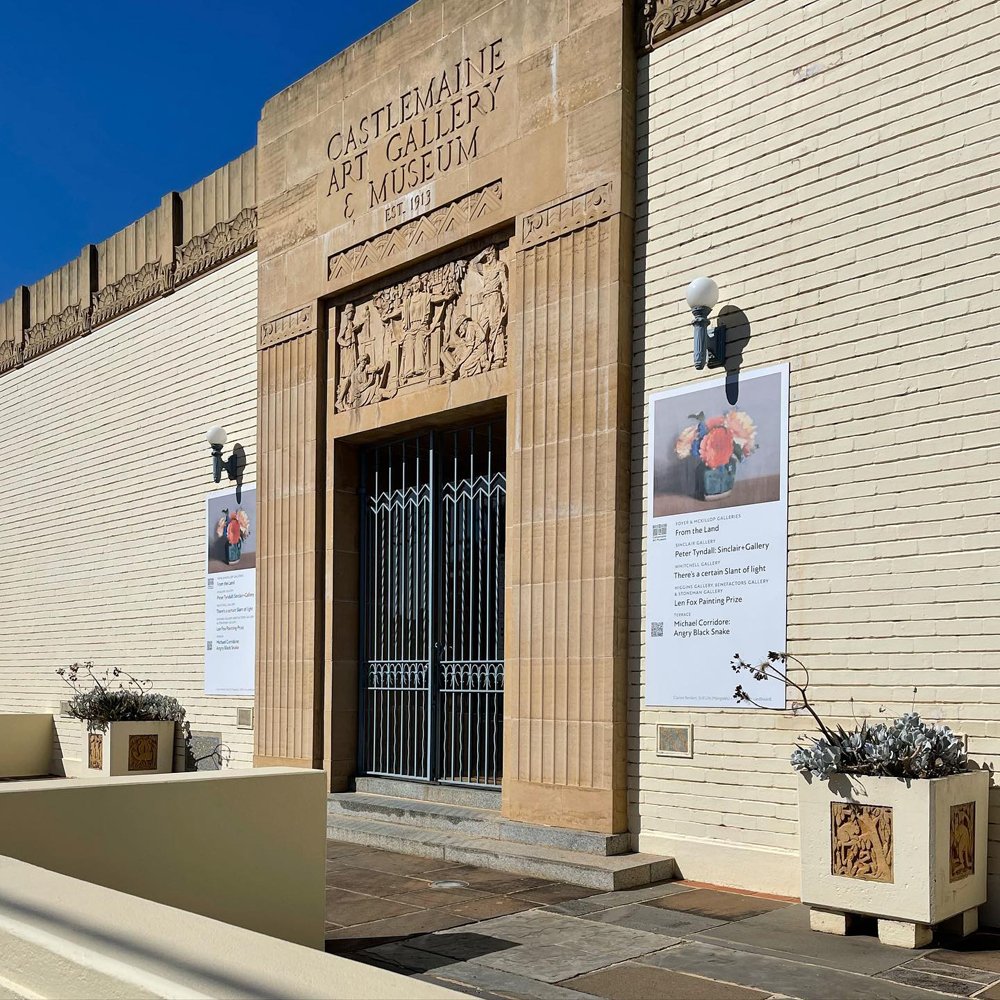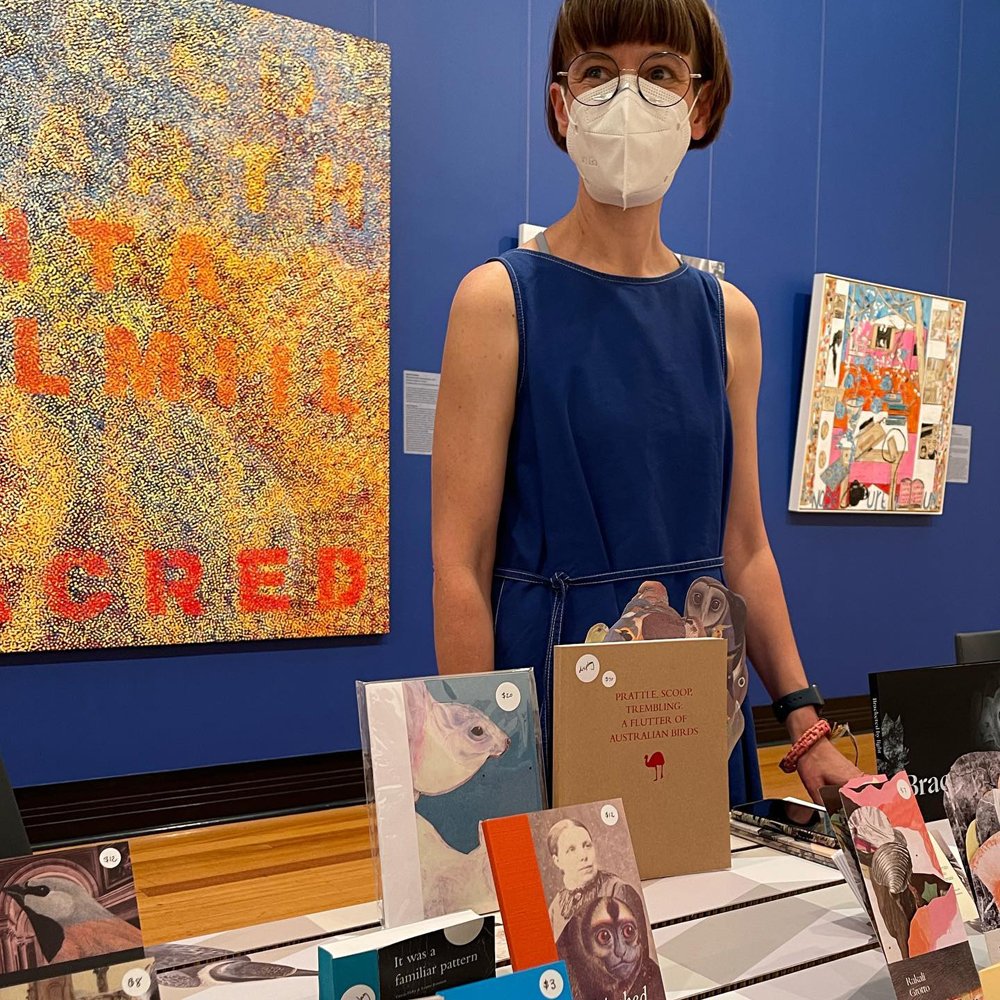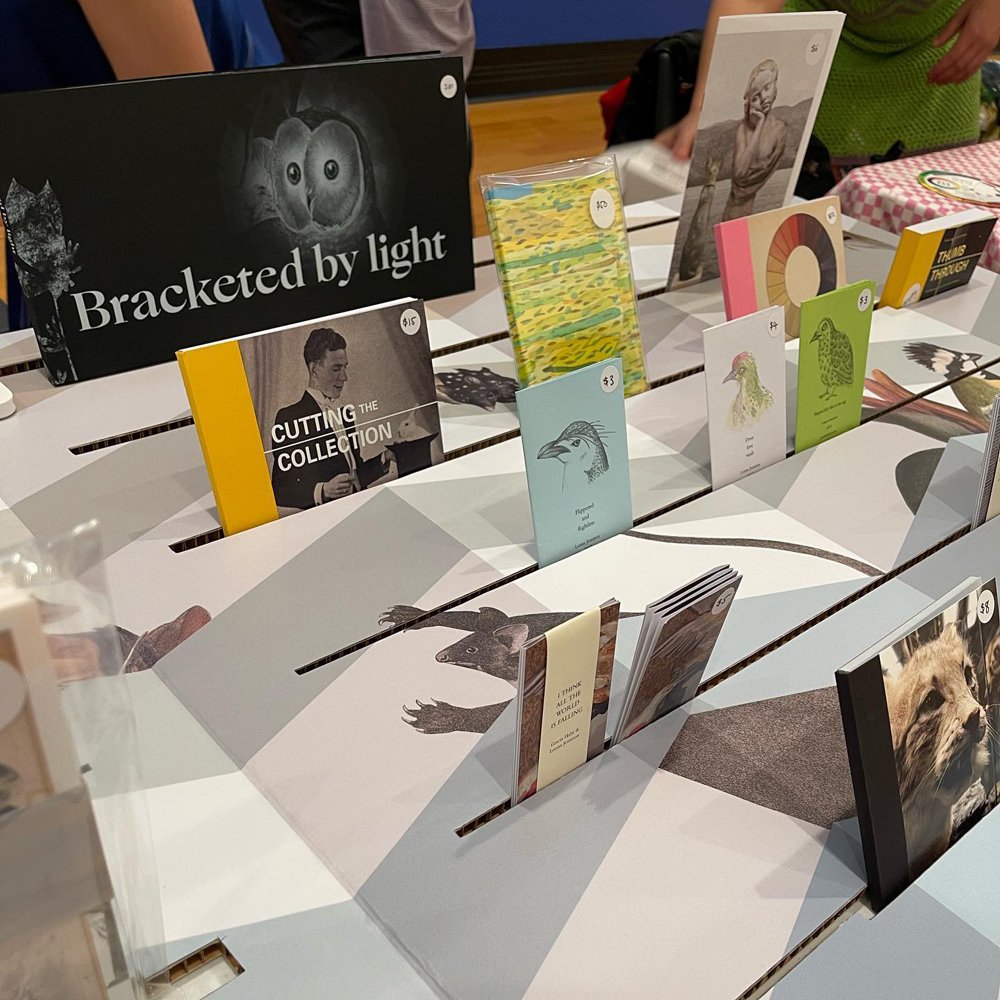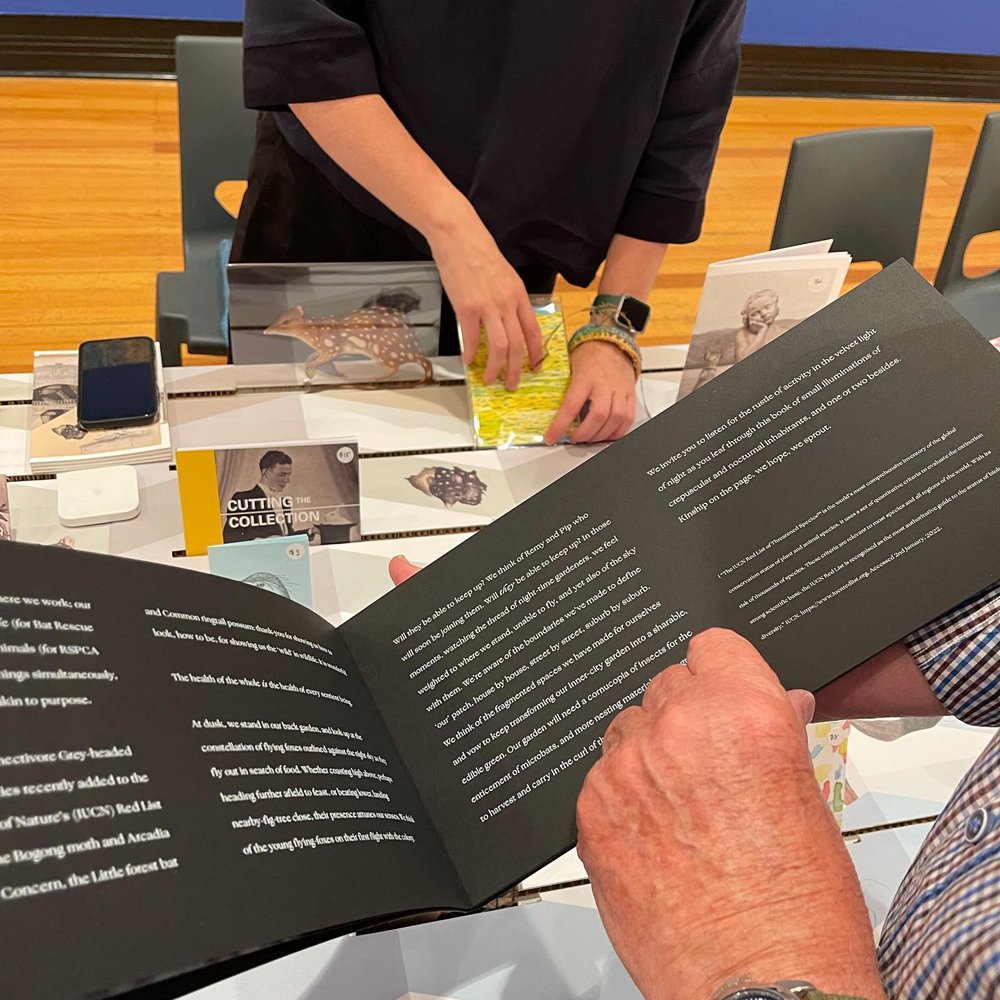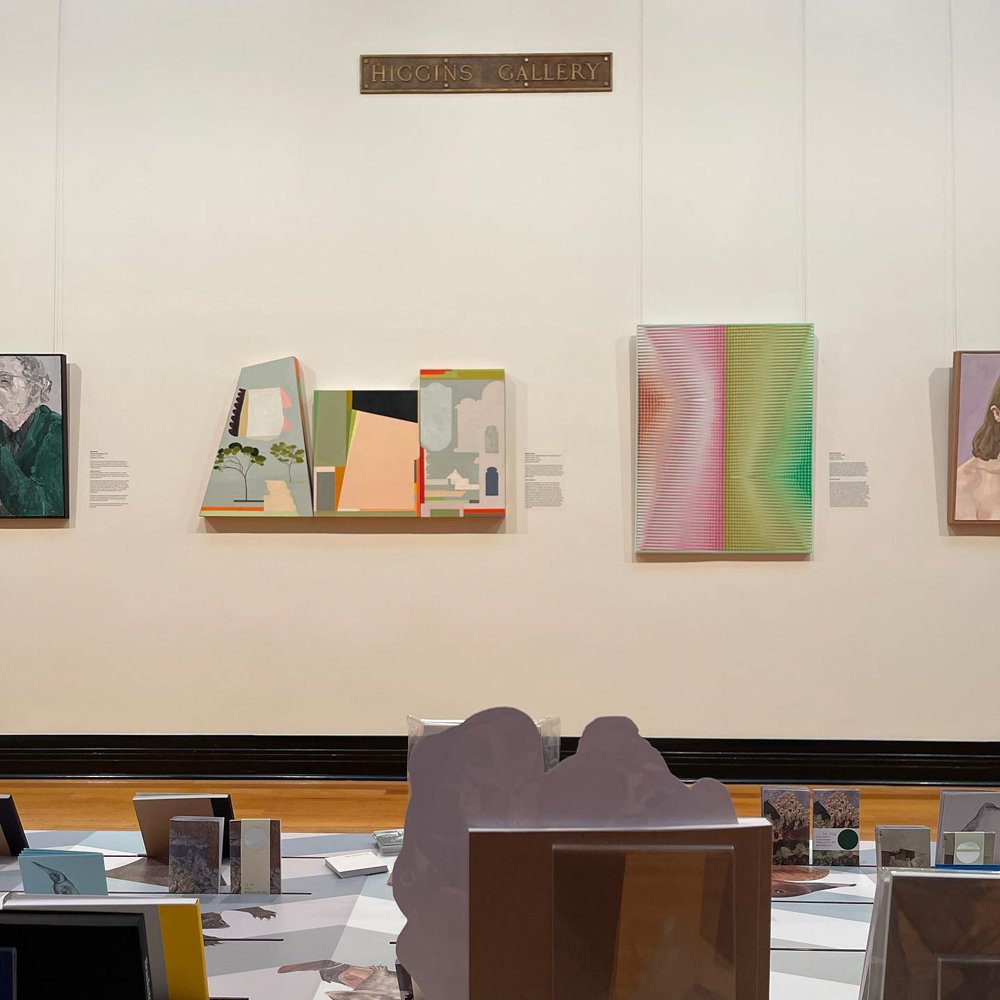BRACKETED BY LIGHT
We invite you to listen for the rustle of activity in the velvet light of night as you leaf through this book of small illuminations of crepuscular and nocturnal inhabitants, and one or two besides. Kinship on the page, we hope, we sprout.
Gracia Haby & Louise Jennison
Bracketed by light
2022
26 page, perfect bound artists’ book, with 24 Indigo Digital White leaves on 310gsm Earl Black and two hand cut leaves on 110gsm PopTicks Black, bound in Indigo Digital White on 310gsm Earl Black, 160mm x 345mm
Printed by Bambra
Bound by Louise Jennison
Edition of 100
Bracketed by light was released into the wild from our stall at the eighth NGV Melbourne Art Book Fair, in the Great Hall, NGV International (Friday 18th – Sunday 20th of March, 2022).
Editions have since been acquired by the National Library of Australia, State Library of New South Wales, State Library Victoria, University of Melbourne’s Baillieu Library, and State Library of Queensland.
Grey-headed flying fox Pteropus poliocephalus
Population trend: Decreasing
Number of mature individuals: 467,000*
Habitat type: Forest, Caves and Subterranean Habitats (non-aquatic),
Artificial/Terrestrial, Introduced vegetation
Little forest bat Vespadelus vulturnus
Population trend: Decreasing
Habitat type: Forest
Common ringtail possum Pseudocheirus peregrinus
Population trend: Stable
Habitat type: Forest, Savanna, Artificial/Terrestrial
* IUCN, January, 2022
●
CREPUSCULAR AND NOCTURNAL INHABITANTS FOUND WITHIN, AND ONE OR TWO CAUGHT IN THE SHIFT CHANGE OF ALL THINGS, INCLUDE,
a female and juvenile pair of Satin bowerbirds (Ptilonorhynchus violaceus) attributed to Louisa Atkinson from ‘Natural history and botanical drawings’, ca. 1849–1872
a Tawny frogmouth (Podargus strigoides)
a Powerful owl (Ninox strenua)
an Eastern grass owl (Tyto longimembris)
a parliament of Tasmanian masked owls (Tyto novaehollandiae castanopss) drawn by Silvester Diggles from ‘Ornithology of Australia. Volume 1, commences with Acquila and ends with Smicrornis’, ca. 1863–1875
a pair of Grey-headed flying foxes
a pair of Gould’s wattle bats (Chalinolobus gouldii)
a colony of Chocolate wattled bats (Chalinolobus morio)
a Brush-tailed bettong (Bettongia penicillata)
a Gould’s mouse (Pseudomys gouldii) drawn and lithographed by J. Gould and H.C. Richter from John Gould’s ‘The mammals of Australia’, volume 3, 1863 (State Library Victoria)
a Brushtail possum (Trichosurus vul pecula) photographed by Frederick Stanley Grimes’s from ‘Possums and porpoises’, 23rd September, 1940, part of ACP Magazines Ltd, photographic archive including Pix magazine negatives, 1930s–1980s
an Eastern yellow robin (Eopsal tria australis) upon a conical nest at dawn
a Tawny frogmouth photographed by Rex Hazlewood from ‘Birds’, ca. 1911–1929
a spot of Eastern quolls (Dasyurus viverrinus)
a Rakali (Hydromys chrysogaster)
a mischief of Brush-tailed phascogales (Phascogale tapoatafa)
a Hapalotis arboricola (a species later identified to be a Black rat) drawn by Gerard Krefft from ‘Gerard Krefft album of watercolour drawings’, ca. 1857–1858, 1861, 1866
a Ringtail possum (listed as an Opossum)
photograph from The Rose Series postcards, Rose Stereograph Co, ca. 1920–1954 (State Library Victoria)
a Batwing moth (Chelepteryx collesi)
an Emperor gum moth (Antheraea eucalypti) drawn from nature by Harriet Scott and on stone by E. Thomas from Alexander Scott and Helena & Harriet Scott’s ‘Australian Lepidoptera’: editions of 1864 & 1891, two hand coloured lithographic plates of unpublished ca. 1855 edition; original artwork for title wrappers by Joseph Selleny
a Labyrinthine ghost moth (listed as Rhizopsyche swainsoni) drawn from nature by Helena Scott and on stone by E. Thomas from Alexander Scott and Helena & Harriet Scott’s ‘Australian Lepidoptera’
a “Moth caught at Earlston 22nd July, 1844” drawn by Thomas Scott from ‘Sketches. 1822. Van Diemen’s Land’, 1822–1847
a pair of Common short-necked turtles (Emydura macquarii)
a Sugar glider (Petaurus breviceps)
a Long-nosed bandicoot (Perameles nasuta)
a Lesser bilby (Macrotis leucura)
a colony of Gould’s long-eared bats (Nyctophilus gouldi) drawn by James Stuart from ‘Natural history drawings of marsupials, reptiles and rodents’, ca. 1831–1841
a Common wombat (Vombatus ursinus) Victorian Railways photograph of ‘Wendy the Wombat, Healesville Sanctuary’, April, 1946, Victoria Railways collection. P series (State Library Victoria).
PLANTS AND LANDSCAPES FOUND WITHIN INCLUDE,
landscapes by Georgiana Lowe from an album of drawings of New South Wales views, ca. 1842–1850
plants drawn by E.D. Smith and engraved by J. Watts from ‘Flora Australasica, or, A selection of handsome, or curious plants, natives of New Holland, and the South Sea islands’, 1928 (State Library Victoria)
drawings of plants by and after Thomas Watling from six albums comprising 745 watercolours, ‘New South Wales drawings’ (‘The Lambert drawings’), including ‘Drawings of Plants of New South Wales’, volume 5, ca. 1797.
(From the collection of Mitchell Library, State Library of New South Wales unless listed otherwise.)
﹏
RELATED LINKS,
NGV MELBOURNE ART BOOK FAIR
#BRACKETEDBYLIGHT
LITTLE FOREST BAT, ROSETTA
BIRD’S EYE VIEW: PERSPECTIVES ON ART AND THE SCIEND OF ORNITHOLOGY TALK AT MELBOURNE MUSEUM
RELATED POSTS,
UNDERSTORY
FROM DREAMWEAVER
BIRDS, WE’RE CURIOUS FANS
Q & A
THIS TIME LAST WEEK
LEAF THROUGH
FAIR BOUND
CREPUSCULAR AND NOCTURNAL INHABITANTS
AFTER BAT COMES BAROQUE POSSUM
REMY & PIP
HALLOZEEN; HELLO REMY
THE BEGINNING
From the introduction to Bracketed by light
In many ways, this artists’ book is because of, and for, six animals we recently fostered and are currently fostering, for their release back into the wild.
To Remy and Pip, two orphaned Grey-headed flying fox pups.
To Rosetta, an adult Little forest bat, so micro to the mega previous, but just as clever and awe-inspiring, a flutter of agility.
To Ruby, Clover, and Atlas, a brightness of Common, in name only, ringtail joeys.
To those who require foraging resources and roosting sites.
To the ingenious ecological kindness of the pollinators and seed dispersers.
The echolocators catching insects on the wing. The leaf-consuming fuel-reducers.
The intricate connection of all things.
Together, we shared, and share, our home, and, by turn, the table upon which the book now resting in your hands was bound. The table upon which we measured the forearms of the flying fox pups, then, and weigh the ringtails to chart their progress, now, continues to serve an omnium gatherum of roles, revealing not only our working process, but our beliefs. Our home is where we work; our home is where we are learning to care for wildlife (for Bat Rescue Bayside), and continue to care for domestic animals (for RSPCA Victoria). We might not be able to do these things simultaneously, but in the juggle, for us, comes something akin to purpose.
From the canopy-feeding frugivore and nectivore Grey-headed flying foxes, one of 124 Australian species recently added to the International Union for Conservation of Nature’s (IUCN) Red List of Threatened Species[i], alongside the Bogong moth and Arcadia velvet gecko, to those listed Least Concern, the Little forest bat and Common ringtail possum: thank-you for showing us how to look, how to be, for showing us the ‘wild’ in wildlife. It is wonderful!
The health of the whole is the health of every sentient being.
At dusk, we stand in our back garden, and look up at the constellation of flying foxes outlined against the night sky as they fly out in search of food. Whether coasting high above, perhaps heading further afield to feast, or beating lower, landing nearby-fig-tree close, their presence attunes our senses. We think of the young flying-foxes on their first flight with the colony. Will they be able to keep up? We think of Remy and Pip who will soon be joining them.
Will they be able to keep up? In those moments, watching the thread of night-time gardeners, we feel weighted to where we stand, unable to fly, and yet also of the sky with them. We’re aware of the boundaries we’ve made to define ‘our’ patch, house by house, street by street, suburb by suburb. We think of the fragmented spaces we’ve made for ourselves and vow to keep transforming our inner-city garden into a sharable, edible green. Our garden will need a cornucopia of insects for the enticement of microbats, and more nesting materials for ringtails to harvest and carry in the curl of their tails.
We invite you to listen for the rustle of activity in the velvet light of night as you leaf through this book of small illuminations of crepuscular and nocturnal inhabitants, and one or two besides. Kinship on the page, we hope, we sprout.
Notes:
[i] “The IUCN Red List of Threatened Species™ is the world’s most comprehensive inventory of the global conservation status of plant and animal species. It uses a set of quantitative criteria to evaluate the extinction risk of thousands of species. These criteria are relevant to most species and all regions of the world. With its strong scientific base, the IUCN Red List is recognised as the most authoritative guide to the status of biological diversity.” IUCN. https://www.iucnredlist.org. Accessed 2nd January, 2022.
